Travel hacking 101: A beginner’s guide to travel hacking like a pro
When I started travel hacking 11 years ago, it was an obscure “hobby” that few had heard about and most dismissed as a scam . Nowadays, seemingly everyone is doing it to some degree. Whether getting in on the latest credit card promotion or snagging a first-class seat for the price of coach, travel hacking has become more popular than ever.
It’s the easiest way to save on travel and improve your experience. Utilizing travel hacking methods, you can fast-track your way to top-tier elite status and earn frequent flyer miles without ever stepping on a plane.
There is endless information about maximizing every dollar (and mile) spent. But if you’re new to this “game” and just want a simple explanation of how it works, you’ve come to the right place.
Here is everything you need to know about getting started with travel hacking.

What is travel hacking?
Travel hacking involves earning frequent flyer miles or points through non-traditional methods and redeeming them for nearly-free travel.
The most common travel hacks include leveraging credit card welcome bonuses for premium cabin flights and taking advantage of sweet spots and generous routing rules to get the best deal on award flights.
How much are points and miles worth?
Points are worth 1-2 cents each, depending on the loyalty program and how you use them. You’ll generally get the highest value by redeeming points for premium cabin flights and luxury hotel stays. Some programs impose a fixed value on points, depending on the fare cost. For example, Southwest Rapid Rewards points are worth 1.3 cents towards Wanna Get Away fares.
The same goes for transferrable rewards. Most of them are worth at least one cent each towards direct travel bookings. For example, Chase Ultimate Rewards® are worth 1.25 cents each towards direct travel bookings for Chase Sapphire Preferred® Card cardholders and 1.5 cents for those with a Chase Sapphire Reserve® through Chase Travel℠.
The difference between points, miles, and rewards
Points, miles, and rewards are different types of loyalty currencies. There are exceptions, but airlines usually issue miles, while points come from hotel loyalty programs or bank rewards.
A good travel hacking strategy involves having a mix of all three currencies.
Transferable rewards
Thanks to their flexibility, transferable bank rewards are the gold standard of loyalty currency. You can transfer them to airline miles or hotel points, usually at a 1:1 ratio or better.
Examples of transferrable rewards include Amex Membership Rewards, Capital One Venture Rewards miles, Chase Ultimate Rewards®, and Citi ThankYou® points.
Airline miles
You might be wondering if it’s worth earning airline miles when you can just transfer your bank rewards points instead.
Well, you should earn airline miles from a co-branded airline credit card for several reasons. For starters, you can supplement welcome bonuses from airline cards with a bonus from a transferrable rewards card to reach your travel goals faster.
In addition, some airlines incentivize you to earn miles (through a co-branded credit card or otherwise). For example, American Airlines counts all co-branded credit card spending towards elite status. Meanwhile, Southwest Rapid Rewards issues the Companion Pass after you earn 125,000 points in a calendar year (which increases to 135,000 next year). Earning airline miles can pay off.
Hotel points
Hotel points can go a long way in reducing out-of-pocket travel expenses. You can earn hotel points from co-branded hotel credit cards, by shopping online, and even by participating in surveys. Hotel credit cards offer generous welcome bonuses, with perks like elite status and annual free nights.
Examples of hotel points you should consider earning include World of Hyatt, Marriott Bonvoy, Hilton Honors, and IHG One Rewards.
How to start travel hacking
Travel hacking is fun and rewarding but can also be a lot of work. There is a wealth of information about ways to earn and burn points for maximum value. But if you’re just learning and want to know the basics, here’s a step-by-step guide to getting started.
Step 1: Set a goal
Before you embark on your travel hacking journey, you’ll want to set a goal. Are you hoping to redeem miles for international travel ? Or perhaps you’re saving up for a family trip to Disneyland. Regardless of your goals, it’s important to identify them early on to determine which credit cards and loyalty programs will help you get there.
Step 2: Choose your rewards program(s)
Once you’ve determined your travel goals, it’s time to pick your loyalty programs. Start with your home airport; if you live in an airline hub city, that airline can be a good starting point. There’s no sense in earning Southwest points if you live in Alaska. You might be better off with the Alaska Mileage Plan program since the airline serves the region and offers domestic and international partners. You’ll have more opportunities to redeem miles, and if you fly the airline often enough, you’ll even earn elite status.
When choosing a loyalty program, keep partner airlines in mind. For example, if you’re saving up for a Hawaiian vacation and want to fly United, you should consider collecting Turkish Miles&Smiles instead. Turkish Airlines is a Star Alliance member, like United, and offers domestic United flights for just 15,000 miles round-trip in economy. Exploring partner programs can help you save on award travel, stretching your miles further.
Choosing a hotel loyalty program might be easier. Think about which hotels you like when traveling and which elite benefits you care about. Most hotel loyalty programs let you earn top-tier status from credit cards alone, so think about which programs offer the best perks and properties in the destinations you like to travel to.
Here’s a look at every major hotel program’s global footprint to help you choose:
- Marriott Bonvoy: Over 8,000 properties in 139 countries
- Hilton Honors: Over 7,000 hotels in 122 countries
- Choice Privileges: Over 7,000 hotels in 40 countries
- IHG One Rewards: Over 6,000 properties worldwide
- Radisson Rewards: Over 1,700 hotels worldwide
- World of Hyatt: Over 1,150 hotels in 70 countries
While it’s good to identify at least one airline and hotel program, you shouldn’t put all your eggs in one basket. Try to collect at least one transferable rewards currency, so you’re not limited to only a few programs.
Transferrable rewards can also protect you against program devaluations — if one airline or hotel increases its redemption requirements, you can transfer your points to another.
Here are some of the most popular transferrable rewards programs:
- American Express Membership Rewards®
- Bilt Rewards
- Capital One Miles
- Chase Ultimate Rewards®
- Citi ThankYou® Rewards
Step 3: Choose a credit card
Once you’ve identified the loyalty program you want to earn points with (and incorporated at least one transferrable currency), it’s time to find a credit card.
When choosing a credit card, you should consider the following features:
Welcome bonus
A high welcome bonus will help you achieve your travel goals much faster. Some credit card bonuses are high enough to cover a round-trip international business class ticket. You’ll incur a 2-5 point credit score hit from every inquiry, so make it count. You should aim for a welcome bonus of at least 50,000 points, and plenty of cards meet that criteria.
Credit card application rules
Remember that some banks have strict application rules when applying for credit cards. For example, American Express limits welcome bonuses to one per lifetime. Meanwhile, Chase’s infamous 5/24 rule prevents you from being approved for a new card if you’ve had five or more in the last 24 months.
Be sure to familiarize yourself with these rules before applying for a card to avoid unnecessary rejection.
Travel perks
Many travel rewards cards come with valuable perks like elite status, airport lounge access, airline fee credits, and annual free nights. Think about which of these perks you’re likely to maximize every year. Doing so can help you choose the best credit card and figure out if the card is worth renewing every year.
Annual fees
Travel hacking can get expensive if you’re not careful about annual fees. Rewards credit card annual fees range from $89-$695. It’s easy to get tempted by a high welcome bonus, but annual fees can dent your travel budget if you’re not careful.
Before settling on a credit card, explore the lower or no-annual-fee version to see if it’s a better fit.
For example, the Capital One Venture X Rewards Credit Card may seem appealing with its welcome bonus, but you’ll pay a lower annual fee with the Capital One Venture Rewards Credit Card .
Step 4: Other ways to earn points
Credit card welcome bonuses are the fastest way to earn points, but they’re not the only way. You can earn points from shopping portals, dining rewards programs, completing surveys, and more.
Shopping portals:
- American AAdvantage eShopping
- Alaska Mileage Plan Shopping
- Delta SkyMiles Shopping
- Free Spirit Online Mall
- Hilton Honors Shopping Mall
- JetBlue TrueBlue Shopping
- Southwest Rapid Rewards Shopping
- United MileagePlus Shopping
Dining rewards programs:
- American AAdvantage Dining
- Alaska Mileage Plan Dining
- Delta SkyMiles Dining
- Free Spirit Dining
- Hilton Honors Dining
- IHG Rewards Club Dining
- JetBlue TrueBlue Dining
- Marriott Eat Around Town
- Southwest Rapid Rewards Dining
- United MileagePlus Dining
Airline companion passes
Airline companion passes are one of the best travel hacking tools to stretch your points further. Some passes are issued annually as a credit card benefit, while others have to be earned. In most cases, you can save 50% or more on airfare with a companion pass.
Here’s a look at companion passes you should consider adding to your travel hacking arsenal:
Alaska Airlines Famous Companion Fare
The Alaska Airlines Famous Companion Fare is a great travel hacking tool for west coast flyers. The pass is issued as part of the welcome bonus on the Alaska Airlines Visa® credit card and reissued annually. Considering the Alaska card has a reasonable annual fee, this is a terrific benefit.
Simply book a companion on the same flight and pay just $99 (plus taxes and fees).
American AAdvantage
You can get an American Airlines Companion Certificate from one of four co-branded credit cards. The spending requirement ranges from $20,000 to $30,000 per year. Once you’ve secured the certificate, you can use it to cover a companion’s airfare for just $99 plus taxes and fees.
- Barclays Aviator Red World Elite Mastercard: Spend $20,000 in a year
- AAdvantage Aviator Silver Mastercard: Spend $20,000 in a year
- AAdvantage Aviator Business Mastercard: Spend $30,000 in a year
- CitiBusiness® / AAdvantage® Platinum Select® Mastercard®: Spend $30,000 in a year
The American Airlines Companion Certificate is only valid on round-trip economy class tickets within the contiguous U.S. For Puerto Rico and U.S. Virgin Island residents, the pass is good for round-trip flights originating in those destinations.
British Airways Travel Together Ticket
The British Airways Travel Together Ticket is issued to British Airways Visa Signature® cardholders who spend $30,000 in a calendar year . This perk can take the sting out of high fuel surcharges imposed on British Airways award tickets transiting through London.
The Travel Together Ticket is valid in all cabins, including first class and international fares .
Delta Companion Passes
Delta has two companion passes: one is valid on economy class tickets only, while the one issued through the Delta SkyMiles® Reserve Card can be applied to first-class travel. You’ll pay just $80 for your companion’s ticket, which is a bargain — especially when using it for first-class flights.
Note that the Delta companion tickets are not valid on award flights or basic economy tickets.
Here’s a list of cards you can earn the companion pass with:
- Delta SkyMiles® Platinum American Express Card
- Delta SkyMiles® Platinum Business American Express Card
- Delta SkyMiles® Reserve American Express Card
- Delta SkyMiles® Reserve Business American Express Card
Iberia airfare discount
Iberia offers a $1,000 airfare discount on two tickets booked on the same flight. You can earn it by spending $30,000 on the Iberia Visa Signature® Card per calendar year. It’s valid in all cabins, providing ultimate flexibility.
Southwest Companion Pass
The Southwest Companion Pass is one of the most popular travel hacking tools out there. You can get one after completing 100 segments or earning 125,000 Southwest points in a calendar year, though the requirement is increased to 135,000 points in 2023. However, points earned from the Southwest credit card welcome bonuses count towards the pass.
It only takes one business or one personal card welcome bonus to earn the Southwest Companion Pass:
- Southwest Rapid Rewards® Plus Credit Card : Earn 50,000 points after you spend $1,000 within the first three months of account opening
- Southwest Rapid Rewards® Priority Credit Card: Earn 50,000 points after spending $1,000 within the first three months of account opening
- Southwest Rapid Rewards® Premier Credit Card: Earn 50,000 points after spending $1,000 within the first three months of account opening
- Southwest Rapid Rewards® Premier Business Credit Card: Earn 80,000 bonus points after spending $5,000 within the first three months of account opening
Redeeming points
You’ve accrued thousands of points and are ready to start booking your dream vacation. Now what? Redeeming points isn’t exactly easy, and that’s by design. Loyalty programs count on members not doing their due diligence to get as much out of their points and miles as possible.
While booking the first award that pops up in the search result is easy, that’s not the best way to stretch your points. Here are a few concepts you should familiarize yourself with to get the most out of your points:
Stopovers and open jaws
While a simple round-trip flight is great, you can stretch your points further by incorporating stopovers and open jaws into your flights.
A stopover is when you visit an additional destination on your way to your final destination or home. Several airline loyalty programs allow you to add a free stopover to award flights:
- Alaska Mileage Plan (free stopover on one-way awards)
- ANA Mileage Club ( one free stopover and one open-jaw on round-trip awards)
- Cathay Pacific Asia Miles ( up to four destinations per itinerary)
- Emirates Skywards (one free stopover per round-trip)
- Japan Airlines Mileage Bank ( three stopovers or two stopovers and one open-jaw )
- Singapore Krisflyer ( one stopover and one open-jaw per roundtrip flight )
- United MileagePlus (one free stopover within the same region per round-trip flight)
Open jaws are another great way to add a destination to your itinerary. An open jaw is when you return from a different destination than you flew into.
One example of an open-jaw ticket is if you fly from New York to London and then return home from Paris. Many people book this route with Avios because British Airways imposes hefty fuel surcharges on flights departing from London. Savvy travelers will take a train to Paris and fly back from Charles de Gaulle to save money.
But booking an open-jaw doesn’t have to be about saving money. It’s a great way to see multiple destinations on the same trip, especially in Europe, where connecting flights are relatively cheap. Here’s a list of loyalty programs that allow open jaws on round-trip award tickets:
Fourth and fifth night free
Some hotel programs offer free nights when you redeem points for consecutive nights at one property. These deals can help you save as much as 25% on an award stay. The most generous is IHG One, which offers a fourth night free to IHG Rewards Traveler, IHG Rewards Premier, and IHG Rewards Premier Business card members. Meanwhile, Marriott members and Hilton elites get the fifth night free on award stays.
These discounted award rates can help you save thousands of points and book extra free nights at no cost. Factor this into your award-booking strategy, and you’ll stretch your points further.
Take advantage of sweet spots
Sweet spots are awards that are significantly discounted compared to other loyalty programs. Both hotels and airlines have sweet spot awards that can help up your travel hacking game.
For example, Turkish Airlines offers round-trip economy class tickets between the mainland U.S. and Hawaii for just 15,000 miles. That’s what some loyalty programs charge for a one-way ticket, making this an excellent sweet spot award.
Travel hacking is all about finding ways to stretch your points further. You can do this with tactics like searching for generous credit card welcome bonuses, booking flights with stopovers and open jaws, taking advantage of hotel programs that offer free nights, and looking for airline sweet spots.
With a little bit of effort, you can travel hack your way to (nearly) free travel.
Happy travels!
Your money deserves more than a soundbyte.
Get straightforward advice on managing money well.
Most financial content is either an echo chamber for the "Already Rich" or a torrent of dubious advice designed only to profit its creators. For nearly 20 years, we've been on a mission to help our readers acheive their financial goals with no judgement, no jargon, and no get-rich-quick BS. Join us today.
We hate spam as much as you do. We generally send out no more than 2-3 emails per month featuring our latest articles and, when warranted, commentary on recent financial news. You can unsubscribe at any time.
What is travel hacking and how do I start?
Advertiser disclosure.
We are an independent, advertising-supported comparison service. Our goal is to help you make smarter financial decisions by providing you with interactive tools and financial calculators, publishing original and objective content, by enabling you to conduct research and compare information for free - so that you can make financial decisions with confidence.
Bankrate has partnerships with issuers including, but not limited to, American Express, Bank of America, Capital One, Chase, Citi and Discover.
- Share this article on Facebook Facebook
- Share this article on Twitter Twitter
- Share this article on LinkedIn LinkedIn
- Share this article via email Email

- • Personal finance
- • Credit cards

- • Rewards credit cards
- • Travel credit cards
The Bankrate promise
At Bankrate we strive to help you make smarter financial decisions. While we adhere to strict editorial integrity , this post may contain references to products from our partners. Here's an explanation for how we make money . The content on this page is accurate as of the posting date; however, some of the offers mentioned may have expired. Terms apply to the offers listed on this page. Any opinions, analyses, reviews or recommendations expressed in this article are those of the author’s alone, and have not been reviewed, approved or otherwise endorsed by any card issuer.
At Bankrate, we have a mission to demystify the credit cards industry — regardless or where you are in your journey — and make it one you can navigate with confidence. Our team is full of a diverse range of experts from credit card pros to data analysts and, most importantly, people who shop for credit cards just like you. With this combination of expertise and perspectives, we keep close tabs on the credit card industry year-round to:
- Meet you wherever you are in your credit card journey to guide your information search and help you understand your options.
- Consistently provide up-to-date, reliable market information so you're well-equipped to make confident decisions.
- Reduce industry jargon so you get the clearest form of information possible, so you can make the right decision for you.
At Bankrate, we focus on the points consumers care about most: rewards, welcome offers and bonuses, APR, and overall customer experience. Any issuers discussed on our site are vetted based on the value they provide to consumers at each of these levels. At each step of the way, we fact-check ourselves to prioritize accuracy so we can continue to be here for your every next.
Editorial integrity
Bankrate follows a strict editorial policy , so you can trust that we’re putting your interests first. Our award-winning editors and reporters create honest and accurate content to help you make the right financial decisions.
Key Principles
We value your trust. Our mission is to provide readers with accurate and unbiased information, and we have editorial standards in place to ensure that happens. Our editors and reporters thoroughly fact-check editorial content to ensure the information you’re reading is accurate. We maintain a firewall between our advertisers and our editorial team. Our editorial team does not receive direct compensation from our advertisers.
Editorial Independence
Bankrate’s editorial team writes on behalf of YOU – the reader. Our goal is to give you the best advice to help you make smart personal finance decisions. We follow strict guidelines to ensure that our editorial content is not influenced by advertisers. Our editorial team receives no direct compensation from advertisers, and our content is thoroughly fact-checked to ensure accuracy. So, whether you’re reading an article or a review, you can trust that you’re getting credible and dependable information.
How we make money
You have money questions. Bankrate has answers. Our experts have been helping you master your money for over four decades. We continually strive to provide consumers with the expert advice and tools needed to succeed throughout life’s financial journey.
Bankrate follows a strict editorial policy , so you can trust that our content is honest and accurate. Our award-winning editors and reporters create honest and accurate content to help you make the right financial decisions. The content created by our editorial staff is objective, factual, and not influenced by our advertisers.
We’re transparent about how we are able to bring quality content, competitive rates, and useful tools to you by explaining how we make money.
Bankrate.com is an independent, advertising-supported publisher and comparison service. We are compensated in exchange for placement of sponsored products and services, or by you clicking on certain links posted on our site. Therefore, this compensation may impact how, where and in what order products appear within listing categories, except where prohibited by law for our mortgage, home equity and other home lending products. Other factors, such as our own proprietary website rules and whether a product is offered in your area or at your self-selected credit score range, can also impact how and where products appear on this site. While we strive to provide a wide range of offers, Bankrate does not include information about every financial or credit product or service.
Key takeaways
- Travel hacking can help you score free or discounted flights, hotel stays and more by strategically using rewards earned from credit cards.
- To get started, set a travel goal for yourself and investigate various airline rewards programs. You’ll then want to choose a travel credit card based on factors like your credit score, interest rates and the ability to transfer rewards to partner programs.
- Using shopping portals and dining rewards programs is another way to score extra points, along with taking advantage of card-linked offers from programs like Amex Offers and Chase Offers.
- Stay on top of “mistake fares” by signing up for notifications from airfare deal sites, and consider booking travel during award sales or off-peak travel seasons.
Over the last decade, travel hacking has become a mainstream phenomenon. That’s largely thanks to social media, with influencers showing off exotic destinations on Instagram, reached through the clever use of rewards.
And the appeal is widespread. Families can significantly bring down the cost of a Disney vacation , while the aspirational crowd can book first-class tickets for pennies on the dollar.
As someone who has been travel hacking for over a decade, I’ve seen and done it all. It’s a rewarding hobby that can open up a world of travel opportunities. By hacking flights and hotels, you can save substantially on these expenses.
What is travel hacking?
Travel hacking typically refers to the variety of ways you can earn points and miles toward future travel, often without flying or staying at hotels. It involves strategically using credit card points or miles, or those earned with airline and hotel programs, to score discounted (or free) travel and other perks.
How to start travel hacking
If all of that sounds exciting and you’re eager to get going, here are some tips to help you get started:
The first step in your travel hacking journey is to set a travel goal. Earning points without knowing what you’re working toward can be an exercise in futility. When I started back in 2011, I made the mistake of mainly accruing Delta SkyMiles and American AAdvantage miles for a trip to Europe. I learned pretty late that American Airlines had a weak route network to Europe at the time, and that United MileagePlus miles would have been a much better option back then.
Think about where you want to go well before you start focusing on how you’re earning points. Then, research the best rewards programs to get you there. Bankrate’s travel toolkit highlights a variety of credit card, airline and hotel rewards programs to help you make the best choice.
Find the right rewards credit card
The easiest way to boost your points balance is with a rewards credit card . After you sign up and get approved, you can typically earn a welcome bonus of 50,000 or more points after completing a spending requirement over three or more months. While welcome bonuses are a significant draw, you can also take advantage of category bonuses and annual spending bonuses to maximize your everyday spending long-term.
Those ongoing rewards should be an important factor in your travel rewards card decision . Most people will benefit from credit cards that earn transferable rewards like these:
- American Express Membership Rewards
- Citi ThankYou points
- Chase Ultimate Rewards
- Capital One miles
These currencies offer flexibility because you can transfer them to several airlines or hotel programs at a 1:1 ratio. If one transfer airline doesn’t have award space on your desired travel dates, then you can transfer them to one that does. You’ll have options and stay protected against possible program devaluations as well.
Once you have a general sense of which credit cards to apply for, make sure you qualify and prepare to meet any application requirements. Here are a few things to consider:
- Your credit score . As you might expect, the best travel rewards cards require good credit . To incorporate credit cards into your travel hacking strategy, you’ll need a score of at least 700. If you’re still working on it, consider waiting to apply when you have a better chance of approval.
- The application rules . Every bank has its own rules pertaining to credit card approvals. Chase has the infamous 5/24 rule that restricts welcome bonuses if you’ve applied for five or more credit cards in the last 24 months. Amex’s once-per-lifetime restriction means if you’ve earned a welcome bonus for one card, you likely won’t be able to earn the same bonus again. There are many more credit card application rules to be aware of. Knowing them before you hit “apply” improves your chances of being approved for a travel rewards credit card.
- How much you’ll pay . If you struggle with paying your credit cards off every month, travel hacking with credit cards is probably not for you. That’s because the interest rates on these credit cards are generally high and will negate any rewards you earn. If you’re not confident you can pay off your balances, you’re better off skipping these credit cards and using alternate methods to earn points and miles .
Use shopping portals
Shopping portals are the way to go if you want to further maximize your points and miles earnings. Nearly every major loyalty program has a shopping portal you can earn rewards with, whether it’s your card issuer or your airline of choice. You’ll earn at least one extra point per dollar spent, plus the points from your credit card.
You can even more easily ensure you’re earning the most points possible with a shopping portal aggregator like Cashback Monitor . Type the name of an online merchant, and you’ll get a list of shopping portals alongside their earn rates.
Many shopping portals also offer spend-based bonuses around the holidays and right before the school year starts. These can be pretty lucrative and help you reach your travel goals faster.
Sign up for dining rewards
Dining reward programs are similar to shopping portals in that they require minimal effort to earn extra points. You can join one of seven airline and three hotel-affiliated dining programs to earn up to 8 additional points per dollar spent, including:
- Alaska Airlines Mileage Plan Dining
- American Airlines AAdvantage Dining
- Choice Hotels Eat & Earn
- Delta SkyMiles Dining
- Hilton Honors Dining
- IHG One Rewards Dine & Earn
- JetBlue TrueBlue Dining
- Spirit Airlines Free Spirit Dining
- Southwest Airlines Rapid Rewards Dining
- United Airlines MileagePlus Dining
These programs can even offer first-dine bonuses and extra points when you write reviews or meet certain spending thresholds every year.
You can join all of these programs, but since they’re all part of the same network, you can’t register the same credit card with more than one program at a time. That shouldn’t be too challenging, even if you only have one credit card. Simply register your card with the program of your choice, earn the first-dine bonus and repeat with the other nine programs until you’ve earned them all. Don’t forget to use a credit card that earns bonus points on dining to maximize your earnings.
Get creative with earning rewards
Once you’ve gotten into the habit of maximizing your everyday purchases, it’s time to get creative. What else can you charge to your credit card while still maintaining a balance that you know you can pay off at the end of the month? I once convinced my boss to let me pay a $35,000 supplier invoice with my credit card. I’ve earned thousands of points on rent and mortgage payments through Plastiq . I’ve also used retail arbitrage to flip dresses worn by Kate Middleton and earn spending requirements.
Think outside the box and you could be well on your way to discovering new ways to boost your points.
What are the best travel hacks?
There are countless travel hacks out there, and the best ones are top secret (for good reason). But if you’re just getting started and want to keep things simple, here are the most valuable hacks to know:
Card sign-up bonuses
Credit card sign-up bonuses are by far the best way to get a lot of points within a short time frame. You may even piece together a luxury vacation by strategically applying for credit cards .
Just make sure you’re aware of any issuer rules that take into account how many cards you’ve applied for in the past. You should also be careful when applying to more than one card in a short time frame. Not only will you need to spend even greater amounts to get more than one bonus, but you can hurt your credit score and make yourself look risky to potential lenders.
Double (and triple) dipping
Double- or triple-dipping is one of the best travel hacks out there. Stacking travel hacking methods can help you earn significantly more miles. For example, let’s say you’re in the middle of a home renovation project — you’ve got expenses, and they’re big. If you can do some shopping online for your project, you can double-dip by earning rewards on your credit card and through an online shopping portal.
If you happen to have an Amex card, you could triple dip by taking advantage of Amex Offers . I’ve managed to do this for large expenses like travel bookings and furniture purchases. Before you buy, think about all the possible ways to earn points and find opportunities to combine them.
Mistake fares
There’s more to travel hacking than just earning and redeeming points. One of my favorite ways to hack travel is through mistake fares. Sometimes airlines mess up and publish fares well below market value. I’m talking about a $450 round-trip business class ticket to Shanghai or a $120 economy class ticket to Abu Dhabi. Over the years, there have been dozens of great mistake fares that travel hackers have taken advantage of.
In most cases, airlines have honored these mistake fares, which has been great for savvy travel hackers who managed to book them. Just know that you may need very flexible travel plans and dates to take advantage. A great way to stay on top of mistake fares is to sign up for alerts with Airfarewatchdog and The Flight Deal . These sites parse the web for amazing deals and share them on social media and their websites when they come around.
Maximizing award redemptions
When you’re ready to book that dream vacation you’ve been saving for, there are three types of awards you should look into: Sweet spots , off-peak award charts and award sales. Sweet spots, in particular, can help you save significantly on award flights.
Many airlines and hotel chains offer peak and off-peak award pricing. By being flexible with your travel dates, you can stretch your hard-earned points further.
How can I travel for free?
Despite what travel influencers like to put into their photo captains, there’s no such thing as free travel. You will almost always pay a fee to earn or redeem points. Whether it’s your credit card annual fee, award flight taxes or resort fees , there will always be costs.
But by leveraging credit cards, points and loyalty programs, you can book incredible travel experiences at a fraction of the cost.
The bottom line
Travel hacking can allow you to travel further and in bigger ways than booking with cash. From hotel, airline and transferable points currencies, you can travel for little to no relative cost by using credit cards to pay for your everyday expenses.
If you’re thinking about opening a travel rewards credit card, keep in mind your travel goals, the card’s sign-up bonus and benefits and how you plan to redeem the rewards you earn. From there, you can try more advanced methods of earning points such as through shopping portals or dining programs.
Don’t forget the responsibility that comes with credit card usage. Travel credit cards have higher interest rates, so be sure to pay your card off in full each month as often as you can.

How much are points and miles worth in 2024?
8 of the best ways to use points and miles for travel
Why you should use your issuer’s travel portal
How to earn elite airline status with credit cards
Annoying travel fees you can avoid with the right card lineup
9 major hotel chains with free breakfast
Traveler’s guide to the best frequent flyer programs
Traveling around the world with credit card points
Bankrate's Travel Toolkit
Bucket List

Travel Guides

Travel Hacking 101 – The Beginner’s Guide to Travel Hacking
Table of Contents
Have you ever wondered how some people travel the world so frequently? Wondering how to travel more for less? Travel hacking tips can help you turn your wanderlust into reality. This beginner’s guide to travel hacking will show you how to leverage credit card rewards, points, and miles to make your travel dreams come true while keeping your budget intact.
We have all sat on our couches scrolling through social media, seeing people’s posts while they travel the world and wondering how they manage to jet-set across the globe so often.
Traveling the world is a dream for so many of us, but the cost often makes it seem that this dream is out of reach.
The answer lies within the art of travel hacking. Often concealed from what we see on social media, a substantial component of the travel strategy for many influencers, business travelers, and frequent flyers revolves around the skillful use of points, miles, and rewards.
If you are from a Latin background, I know what you are thinking… “Credit cards are no good.” “Don’t ever get credit cards.” In many Latino households, we are taught that credit cards are your ruin and that you should never have one. We are often taught to fear credit cards and the uncontrollable debt that they can bring. Why? There are many reasons, stereotypes, and myths surrounding this topic. You can read more about them by clicking here.
You should know that there is a safe and strategic way of using credit cards to your benefit. I know you are gasping in Latina , but leveraging these miles and rewards programs can open up many doors to your travel dreams, and I am here to guide you through getting started. So, keep reading to learn what travel hacking is and how to use it to your benefit.
So what is Travel Hacking?
It is a strategy to accumulate and redeem rewards, miles, and points to make your travel aspirations a reality. The objective? To travel more, pay less, and indulge in extraordinary experiences that were once considered unattainable or reserved for a select few. It requires time, effort, and patience to research the best use of your miles and points.
This blog post is a comprehensive guide that will show you the ins and outs of travel hacking, empowering you with the knowledge and tools to embark on your own budget-friendly adventures that will leave you with unforgettable memories and extra money in your pocket.

Benefits of Travel Hacking
More travel.
Imagine a world where airfare and accommodation expenses no longer stop you from exploring new horizons because you only pay taxes on the flights and lodging, or lodging is entirely “free”. Travel hacking opens up so many possibilities for budget-conscious travelers.
A fancier travel experience
Do you want to experience the luxury of business class flights or deluxe suites in five-star hotels? With travel hacking strategies, these upgrades can become a regular occurrence.
Bigger travel budget
Flights and lodging tend to be the most significant expenses when it comes to travel. By saving on these two categories, you can allocate more funds for immersive activities like tasting the local cuisine, guided tours, and authentic cultural experiences.
Destination variety
Travel hacking gives you the freedom to explore a broader range of destinations without worrying about excessive costs.
Risks of Travel Hacking

It is vital to be aware of the potential risks and pitfalls that come with travel hacking. Some Latino parents’ myths and misconceptions about using credit cards stem from these risks. Here are eight of the most significant risks associated with travel hacking:
Debt Accumulation
Travel hacking requires responsible credit card use, including paying off your balances in full each month to avoid interest charges. If you are unable to manage your spending and credit card balances, you could accumulate debt that outweighs the value of the rewards you earn. High-interest rates on credit card debt can quickly counteract the travel savings you may earn by travel hacking.
Credit Score Impact
If you are new at travel hacking, create a strategy for opening credit cards for the sign-up bonuses. Opening too many cards too quickly may cause a temporary dip in your credit score. You may also be denied new cards as your credit score decreases. You can use websites like Credit Karma or Credit Sesame to gain. a general understanding of your credit score. However, please remember that there will be some variance between your actual credit score vs the score that these websites have listed for you.
Annual Fees
Many premium credit cards with valuable rewards come with annual fees, some as high as $695 per year. While the benefits may outweigh the fees, evaluating whether the rewards you’ll earn will justify these fees is essential. Some travel hackers might find themselves paying more in annual fees than the value of the rewards they earn.
Availability and Redemption Hurdles
Securing award availability for flights and accommodations is a process that isn’t guaranteed. You might encounter challenges when redeeming your hard-earned points or miles for your preferred travel dates or destinations, especially when dealing with peak travel seasons or sought-after locations. Furthermore, certain credit cards offer a companion certificate feature in your annual fee. Regrettably, this feature often falls short of delivering value due to its restrictions. Attempting to use companion certificates can often lead to frustrating experiences. If the companion certificate is less restrictive, it will grant your companion an itinerary that mirrors your own, enabling them to share your travel experience for just the cost of applicable taxes.
Account Closure and Loss of Rewards
Credit card issuers closely monitor accounts for suspicious activity, including excessive manufactured spending or other practices that might be perceived as abuse. Engaging in these practices can lead to account closures, loss of earned rewards, and even make it difficult to obtain future credit cards.
Data Privacy Concerns
Scammers know that travel hackers accumulate miles and points intending to use them for flights and accommodations. This can make travel hackers a target for credit card fraud. If your credit card information or reward account is hacked, you may lose your rewards without being able to recuperate them. Increased data exposure makes you more susceptible to phishing attacks, scams, and identity theft attempts. Cybercriminals can use the information you share to create convincing phishing messages or target you with fraudulent activities.
Data Breaches
Sharing personal and financial information with multiple companies and third-party apps increases the potential exposure of your data to cyberattacks or data breaches. If any of the entities you’ve shared information with experiences a breach, your sensitive data could be compromised, leading to identity theft, financial loss, and other security issues.
Third-Party App Security
Some travel hacking strategies involve using third-party apps or platforms to manage rewards, track points, or find deals. Keep in mind that not all third-party apps may have the same security measures in place. Using unsecure apps could expose your data to unauthorized access or misuse.
Is Travel Hacking Legal???
Yes, Travel Hacking is entirely legal. As discussed above, travel hacking involves utilizing various strategies to maximize travel rewards, points, and miles to save money on travel expenses like flights, accommodations, etc. These methods usually involve strategically using loyalty programs, credit card rewards, and promotional offers.
While Travel Hacking is legal, using these programs ethically and responsibly is essential, using legitimate methods to earn rewards and avoiding fraudulent or illegal activities. Some points to keep in mind:
- Terms and Conditions: Always adhere to the terms and conditions of loyalty programs and credit cards. Violating these terms could result in the loss of rewards, account closure, or even legal action.
- Avoid Fraudulent Activities: Engage only in legitimate activities to earn rewards. Fraudulent actions like creating fake accounts, misrepresenting information, or abusing promotions can have serious consequences.
- Be Honest and Transparent: If you’re sharing your travel hacking experiences or tips online, be transparent about your methods and practices. Misleading others could lead to damage to your reputation and potential legal concerns.
- Manufactured Spending Caution: Some travel hackers engage in “manufactured spending,” which involves artificially inflating spending to earn rewards. While not illegal, it can be a gray area and should be approached carefully.
What is manufactured spending?
Manufactured spending involves creating transactions that appear to be regular purchases but are actually intended to generate rewards. This can be achieved through various methods, such as purchasing gift cards, money orders, prepaid cards, or other items that can be easily liquidated back into cash.
Several techniques are used in manufactured spending, including:
- Gift Card Purchases: Buying gift cards with a credit card and then using them to make regular purchases or liquidate them into cash. Credit card companies have caught on to this and will mention that gift card purchases will not count towards your initial spend. Some business credit cards allow the purchase of gift cards to count towards the spend that would earn you the rewards bonus. It is important to read the terms and conditions before you purchase gift cards for this purpose, as you may risk having your account closed. Be very careful when using this technique.
- Prepaid Card Loading: Loading funds onto prepaid cards using credit cards and subsequently using these prepaid cards for regular spending.
- Money Order Purchases: Buying money orders using credit cards, which can then be deposited into your bank account or used to pay off the credit card bill.
- Merchant Category Code (MCC) Manipulation: Identifying merchants that code as a different category (often one that earns more rewards) and making purchases there. Credit card companies monitor for unusual or excessive behavior, and misrepresenting transactions or abusing the system could lead to account closures or loss of rewards.
Want to be a Succesful Travel Hacker?
You will need a solid financial foundation, which includes handling your money like a boss, making smart decisions, and planning your moves strategically.
How to start travel hacking?

Step 1: Have your financial house in order.
You must have a good credit score, pay off your existing debt, manage your current credit card balances, and live within your means.
Start by understanding your credit score and its significance in the travel hacking process. A good credit score increases your chances of being approved for travel and premium rewards credit cards. These travel and premium credit cards come with valuable sign-up bonuses and benefits.
Pay off your existing debt. Keeping a running balance on your card is not really beneficial when it comes to travel hacking. You will pay more interest than you would if you gain travel rewards.
Step 2: Research Loyalty Programs
Review the programs for airline, hotel, and credit cards and understand how loyalty programs work their benefits, and their limitations. Research how to earn points or miles, how the redemptions work, and what fees, if any, you will need to pay to redeem your rewards.
Consider credit cards that offer points that can be transferred to multiple airlines and hotels, such as Chase Ultimate Reward, American Express Membership Points, Citi Thank You Points, and Capital One Travel Rewards. A stash of these points accumulated gives you maximum flexibility in your travel redemptions.
Step 3: Choose the Right Credit Cards:
Focus on credit cards that align with your goals and have large sign-on bonuses and no foreign transaction fees.
Decide what type of travel experiences you want to have. Do you want to focus on earning free flights, free hotel stays, or both? Your goals will guide which credit cards you will apply for.
Pay attention to sign-up bonuses and required spending: If you can’t meet the required spending, do not apply to that credit card. Sign-up bonuses are one of the easiest ways to accumulate thousands of points or miles.
Evaluate whether the benefits and rewards offered by a credit card outweigh its annual fee. Some premium cards come with higher annual fees but offer extensive perks that can offset the cost.
The most important tip I can give you is only open credit cards that you can responsibly manage.
So, What’s Next?
As you can see, travel hacking opens the doors for you to turn your wanderlust into reality. You can redefine how you travel by mastering the art of leveraging points, miles, and rewards and redeeming them for flights and hotel stays. Use the knowledge you’ve gained here to accumulate points that will bring you closer to your dream destinations. Let travel hacking help you live your wildest, budget-friendly, wanderlust-fueled experiences.
Don’t forget to click on to explore the most common misconceptions about credit cards and their use. There are many myths surrounding credit cards in Latino households and it is time that we dispel some of these myths. If you have no credit or are working on increasing it, make sure to learn how you can travel hack without credit .
And while you’re at it, why not subscribe to the newsletter for even more travel hacks, tips, and exclusive offers?

previous post

Maribel Monsalve
Meet Maribel, The Queen of Trips, a survivor who turned her cancer journey into a source of inspiration for fellow travelers. Join her as she fearlessly explores the world, showing that life after cancer is a testament to resilience and the power of living fully.
Related Posts

Wanderlust on a Budget: Essential Credit Card Travel Hacking Strategies You Need to Know

Celebrating Life: 5 Travel and Life Goals for My 44th Year

How To Travel Hack Without Credit or Credit Cards
Post a comment cancelar respuesta.
Save my name, email, and website in this browser for the next time I comment.
Where should you travel next? Take the free quiz!

How to Travel Hack: Travel Hacking 101
This post may contain affiliate links, which means I’ll receive a commission if you purchase through my links, at no extra cost to you. Please read full disclosure for more information.
You might have heard of people “hacking” their way to free business-class flights or swanky hotel stays—and you might have thought it sounded too good to be true. But travel hacking is a legitimate (and fun) hobby that can save you serious money on everything from luxurious beach getaways to backcountry road trips.
Travel hacking can seem daunting at first, but the good news is you can make it as simple or complex as you want. In this guide to travel hacking for beginners, we’ll cover the basics of how to travel hack your way to free trips.
Table of Contents
The Basics of Travel Hacking

There are two basic tenets to becoming a travel hacker. No matter how detailed you want to go, whether you just want to give it a whirl or you’re hoping to become a Jedi Grandmaster Yoda-level hacker, it all boils down to this:
- Earning the most points and miles possible, and
- Finding creative ways to redeem your points and miles to get the most value out of them.
FREE TRAVEL QUIZ
Step 1: Earning Points and Miles
The best place to get started travel hacking is learning how to maximize the points you earn. The faster you rack up points, the sooner you’ll have enough for your dream vacation. Here are some of the simplest ways to accrue points as you learn how to travel hack.
The obvious way to earn points and miles is by traveling. Airlines, hotels, and rental car companies all have membership programs to encourage you to stay loyal to them, so every time you fly or spend the night, you get points.
This doesn’t mean you need to go signing up for a hundred accounts as soon as you start travel hacking. But every time you fly a new airline or stay in a new hotel chain, be sure to join their program so you can score those points. This is an important lesson for travel hacking beginners: Never leave points on the table!
Feeling overwhelmed already? I was too, even when I used to only fly one airline—because I could never remember my login info. Once I started travel hacking and got a few frequent flyer numbers, I made a spreadsheet to keep track of my login info. It’s made the whole process so much easier.

Airlines and hotels often run promotions, like “Book a flight in the next two months and get 5,000 bonus points” or “Stay two nights and earn double points.” These can be very useful to travel hackers.
You usually have to register for promotions, which just means clicking a button. It’s helpful to log in to your loyalty accounts every couple of months to register for any promotions that have popped up, in case you end up booking something in the near future.
Last February I booked seven nights at a Hyatt in Maui using points. It totally slipped my mind that I had already registered for their 2022 New Year promotion. After my trip, I was surprised to find 2,022 bonus points for every two nights deposited in my account, which amounted to over 6,000 free points—for a stay that didn’t cost me a penny.
Dining Portals
Contrary to popular belief, you don’t need to be on the road (or in an airport) every weekend to score serious points and miles. That’s because there are lots of ways to earn points other than traveling. For instance, many major airlines and hotel chains have dining “portals,” where you can earn extra miles or points when you eat out.
Not all restaurants are on the portal, but for the ones that are, you can usually earn a few points per dollar. All you have to do is make an account for free and add your credit card information to link your card. Then when you visit one of the restaurants on the list, be sure to pay with your linked card to earn points.
Keep in mind these points are separate from any travel points your credit card earns (we’ll get to those in a minute).
The best part of dining portals is their promotions. Most will have one when you first sign up—for instance, when you join Southwest’s Rapid Rewards dining program, you’ll get 500 bonus miles the first time you dine as long as it’s in the first 30 days. Besides earning some extra points, it’s a fun way to discover new restaurants in your area.

Shopping Portals
Most airlines also have online shopping portals, which work a little differently. Once you’ve set up your account with your frequent flyer number, you click through the portal’s link to the online store you want. Then when you make a purchase, you earn extra points.
The number of points per dollar varies depending on the retailer and the day. For instance, right now on United’s MileagePlus shopping portal, you can earn 1 mile per dollar at Groupon and 5 miles per dollar at Sephora. Petsmart usually earns .5 miles per dollar, but they recently had a special where it increased to 10. I was almost out of dog food anyway, so you can bet I stocked up.
Travel Credit Cards
I saved the best—and trickiest—for last. If you live in the US, credit cards are the biggest avenue to earning points when you become a travel hacker.
But in order for them to be worthwhile, you have to use them wisely. This means following the two cardinal rules of travel cards:
- Thou shalt not carry a balance on thy credit cards.
- Thou shalt not spend more than thy normally would just to earn points.
If you have or expect to have credit card debt, this particular travel hacking method isn’t for you (yet). This is because travel credit cards have sky-high interest rates, so whatever points you earn will be offset by the interest you end up paying.
If you’re comfortable with using credit cards responsibly and paying your balance in full every month, you’re ready to learn how to travel hack with credit cards—so read on.
Choosing the Right Card
The good news is, there are so many travel cards out there nowadays, there’s bound to be at least one that’s a great fit for you. The bad news is, the options can be overwhelming at first.
For travel hacking beginners, I always recommend starting with a long-term strategy in mind. Find a card that’s a good fit for your lifestyle (more on that in a minute), and that you’ll want to keep in your wallet for years to come.
Advanced travel hackers are constantly adding new cards, and sometimes canceling old ones, and they might have as many as 30 cards at any given time. I’m not there yet—I have a grand total of five cards, and I started out with just one.

Choose one or two cards that make sense for you in the long run. Look at cards’ benefits, which include:
- Bonus points on certain categories of purchases, such as groceries, dining, or drugstores.
- Free travel. For example, the Southwest Priority card provides $75 in statement credits on Southwest purchases per year, while the World of Hyatt card provides one free night at a Hyatt hotel per year.
- Travel perks. Many cards offer perks that make travel more comfortable, like elite status at a hotel chain or access to airport lounges.
- Other perks. These are as varied as the credit cards that offer them, ranging from Peloton membership to statement credits on groceries. If you use them, these perks can save you some serious cash.
Don’t forget to look at cards’ annual fees, too. Many people shy away from cards with fees, but trust me: they can be worth it. Just be sure to weigh the fee against the perks and points to make sure it’s worth it for you.
When people ask me what the best travel card is, I say it depends. It’s all about finding the right fit for you when you start travel hacking. If you’re loyal to a particular airline or hotel chain, you should look into their cobranded credit card options. If not, there are plenty of great all-purpose cards like the Chase Sapphire Preferred or Capital One VentureOne.
My favorite resource for anyone who wants to learn how to travel hack is The Points Guy . They have a ton of information, including detailed reviews of pretty much every travel card on the market.
Scoring the Signup Bonus
Once you have an idea of the right card for you, the first thing to consider is its signup bonus. To try to win your business, credit card companies offer lucrative signup bonuses of tens of thousands of points. When redeemed for travel, these bonuses alone can be worth thousands of dollars.
But you have to make sure you can earn the signup bonus, which usually requires a certain amount of spending in a certain amount of time, such as $4,000 in the first three months. This might seem like a lot, but it’s attainable for most people with some planning.
Going back to the second cardinal rule, don’t buy something you don’t want just to get the signup bonus. However, if there’s a big purchase you’ve been considering, it’s a good idea to time your new credit card to coincide with it. I’ve timed past credit cards with booking big trips, buying new furniture, and even getting LASIK in order to put these high-dollar purchases toward the signup bonus.
If you aren’t redecorating your home or getting eye surgery anytime soon, the holidays are a good time for many people to get a new card. Wait until you’ve got that card in hand before buying gifts for your whole family.
If that’s still not enough to reach your signup bonus, there are more creative ways to “inflate” your spending. Ask family members if you can buy their new furniture/Xbox/plane tickets and have them pay you back. When you go out with friends, pay the tab with your new card and have everyone Venmo you.

Which Card to Use?
When you become a travel hacker, you learn the importance of staying organized. It’s essential to keep track of your credit card perks and points, especially once you have two or three cards in your wallet.
I have a spreadsheet summarizing each card’s point structure, so I know which card to use for which purchases. For instance:
- I use my Chase Sapphire Preferred at restaurants and to book flights and hotels, because it earns 3 points per dollar on dining and 2 on travel.
- I use my Chase Freedom Flex at drugstores, which earn 3 points per dollar.
- I use my Southwest Priority card on Southwest purchases, which earn 3 miles per dollar, and on cable and internet bills, which earn 2 per dollar.
- I use my World of Hyatt card for Hyatt purchases, which earn 4 Hyatt points per dollar, and for gym memberships, which earn 2 per dollar.
- For everything else I use my Capital One Venture One, which earns a flat rate of 1.25 points on all purchases.
The goal is to get as many points as possible on stuff you’d be buying anyway. Of course, you want to make sure the points are points you can actually use. For example, If you always stay in AirBnBs when you travel, it makes no sense to earn Marriott Bonvoy points on a cobranded Marriott card.
If this sounds too complicated, I get it. I was overwhelmed at first, but after a while it started to make sense—and it started to be fun . You might hear some travel hackers referring to “the points and miles game,” because that’s what it feels like. It should be fun, so go as in-depth (or not) as you want.
Now that you know how to accrue points, the next step in learning how to travel hack is making the most out of them when you redeem them. We’ll cover this in the next blog post. Until then, happy earning!
Step 2: Redeeming Points and Miles
If the first step of learning how to travel hack is earning as many points and miles as possible, the second is redeeming them. There are as many ways to redeem points as there are to earn them, so we’ll start with the heavy hitters to kick off your travel hacking journey.
Credit Card Portals
Most travel card companies nowadays have their own travel “portal,” a website where you can book flights, hotels, rental cars, and more—and a place where you can spend the points you’ve earned on your card.
Sometimes you can book travel on these portals and pay directly with your points; other times you’ll pay cash and then get reimbursed as a statement credit. Either way, it comes out to free travel!
Usually the rate is one point to one cent. So for instance, a $500 flight would cost 50,000 points, giving you a value of 1 cent per point. Sometimes it’s a little higher—like on the Chase portal, where you can redeem Chase Ultimate Rewards points at a value of 1.25 cents per point, lowering the cost of your $500 flight to 40,000 points.
This is the easiest way to redeem your miles, but not the most valuable. Since the second step to becoming a travel hacker is getting the most value from your points, you want to aim for more than 1 cent per point.

The Points Guy regularly updates their points and miles valuations , which you can use as benchmarks for your redemptions. For instance, Chase Ultimate Rewards points are currently valued at 2 cents per point. So most travel hackers would consider a “good” redemption one where you get at least 2 cents each out of your points.
However, as with credit cards, it all depends on what works for you. If you just want the simplest way to spend your points, there’s no shame in using the portal—and you’re still getting free travel that you otherwise would have to pay for.
But if you’d like to go a little deeper into how to travel hack, here are some other ways to get even more value from your points.
Travel Partners
Generally the best, or most lucrative, way to spend your points is by transferring them to travel partners. This can send the value of your points skyrocketing—but it can also get complicated pretty fast. Let’s walk through the basics.
Credit card companies like Chase, Capital One, Amex, and Citi all have a roster of travel partners, including airlines, hotel chains, and sometimes rental car companies. This list varies from company to company, and new partners are added fairly often. You can transfer your credit card points to your membership account on one of these transfer partners.
For example, since United is a transfer partner of Chase, you can go into the Chase website, type in your United frequent flyer number, and tell Chase to deposit some of your points into your United account. (Typically you must deposit them in increments of 1,000.)
Then when you go into your United account, you’ll suddenly have miles—even if you’ve never flown United in your life. You can then use these points to pay for award flights on United.
Returning to our earlier example, the $500 flight we looked up on the Chase portal might only cost 20,000 United miles when booked through the United website. This comes out to an excellent value of 2.5 cents per point.
Transfer partners are a great way to use your points, but there are some things to consider. First of all, you’ll need to set up a loyalty account with the airline or hotel you want. You often need to do this just to search for award flight/night availability, so it’s helpful to set up those accounts early.
Also, keep in mind that once you transfer credit card points to travel partners, you can’t transfer them back. Only transfer them once you know that partner has the flights/nights you want, and make your award booking immediately after transferring the points—because the price could change at any time.

I used this technique for my first big hack, when I was still a beginner to travel hacking. I had just gotten my Chase Sapphire Preferred card and earned a whopping 100,000 points for the signup bonus, plus a few thousand more from the first few months of spending. I found a Hyatt hotel in Maui that cost only 15,000 points per night when booked using Hyatt points. I had just enough Chase points to cover seven nights.
I had never stayed at a Hyatt in my life. But I made a loyalty account, transferred 105,000 Chase points to Hyatt, and a few minutes later had booked a week in Maui entirely free of charge. To book this hotel in cash would have cost over $300 per night, plus taxes and fees (which Hyatt doesn’t charge on award stays). I ended up paying exactly zero and getting a value of 2.2 cents per point—not bad!
Free Travel or Better Travel?
If you ask the experts how to travel hack, the answers will be mixed because there are a couple of different approaches. One is to get as much free stuff as possible so you can stretch your dollars over more trips.
Another is to use points and miles to elevate your travel experience. This means relaxing in airport lounges, getting more comfortable airplane seats, or enjoying the perks of elite status at hotels for much less than these things would normally cost.
When I was first learning how to travel hack, I was in the first camp. But I’ve recently started to understand why so many travel hackers are prioritizing travel luxury over savings when harnessing their points and miles.
On a recent trip to Paris, I wanted to pay for my and my partner’s flights with points. I had a stockpile of Capital One miles, and Air France is one of their travel partners. I found economy seats for around 60,000 Air France miles round-trip, for flights that normally would have cost upwards of $1200. This came out to a value of around 2 cents per point, compared to the valuation of 1.85 cents for Capital One miles.
With free plane tickets in hand, we’d cut the cost of our Paris trip down by over half. But when we checked in for our flight the night before, we started exploring seat upgrade options. We thought we might spend an extra $50 per person to get a little extra legroom. Then we saw that we could upgrade to business class—including lie-flat seats—for $400 per person. We’d never flown business class, and a business-class flight to Paris would normally cost over $3000, so we decided to splurge and try it.
After sleeping through the overnight flight in the comfort of my own personal pod, complete with three-course meal and hot towels, I was hooked. Now I’m planning to learn how to travel hack not just for free trips, but to make my travel experiences more memorable.
Final Thoughts: How to Travel Hack
If you want to become a travel hacker, you can choose whatever style works for you. When you start travel hacking, think about your travel and financial goals and how you can use points and miles to achieve them. There’s no right or wrong.
But I think I’ll add a third cardinal rule to my list: Travel hacking should be fun. Think of it as a game. You’re not competing with anyone else, just solving points and miles puzzles to go on whatever trip you want.
Don’t stress about learning all the ins and outs of how to travel hack just yet. Start with a couple of small steps, and go from there. Explore some travel hacking blogs and sign up for their newsletters (I read the Points Guy’s religiously). Learn at your own pace, and soon you’ll be hacking your way to your dream vacation.
Want to keep reading? Check out these posts next:
- 12 Delicious Food Tours in Munich to Book
- 13 Mouth-Watering San Francisco Food Tours
- 11 Tasty Food Tours in Chicago, Illinois
Rachel Craft started traveling after being cooped up for a year during the pandemic, and now she’s hooked. She loves hiking, biking, snorkeling, and discovering vegan eats in the places she visits. When she’s not busy exploring, she writes fantasy and sci-fi stories for children and teens. You can learn more about her writing at www.racheldelaneycraft.com.
Similar Posts

25 Best Bookstores Around the World

24 Hours in Lucerne Itinerary: How to Spend One Day in Lucerne, Switzerland

Everywhere I Traveled to in 2019: Ranked

Where to go in February in USA: 15 US Destinations for a February Getaway

15 Best Countries to Visit in November for an Unforgettable Trip

13 Best Free Things To Do in Lee Vining, California
Leave a reply cancel reply.
Your email address will not be published. Required fields are marked *
Save my name, email, and website in this browser for the next time I comment.
This site uses Akismet to reduce spam. Learn how your comment data is processed .
Privacy Overview

Press ESC to close

Travel Hacking: The Complete Beginner’s Guide
Travel hacking is something that you have probably heard of, but there’s a good chance that you don’t fully understand what it is or how it works.
The word ‘hacking’ tends to imply some sort of shady activity, but the truth is that travel hacking – just like gym hacking – is about taking advantage of certain bonuses, offers and incentives to save yourself money.
Not only is it completely legal, but it is actually encouraged. A big part of travel hacking is earning miles, reward points, and statuses to exchange for free flights and accommodation. Banks purchase millions of miles and points in bulk from airlines and hotels so that they can distribute them as signup bonuses and ongoing incentives for their new customers. It’s a win-win for everyone involved.
These incentives – along with some other simple ‘hacks’ – make it possible to take big trips on a small budget, explore parts of the world that you’ve only dreamed about, and travel more often without each trip costing you a small fortune.
There are hardcore travel hackers who dedicate their lives to this stuff. They’re willing to take multiple flights to earn certain bonuses, plan trips based on which route will earn them the most miles, and spend hours reading the fine print in hopes of finding a loophole. While that stuff works, it’s completely up to you how far you take it, and in the end it all comes down to how hard you are willing to work for a bargain.
For me, travel hacking is about minimising the costs of travel so I can travel further, and more often. On my last big trip, I used some of the hacks in this guide – like WWOOFing and RTW tickets (more on these later) – to significantly reduce the cost of 6 months travel in Asia, Australia and New Zealand. If I hadn’t, my dream trip wouldn’t have been possible.
This guide is an introduction to travel hacking, so if you’re already a black-belt travel hacking ninja, it probably won’t be much use to you. But for everybody else, it covers the basics and is a resource you can come back to time and time again.
How To Get Free Flights & Accommodation
How to find cheap flights, round-the-world tickets.

The cornerstone of travel hacking is to maintain multiple accounts of Frequent Flyer miles and points. As your balances build up over time, you’ll be able to redeem the miles and points for valuable rewards all over the world.
The simplest way of getting starting is by signing up for a Frequent Flyer program with your favourite airline, and a loyalty program with a hotel chain of your choice. Most major brands offer some sort of loyalty scheme to keep you as a customer, but the catch is that you only get upgrades and benefits when using that brand. There’s nothing to stop you signing up to multiple loyalty schemes though, and if you’re serious about travel hacking this is something you should do. You can view a list of the top loyalty programs on The Points Guy’s website .
If you do decide to sign up for multiple loyalty programs, then use a service such AwardWallet or TripIt to track all of your points.
If you frequently travel with the same airline or use the same hotels, then joining their free rewards program is a no-brainer. But many of these programs have become less valuable in the last few years due to airline mergers, flight cutbacks, and just general program changes.
Today, the single best way to earn large amounts of miles and points that you can use with multiple airlines and hotels is through credit cards. Just one credit card can be enough to earn a free flight, but in my opinion, you should only consider this as an option if you know you can do the two following things:
1. Pay your credit card bill in full every month.
I’m not a financial advisor, but it is absolutely crucial that you only take on new credit cards if you have the ability to pay your bill in full monthly, and no existing credit card debt.
If you’re new to this, you should start conservatively. Earn a free flight or two and make sure you can handle the responsibility of an extra credit card. After that you can step up your game. After all, what’s the point of earning free flights if you don’t have any spending money!
2. Meet the minimum spend requirements to earn the points.
When you sign up for a travel rewards credit card you must meet their minimum spend requirements in order to earn the points bonus. There is absolutely no point in signing up for one if you can’t reach the minimum spend.
The minimum spend can be anything up to $5000 in the first 3 months.
That sounds like a lot of money, but the idea here is that you charge things to it that you already pay for. Rather than going out and buying a new TV that you don’t need, use it to pay your bills and for other big purchases that you would have made anyway.
The bonuses and minimum spends vary from card to card, and are generally much better in the US than they are anywhere else in the world. That said, there are still some great opportunities for those outside of the US, too. Some long-standing favorites are listed below:
In addition to the initial signing-up bonus, these cards come with incentives to keep using them. For example, the Barclays Arrival Plus gives you 2x miles for every dollar you spend. That means if you spend $2000, you’ll get 4000 miles to redeem.
You’re probably wondering what these points actually entitle you to.
Well, it actually depends on how you spend them. Here are a few examples:
- Domestic Economy Airfare: $250 Required Miles: 25,000 ($0.01 point value) Not usually the best use of your miles.
- International Short Haul Economy Airfare: $750 Miles: 35,000 ($0.02 point value) Good value.
- International Long Haul Business Class Airfare: $4,500 Miles: 80,000 ($0.05 point value) Great value.
To get the most value out of your points you should redeem them for high-value experiences. International, premium cabin redemptions are usually the best use of miles.

If you’re not ready to sign up for a credit card, then you can still save money on flights by taking the time to do some research before you book anything.
If you’re planning on taking a longer trip and visiting multiple destinations, you would probably be better off with a round-the-world ticket (which I’ll cover later), but if you’re going to take a short trip, or you only plan on going to a single destination, this first method is perfect:
Step 1: Use Skyscanner as your baseline
There are a lot of great tools out there that are designed to find cheap flights, but my personal favorites are Skyscanner , Kayak and Momondo . Websites like these search for prices from multiple airlines so you can be sure that you’re getting the best deal.
Out of the three of them, Skyscanner makes the best starting point because it offers the most flexibility, which is the key to finding cheap flights.
We can search for flights on any given, day, week, month or even year, and from multiple airports as opposed to just one. The more flexible you are with your search, the more likely you are to find a great deal.
As an example, let’s say that I want to fly from the UK to New York next year. I can get to almost any airport in the UK without too much difficulty, so I’ll search from ‘all airports’, and I don’t mind when I go so I’ll set the departure date to ‘whole year’:

Here are the results:

Woah! A flight with Norwegian airlines for $250/£155! That’s a serious bargain, but before we get too excited we need to see the dates flights at that price are available:

According to Skyscanner , there’s a flight on Saturday the 31st of January 2015 for $242/£150 (cheaper still!), but let’s say I don’t want to go to New York in January because it’s too cold:

Using the little arrow keys either side of the month, I’ve found a a flight in May (a great time to visit New York) for $291/£180. That’s still a great price. Click on the date you want to fly, and then ‘show flights’ for more details:

Step 2: Crosscheck that price with Kayak and Momondo
We’ve managed to find an amazing deal using Skyscanner in this case, but it’s still worth checking other sites to make sure we are really getting the best deal. My gut feeling is that we won’t be able to beat this, but for flights in other instances you might be able to. Two other sites that might be worth checking are Mobissimo and Vayama.
Here are the results from Kayak :

And Momondo :

So although the price showed up as a few dollars more on Kayak, we can see that this flight with Norwegian is definitely the best deal. We even got an economy rating of 10 and a smiley face on Momondo!
Step 3: Head to the cheapest airline site to confirm the price
The last thing to do is to head over the airline’s – in this case Norweigan’s – own website to confirm the price. Instead of clicking through from one of these search aggregators, head to the airlines website directly or through Google. Sometimes airlines price tickets less on their own websites than they do on aggregators as a way of enticing people to book directly.

One thing that is worth doing is checking the price on the company’s foreign websites. Sometimes the price can be totally different, or you might be able to take advantage of a difference in exchange rates. In the above example I am viewing Norwegian’s UK site, and the example below I am viewing the price on their US site:

When converted back to GBP, $306 works out to £190, which means that booking the same flight from the US site would cost you extra. Although the saving in this example isn’t huge, it is always worth checking an airline’s foreign sites.
The last thing to mention is baggage fees. These ‘LowFare’ Norwegian flights charge extra for baggage, so if you’re going to need to check in bags just make sure that you factor that into the cost of the flight.
In the example above I’ve found a cheap one-way ticket, but you can also use this same process to find a great deal on return tickets too. Skyscanner, Kayak, and Momondo all support return flights – just select that option before beginning your search.
But what if you don’t want to book a one-way ticket or return flight? What if you want to keep traveling from one destination to another?

Round-the-world (RTW) tickets are commonly used by people who want to fly from one destination to another as part of a big trip.
They involve quite a big upfront cost, but can save you a huge amount of money overall – especially if you pick one of the more popular routes. Last year I used a RTW ticket to fly from London > Dubai > Bangkok > overland to Singapore > Sydney > overland to Melbourne > Christchurch > overland to Auckland > Dubai > London for a total cost £1200 (around $2000). A good deal when you consider the individual prices of those flights.
Most RTW tickets are actually airline alliance passes. An ‘airline alliance’ is a partnership in which airlines share seats on planes, passengers, and elite status benefits. The two largest airline alliances are Star Alliance and Oneworld . Their free planners enable you map out a route and see the cost. It takes a bit of time to get used to the tools, but a well-optimised ticket can provide value far beyond what it would cost to otherwise buy round-trip tickets.
One of the main benefits of using a RTW ticket is that, within a window of one year, you can change the dates and times of your flights at no extra charge so long as you don’t change the destinations. If you have a flight from Bangkok to Los Angeles you want to change, you can change the date and time without a fee. However, if you decide to fly from Bangkok to San Francisco instead then you have to pay a fee that is usually around £100/$125.
It’s important to note that these alliances don’t include budget airlines. A budget airline is an airline that usually offers fewer amenities (think: cattle class) and cheaper fares than the bigger airlines. Some budget airlines include:
- Ryanair (Europe)
- Easyjet (Europe)
- Southwest (US)
- Spirit (US)
- Air Asia (Asia)
- Tiger (Asia/Australia)
- Jetstar (Australia)
Another option, and my personal preference, is to get a RTW ticket through a specialist travel agent. This isn’t quite the same as getting one through an alliance. Instead, these travel agencies string together a series of one-way tickets to essentially create a DIY RTW ticket. Due to the fact that travel agencies incorporate budget airlines into their itineraries it can often work out cheaper, and of course they take away the stress by doing all the planning for you.
I booked my trip through Travel Nation (who I highly recommend to British travellers), but for those outside of the UK, I have heard a lot of good things AirTreks . STA are one of the bigger travel agents that specialise in RTW trips, but they seem to be more expensive than the others.
How To Find Cheap Accommodation
After flights, accommodation is usually the next big expense when it comes to travel. No matter what you look for in accommodation, one thing almost everyone has in common is that no one wants to pay a fortune for it. Luckily, there are a number of ways travellers can find a decent place to stay without forking over their entire vacation fund :
AirBNB is a service that allows people to rent out their rooms, apartments, or spaces for short-term stays.
You could end up staying in anything from a tiny bedroom to a castle, or even a private island. As a group of four, we rented a house in Sydney over New Year’s Eve through AirBNB for $25AUD each per night. To stay in a hostel over that period would have cost around $55 AUD a night (minimum), and that’s assuming there would have been availability.
Despite recently re-branding and settling on a really weird logo (I won’t say what it looks like!), AirBNB is still my favorite method of finding accommodation when I travel.
Get $25 to spend on your first rental through this link.
People tend to think that hostels are just meant for young people who want to party, but that couldn’t be further from the truth.
The majority have dorm rooms that are perfect for backpackers and other budget travellers (costing just a few dollars a night), but they also have private rooms designed for solo travellers and couples. I’ve met people from all walks of life in hostels, and even people in their 50s and 60s. They’re not just for 20 year olds!
As with most things in life, you get what you pay for. If you choose the cheapest hostel in the city, then you can’t expect the best amenities. But if you pay a little bit extra, then you will often find that hostels can be just as good – if not better – than hotels.
My favorite hostel booking website is Hostelworld .
‘WWOOF’ stands for ‘Willing Workers On Organic Farms’. You can work on farms in over 99 countries, and in exchange your hosts provide you with food and accommodation. You can read about my experiences, and find out how to give it a go, here.
Couchsurfing
Couchsurfing is similar to AirBNB in so far as private parties open their places to travellers seeking short-term accommodation. The major difference, however, is that Couchsurfing is totally free.
The idea behind Couchsurfing is that people can score somewhere free to stay, while connecting with travellers from all over the globe. So rather than having the place to yourself, you’ll be sharing it with the owner. It’s as much about meeting people and making friends as it is about having a roof over you head. If you’re on a tight schedule and only have a couple of nights in a location, this could really limit the amount you get to see.
When All Else Fails…
It’s not much of a ‘hack’ – given that pretty much everyone already knows about it – but when none of the above are working out for you, jump on TripAdvisor .
The fact is that there is more accommodation listed on TripAdvisor than there is anywhere else. This is great for us, because it means there’s more competition which drives the prices down, and of course you can see reviews left by other people.
When we were travelling in SE Asia there were a couple of occasions where we couldn’t find any hotels, hostels or other places to stay that were quite what we were looking for. The best example of TripAdvisor really paying off for us was in Phu Quoc (a tiny Vietnamese island just off the coast of Cambodia). We managed to find some amazing bungalows right on the beach for just $25 a night for 2 people (the place was called Phuong Binh House just in case you were wondering) and we couldn’t have been happier – this actually ended up being one of our favorite parts of the entire trip.

Phuong Binh House in Phu Quoc, Vietnam
Although we managed to great deal on that occasion, there will be times when you simply can’t find what you’re looking for. When that happens, consider splashing out and staying in a more luxurious hotel. In all likelihood you will be able to find some great budget accommodation in most other locations, so just think of it as a one-off.
Where Can I Go For More Information?
Undoubtedly the biggest expenses of any trip are the flights and accommodation. My hope is that you’ll be able to use the advice above to travel further and for longer, but this is really just a primer on travel hacking.
If you’re looking for more information and advice from people who dedicate their lives to this stuff, I highly recommend the blogs of these two travel hacking veterans:
- Nomadic Matt – Matt has been travelling around the world since 2005 and runs the most popular travel blog on the internet.
- Chris Guilleabeau – Chris has visited every country in the world and has a number of books and services to help with travel hacking, along with some great articles on his blog.
There’s a tonne of information on their websites and hopefully you will be able to pick up some great tips, but don’t get lost in the details – after all, miles are meant to be spent on life-changing experiences outside your comfort zone.
Happy travels!
Lot’s of good information. I travel a lot as well mostly to developing countries and have used many of your suggestions including RTW, but was not familiar many as well so very helpful. I find agoda.com good for locating hotels around the world and Bootsnall.com as good source of “indie” travel.
Glad you found it useful Steve 🙂
Agoda’s a site I really like, but somehow forgot to include it here! Not seen boots n all before – going to check that out now. Thanks for the tip!
Sincerely speaking, i always thought i could never find a legitimate hacker until a friend introduced me to this Russian hacker who helped hack into my ex husbands facebook, whatsapp,bank account and sms under 48hours.He is a professional who also track calls,changing school grades,clearing online records(bad driving and criminal records) to mention a few. This is for those who really need help. contact smith on his email [email protected] Thank me later.
One of the best travel hacks posts I’ve read in a long time. Thanks for sharing!
Comments are closed.
Share article:, you might also like.

How To Stay Fit While Traveling For Work – The Complete Guide

3 Hacks To Beat Jet Lag Every Time You Fly

Gym Hacking: How To Find A Great Gym Anywhere
Other stories, 4 things every woman needs to know when joining a gym, does calorie counting work, where should i send your free 28-day squat challenge.
Best Travel Guides for You
Travel Hacking 101: Your Ultimate Guide to Traveling Smarter and Cheaper
- Last Updated: August 2, 2023
- Posted In: Beginners Guides

In this article, we’ll Discover the ultimate guide to travel hacking – how to travel smarter and cheaper.
Introduction
Welcome to our comprehensive guide on travel hacking, where we reveal the insider secrets to traveling smarter and cheaper.
We understand that wanderlust is an essential part of the human spirit, and we are committed to helping you fulfill your travel dreams without breaking the bank.
In this guide, we will cover various travel hacks, tips, and tricks that will empower you to explore the world with ease and joy.
Table of Contents
1. understanding travel hacking, what is travel hacking.
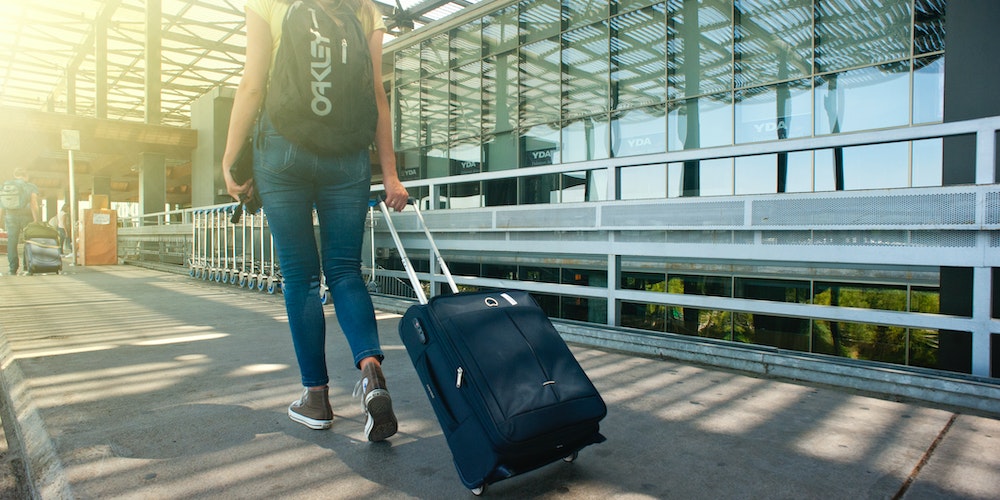
Travel hacking is the art of using various strategies, loyalty programs, and travel rewards to maximize the value of your trips.
It involves leveraging credit card points, frequent flyer miles, hotel rewards, and other travel-related benefits to save money and earn free or discounted travel experiences.
The Benefits of Travel Hacking
Travel hacking offers a myriad of benefits that can transform your travel experiences:
- Cost Savings: By utilizing travel rewards and points effectively, you can significantly reduce your travel expenses, including flights, accommodations, and activities.
- Upgrade Opportunities: Travel hacking can open doors to luxury travel experiences, such as business-class flights and premium hotel suites.
- Exploring New Destinations: With the savings from travel hacking, you can afford to visit destinations that might have seemed out of reach before.
2. Mastering Credit Card Rewards
Choosing the right travel rewards credit card.
Selecting the right travel rewards credit card is essential for optimizing your travel hacking efforts.
Look for cards that offer generous sign-up bonuses, valuable rewards points, and benefits like travel insurance and no foreign transaction fees.
Maximizing Rewards Points
To make the most of your credit card rewards, strategically plan your spending to meet the minimum spend requirements for sign-up bonuses.
Additionally, focus on using credit cards that offer bonus points for travel-related purchases, such as flights, hotels, and dining.
3. Navigating Frequent Flyer Programs
Joining airline loyalty programs.
Sign up for frequent flyer programs with major airlines and take advantage of their partnerships with other airlines.
This will allow you to earn and redeem miles across a vast network of carriers.
Understanding Elite Status
Achieving elite status with airlines can unlock a range of benefits, such as priority boarding, lounge access, and complimentary upgrades.
Plan your flights strategically to earn enough qualifying miles or segments for elite status.
4. Unveiling Hotel Rewards Programs
Enrolling in hotel loyalty programs.
Similar to airline loyalty programs, hotel rewards programs offer fantastic perks for frequent guests.
Earn points with every stay and enjoy benefits like room upgrades, late check-outs, and exclusive access to promotions.
Leveraging Co-Branded Credit Cards
Many hotel chains offer co-branded credit cards, providing accelerated points-earning opportunities and elite status benefits for cardholders.
Consider applying for these cards if you frequently stay with a specific hotel brand.
5. Embracing Travel Hacking Ethics
Responsible credit card usage.
While travel hacking can be incredibly rewarding, it is essential to use credit cards responsibly. Pay off your balances in full each month to avoid interest charges and potential debt.
Respecting Loyalty Programs
Abide by the rules and terms of loyalty programs, avoiding any unethical practices that could lead to account closure or loss of earned rewards.
6. Travel Hacking for Specific Destinations
Tailoring your approach.
Travel hacking strategies may vary depending on your destination. Research the best credit cards, airlines, and hotels for your specific location to maximize your rewards and savings.
Some regions might have unique travel partnerships or offers that you can take advantage of.
Seasonal Deals and Offers
Keep an eye out for seasonal deals and offers that can further enhance your travel hacking efforts.
Airlines and hotels often run promotions during certain times of the year, providing excellent opportunities to earn bonus points or get discounted rates.
7. Leveraging Travel Blogs and Forums
Tapping into the community.
Connect with like-minded travel enthusiasts on travel blogs and forums. These platforms are goldmines of valuable information, where experienced travelers share their travel hacking success stories and tips.
Engaging with the community can help you discover hidden gems and insider secrets.
Seeking Expert Advice
Look for reputable travel bloggers and influencers who specialize in travel hacking. Their expert advice can provide you with insights and strategies you might not have considered otherwise.
These influencers often share comprehensive guides and tutorials on how to make the most of various loyalty programs.
8. Creating Travel Itineraries
Optimizing layovers and stopovers.
Crafting travel itineraries that include strategic layovers and stopovers can lead to fantastic savings.
Take advantage of extended stopovers in transit cities to explore new destinations without incurring additional flight costs.
Flexible Travel Dates
Flexibility with your travel dates can help you secure better deals and availability for flights and accommodations.
Use fare comparison websites to find the most cost-effective days to fly and plan your trips accordingly.
9. Exploring Alternative Accommodation Options
Embracing the sharing economy.
Consider alternative accommodation options like Airbnb , HomeExchange , or Couchsurfing . These platforms often offer unique and budget-friendly stays that can complement your travel hacking endeavors.
Booking Directly with Hotels
Sometimes, booking directly with hotels can result in better rates and additional perks, especially if you are a loyal member of their rewards program.
Compare prices between third-party booking sites and the hotel’s website before making a reservation.
10. Beyond Travel Rewards: Credit Card Benefits
Travel insurance and protections.
Many travel rewards credit cards offer comprehensive travel insurance and protections. Familiarize yourself with these benefits to ensure you’re covered during your journeys.
Lounge Access and Travel Benefits
Certain credit cards grant access to airport lounges and provide travel-related benefits like baggage fee reimbursements or rental car insurance.
Make the most of these perks to enhance your travel experience.
You are now equipped with an arsenal of travel hacking strategies that will empower you to travel smarter and cheaper.
By leveraging credit card rewards, frequent flyer programs, hotel loyalty schemes, and insider tips, you can unlock a world of affordable travel experiences.
Remember, the key to success lies in staying informed, being proactive, and responsibly managing your credit cards.
Traveling is not just about reaching a destination; it’s about the journey. Embrace the art of travel hacking, and let it elevate your adventures beyond your imagination.
So, pack your bags, embrace wanderlust, and embark on unforgettable journeys that will create memories to last a lifetime.
Happy traveling!
Frequently Asked Questions
1. What is travel hacking, and how does it work?
Travel hacking is the strategic use of various travel rewards, loyalty programs, and credit card benefits to maximize savings and earn free or discounted travel experiences. By utilizing credit card points, frequent flyer miles, and hotel rewards, travelers can significantly reduce travel expenses and access exclusive perks.
2. Is travel hacking only for frequent travelers?
No, travel hacking is for everyone who enjoys traveling, regardless of how frequently they do so. Even occasional travelers can benefit from travel hacking strategies by earning and redeeming rewards for their trips.
3. Are there any risks involved in travel hacking?
When done responsibly, travel hacking is generally low-risk. However, it’s essential to manage credit card usage carefully and avoid accumulating debt. Also, be mindful of loyalty program terms to avoid account closures due to unethical practices.
4. How can I choose the right travel rewards credit card?
When selecting a travel rewards credit card, consider factors such as sign-up bonuses, rewards points earning potential, annual fees, travel benefits, and partner airline/hotel options. Choose a card that aligns with your travel preferences and spending habits.
5. Can I use travel rewards for destinations outside my loyalty program’s network?
Yes, many loyalty programs have partnerships with other airlines and hotels, allowing you to redeem rewards for travel outside their network. Some flexible rewards programs also offer the option to transfer points to various travel partners.
6. What are some ethical considerations in travel hacking?
Responsible credit card usage and adherence to loyalty program rules are crucial ethical aspects of travel hacking. Avoid practices like manufactured spending or abusing loopholes that could harm loyalty programs or violate terms.
7. Are travel hacking strategies suitable for family travel?
Absolutely! Travel hacking can be especially beneficial for family travel, as the cost savings and rewards earned can be multiplied for multiple travelers. Families can enjoy free or discounted flights and hotel stays with well-planned travel hacking efforts.
8. How can I find the best deals for flights and accommodations?
To find the best flight and accommodation deals, use fare comparison websites, subscribe to airline and hotel newsletters for promotions, and book in advance during off-peak travel seasons. Flexibility with travel dates can also help secure better deals.
9. Can I combine travel rewards with other travel discounts or promotions?
In some cases, yes. However, it depends on the specific terms of the rewards program and the promotion. Check with the loyalty program or travel provider to understand the rules regarding combining rewards with other offers.
10. Can travel hacking help me upgrade to business class or luxury hotels?
Yes, travel hacking can provide opportunities for upgrades to business class flights and luxury hotel accommodations. Some credit cards and loyalty programs offer elite status benefits, which can include complimentary upgrades.
11. Is travel hacking limited to flights and hotels?
No, travel hacking can extend beyond flights and hotels. It can include various travel-related expenses, such as car rentals, travel insurance, airport lounge access, and even travel experiences like tours and activities.
12. How can I stay informed about the latest travel hacking opportunities?
Stay updated by following reputable travel bloggers, influencers, and forums dedicated to travel hacking. These sources often share insights, tips, and exclusive deals that can elevate your travel experiences.
Remember that travel hacking is an ongoing learning process, and new opportunities may arise regularly. Stay curious, stay informed, and let travel hacking open doors to a world of affordable and extraordinary travel adventures.
Related Posts

9 Must-Have Travel Accessories for Beginners
- January 21, 2023

Planning a Trip: Your Ultimate Guide to Seamless Travel
- August 9, 2023

How to Travel on a Budget in 2024: Tips and Tricks
- November 25, 2023
Leave a Reply Cancel Reply
Your email address will not be published. Required fields are marked *
Name *
Email *
Add Comment *
Save my name, email, and website in this browser for the next time I comment.
Post Comment

Ultimate Beginner’s Guide to Travel Hacking: Getting Started
Are you traveling again?! How can you afford to travel so much?!
I’m asked these questions all the time and you can make it so people start asking you these same questions, too!
The truth is I’m not rich (thus the blog title The Globetrotting Teacher ). I haven’t done anything that someone else couldn’t do and I’m certainly not breaking any rules. Simply put. I make my money work for me by earning miles and points for travel, a.k.a. travel hacking.
But, scratch the surface just a bit and you begin to see just how much there is to learn. So, let’s get started.
Travel hacking or award travel is the skill of using miles and points to earn free or nearly free travel.
There are a few main components that you’ll need to understand to effectively earn and use points and miles to redeem for award flights and hotel nights.
- Understanding Credit Scores, Credit Cards , & the Different Types of Points and Miles
- How to Set Up and Use Your Bills and Everyday Spending to Earn Points and Miles
- Learning to Redeem your Points and Miles for Maximum Value
There’s a lot to unpack within each of these bullets, which is why I’ve put together my FREE Travel Hacking Basics Course.
You’re going to need to dedicate time and effort to learn as much as you can about points and miles. So, why have this process take any longer than it needs to take?
This work will pay off because once feel the thrill of booking a flight with miles, paying only a few dollars for taxes, you’ll be hooked.
The key, though, is getting started.
Enroll now in my FREE Travel Hacking Basics course by clicking the button below.

I’ve put everything you need to get started in one place and sequenced each lesson logically to help you build a solid points and miles foundation…without making the classic beginner mistakes.
Getting started with travel hacking feels overwhelming.
It involves complicated and important things like credit cards, money, and credit scores. You work hard for these things and don’t want anything to harm them. Skepticism and even feeling as if you’re breaking the rules also get in the way and create yet another psychological obstacle to getting started.
It’s easy to think it’s not worth it.
What will you learn in Travel Hacking Basics?
There are 5 sections to this beginner points and miles course.
- Welcome – Get access to the Facebook Group, Travel Hacking Study Hall + downloadable cheat sheets to help you begin.
- Understanding Credit Scores – Detailed lessons to help you understand the factors used to calculate your credit score, dispel myths about credit cards, and improve your credit score.
- Credit Cards, Points, and Miles – Dive into the different types of travel reward points and miles and the cards that earn them. We’ll go over important bank rules, which credit cards to start with, and how to keep it all organized.
- Earning Points and Miles – Learn how to meet credit card minimum spends and maximize every dollar you spend on your bills and expenses to earn the most travel rewards points and miles possible.
- Using Points and Miles – Find out must-know redemption rules and principles, as well as see how to search and redeem your points and miles for the best value through guided lessons and video tutorials.
At the end of the course, I go over how to put all of what you learned into action and what your next steps should be.
Think of Destination on your Bucket List…
Complete this sentence.
I want to travel hack because I want to go to [enter destination] for [enter reason] in [enter date and year]. Without travel hacking, it would cost me [enter cost].
For example, you might say:
I want to travel hack because I want to go to Paris and Rome for my 10th wedding anniversary next June. Without travel hacking, it would cost me over $5,000.
The beauty of points and miles is you don’t have to save forever to take that BIG trip.
Miles and points can make even the dreamiest destinations possible, seated in premium class seats, no teacher like me could ever afford without points and miles.
Frequently Asked Questions
- Who is this course for?
Travel Hacking Basics is for anyone living in the United States who has the ability to apply for travel rewards credit cards and use them responsibly.
If you’re in another country, like Canada or the U.K, some of the lessons in the “Use Your Points and Miles” section will be the same or similar. However, the credit card offers and perks vary by country.
- Do I need a good credit score to get started with points and miles?
Most travel rewards credit cards require a good to excellent credit score. To get started, you should have a credit score >700.
- Is it really worth it to earn points and miles?
Clearly, I’m biased. But, not for any other reason than I have successfully used points and miles to travel around the world from Europe to Asia , Africa , and South America .
I never would have imagined years ago that I would have the ability to travel wherever I wanted just by unleashing the power of my everyday bills and spending.
Enroll now for Free in Travel Hacking Basics!

Where do you want points and miles to take you?
Know someone who wants to learn more about getting started with points and miles? Sharing is caring! 😉
Your Trip Planning Checklist
- Search for flights with Skyscanner or Momondo .
- Get the best hotel rates with Booking.com and Hotels.com .
- World Nomads makes it easy to get a travel insurance quote for that amazing bucketlist trip you just booked!
- Get Your Guide is my go-to for tours, tickets, and experiences.
- Use my list of travel packing basics to make sure you have what you need for your trip.
- Check out my free miles & points course to learn how to travel for less/free.
- See my full list of travel resources on my resource page . These are what I've used to book travel over the years.
Related Posts

Earning with Dining Programs

The Wonders of Shopping Portals
Leave a comment cancel reply.
Your email address will not be published. Required fields are marked *
Save my name, email, and website in this browser for the next time I comment.
This site uses Akismet to reduce spam. Learn how your comment data is processed .
Privacy Overview

- New Here? Read Me First
- Must Read Articles
- Latest Articles
- This is My Story
- Countries I’ve Visited
- Media Appearances
- Follow the Adventures
- All Travel Destinations & Guides
- South America
- Budget Travel Tips
- Save Money for a Trip
- Best Resources to Book Your Trip
- What is Backpacker Travel Insurance?
- Travel Hacking
- Travel Gear
- Road Trip Planning
- Travel Inspiration
- Truck Camping
- How to Travel Forever
- Browse the Store
- My book: Big Travel, Small Budget
- Truck Camping Gear
- D2D Apparel
- Shop REI.com
- Shop Amazon.com
- Discount Outdoor Gear: Deals of the Day
- Write for D2D
- Work with Us – Media & Press
Travel Hacking 101: How to Save Thousands on Your Next Trip
Sharing is caring!

I became a travel hacker back when I was working a desk job and it was a total game-changer for me! In this travel hacking 101 guide, we will be covering what is travel hacking , whether or not travel hacking is worth it, how to get started travel hacking , and much more.
If you’re not familiar with the travel hacking term, it isn’t as nefarious as it sounds and is essentially just finding ways to maximize your ability to earn and redeem airline miles through frequent flyer programs, most often through credit card based travel hacking opportunities.

By taking advantage of credit card travel hacking I have saved thousands in cash on booked flights, both internationally and domestically, and thousands more on hotel stays. I’m not a hardcore mileage hacker at all (like those people who rack up millions of points), but I do it casually when good opportunities present themselves because it is SO easy to do, requires little extra effort, and offers up HUGE rewards.
If you like to travel (even just once per year) and aren’t travel hacking, then you are spending too much on your travels. That’s the bottom line. You’ve got to learn how to travel hack!
Don’t miss the FREE printable travel hacking tips at the end!

Travel Hacking Success Stories
I booked a “round trip” flight from Seattle to New York City (with a five-night stop) and then a flight from NYC to Medellin, Colombia for two of us for just $198… What’s more, on that same trip I also used my hotel rewards points to book five nights in Manhattan ( in the Financial District near the World Trade Center ) for absolutely nothing. The going rate at the hotel was over $450 per night, for what should have been a total of $2,400 for five nights… This hotel definitely wasn’t a dive.

So, all five nights in Manhattan cost less than a New York bagel (oh, and the hotel included breakfast every day — with bagels, haha — and we had an in-room kitchen). So, for both of us, I scored one domestic flight, one international flight, and five nights in one of the most expensive cities in the world for just $200… Not bad!

Using travel hacking, my cousin took a family vacation to Hawaii for the five of them (the parents and three kids) for just $55 round trip. That’s $55 for everyone, not per person. You can imagine how much that would’ve cost to book outright … at least $500 per ticket.
While I was living in Medellin, Colombia , my mom was able to come down for a visit on two separate occasions (I’m sure she never in her wildest dreams imagined she would be traveling to Colombia ) by using her frequent flier miles, which for one of them only ended up costing her $104.50 in taxes and 47,500 miles for a round trip flight. Later on, she flew down to visit us in Santiago, Chile for again just about $100. So that’s three big international trips for her, each only costing around $100 per trip.

Myself, I’ve flown back and forth from Colombia a few times now for around $100 each time. Normally those flights go for around $600-700. My biggest success story for those flights was when I did the return trip to Colombia all in first-class (the journey was three flights). That’s the definition of a cheap first class ticket , for sure.
This also meant I had access to the first-class lounge at each airport (Seattle, Chicago, and Miami) along with all the amenities that entails, like free food, free drink, even a shower at the Chicago airport after a long, red-eye flight from Seattle. And of course, first-class flights means bigger and better seats, and better food and drink while in the air. Out of pocket, my expenses were the same ($100), it just cost me marginally more air miles. It was totally worth it, except it kind of ruins traveling in coach forever.
I’ve talked to other friends and family about doing this, and some have just dismissed the opportunity outright. I honestly cannot understand why anyone wouldn’t want to take advantage of the opportunity to fly for practically free instead of paying sticker price for an airline ticket.
Is travel hacking worth it? You better believe it… It has the biggest reward for the smallest effort of any other travel tip or trick.
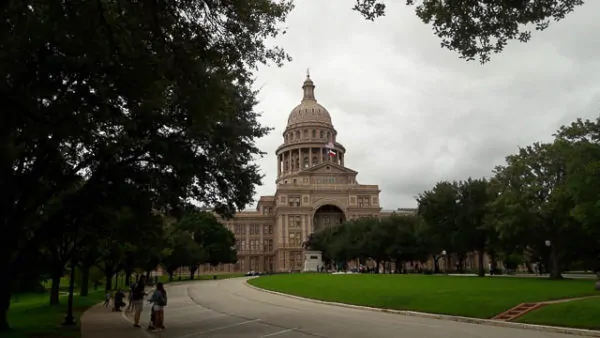
Who Should Use Travel Hacking?
The biggest rewards are offered by the best travel credit cards in the United States, but that doesn’t mean people in other countries can’t benefit from similar strategies, just that they can’t rake in a ton of rewards so easily.
Mileage hacking is only to be used by those with good credit, no ongoing problems struggling with debt , and who don’t have any difficulty paying off their credit cards in full every month.
The basics are that you can sign up for a new credit card and then meet the minimum spend (more on that in a minute) within the first three months and you will be rewarded with a large sign-up bonus which you can redeem for free travel. Credit card companies offer these bonuses to entice new customers to sign up, not out of the goodness of their hearts.
There are many other worthwhile new credit cards to pursue beyond the airline mileage cards, including some that provide straight cash bonuses or hotel loyalty credit cards that offer up to a week of free stays in top of the line resorts anywhere in the world . You can easily do both airline cards and hotel cards, although you will want to stagger the initial sign up period for different travel hacking credit cards so you can ensure that you meet the minimum requirements for each (more on that in a minute).

About Travel Hacking 101
So, enough about how awesome it is and who it applies to… If you’ve made it this far and are still with me, then you’re probably wondering how you can get started travel hacking with a new credit card.
Step 1: Find a Good Offer
The first and most important step is to find a current promotional credit card offer. Offers are constantly changing, so it can be tough for me to recommend a specific offer, but these are some of my favorite new credit card offers.
But here are a few that stand out to me:
- Barclay’s American Airlines – Get 60,000 miles after paying the $95 annual fee and making any single purchase. This is as easy as it gets, and is enough for a few domestic flights and at least one international flight for a very small price.
- Chase Sapphire Preferred – Get 60,000 flexible miles for spending $4,000 in three months. These miles can be transferred to partners like United or Marriott at a 1:1 rate. The Chase Sapphire Reserve card is another popular alternative but a more premium credit card, perhaps not best for someone just starting.
- Marriott Bonvoy CC – Get 100,000 credit card points for spending $3,000 in three months, which is enough for a number of free nights depending on the hotel category. It’s enough for three free nights at that NYC hotel I mentioned above. They also give you a free night every year which you can use at upscale properties as I did at the Medellin Marriott Hotel , which pays for the annual fee by itself.
I’d also recommend you check out my guide to the best travel credit cards for further discussion of each of these cards, their credit card rewards and benefits, and some additional suggestions.
Once you’ve found an appealing card online, make sure to analyze the details about what requirements you will need to meet in order to receive the miles and how difficult that may or may not be for you.
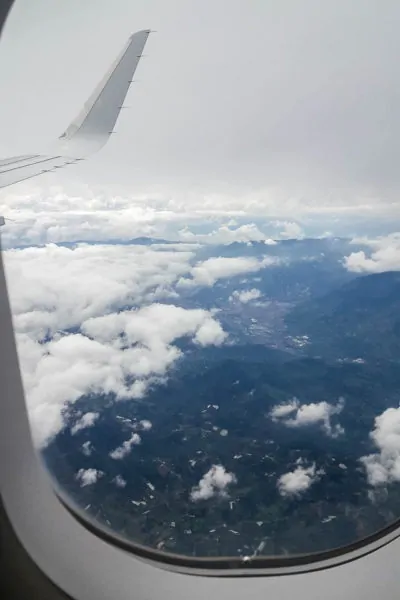
Travel hacking credit card bonuses range from cold hard cash (I’ve signed up for cards to simply get $200 cashback on a $500 spend , and then I actually used part of that money to start my website) to 50,000 or even 75,000 in airline frequent flier miles—the latter of which is enough for a round trip flight almost anywhere in the world.
Anything over 50,000 miles is an offer that is definitely worth taking a closer look at. I don’t generally bother with anything less than 40,000 miles (though that is still enough for a round trip domestic flight or one-way international flight — maybe even a roundtrip international).
Read More: The Best Travel Hacking Credit Cards
Step 2: Meet the Minimum Spend
Nearly always you will need to meet some minimum requirements in order to receive the mileage bonuses, typically it is meeting a certain level of spending within a limited amount of time—for instance, $3,000 dollars within three months. And typically these cards carry an annual fee of $80–95 per year that is waived the first year for new customers.

Promotions do vary though, and some can be extremely easy to fulfill. I received 60,000 miles for signing up for a card with an annual fee (not waived), but which awarded the miles with the first purchase of anything (I just bought a drink from Starbucks) — it’s that Barclay’s card I mentioned above. An amazing deal that is much easier to achieve than the minimum spend cards, and in the future, I’ll get a flight or two out of it for a small investment.
Spending all that money within a short period of time seems like a hard pill to swallow, but thankfully there are a number of tactics and strategies which make it within the reach of most normal people (ie cheapskates like me) without spending more than they otherwise would.
Read More: How to Meet the Credit Card Minimum Spend
3. Collect Your Miles
Once you’ve met the minimum requirements of the card promotion, the miles will be posted to your account within a few weeks. Congratulations! In total, the process of getting your card points can take a couple of months in total (3-4 months), which is why I recommend that you get started sooner rather than later.
For instance, if you have a credit card with a minimum spend of $3,000 in three months, but can only manage to spend $1,000 per month, you will spend a week or two to get the credit card, then three months to meet the minimum spend, then another couple weeks for your statement period to close and your bonus miles to post to your account.
Once you’ve collected the miles or points, they are yours to keep.
4. Stay Organized
To keep you organized and on top of the dates for minimum spend and the annual fee, I would recommend Google Calendar (free) which allows you to quickly and easily create reminders that will alert you via the smartphone app, as well as by email.
To keep track of your credit cards and how much you’ve spent toward your minimum spend, I highly recommend Mint.com , a free service that helps you stay on top of all your accounts (savings, checking, credit cards, investments).
Tracking your income and expenses and truly understanding where your money is going every month is also the best way to help you meet your financial objectives, reduce spending where possible when it doesn’t serve your travel goals, and identify problems before they escalate (either in unexpected fees and charges, or identifying areas where you spend too much).

I’ve been using Mint.com for many years, and I truly credit it with helping me get a grip on my money and not waste it (as much) on things that are unimportant to me.
Like Mint.com for personal finance, there are also a number of websites to help you keep track of all your points and miles across a variety of accounts. I use AwardWallet.com to help me stay on top of all my rewards accounts. I also really appreciate the email notifications when the miles have posted to my account.
5. Avoid the Annual Fee
If the card has an annual fee (which is often waived the first year), be sure to put a note on your online calendar for 11 months later to call the credit card company if you want to cancel the card before that year is up, or better yet, you can give them a call and have them downgrade the card to one with no annual fee (downgrading the card), thus keeping that line of credit open and not negatively impacting your credit score.

Often when you call and speak to them, they will offer to waive your annual fee for the second year. They’ve spent a lot of money to gain you as a customer, and they don’t want to lose you. You can decide whether to keep the card open in that case, or not—but if you do keep it open, put another note on your calendar for 11 months later.
Just to clarify, once the miles have posted to your account, you are no longer beholden to the credit card company. The miles are yours to keep and have already posted to your frequent flier account, which is separate.
There are some travel credit cards that are super valuable and might are worth keeping in subsequent years for future travel. I retain some cards, like the Chase Sapphire which offers transferrable points, and I cancel others like the airline-specific cards. The Chase Ultimate Rewards points are particularly valuable since they can be redeemed for travel directly through the Chase portal or transferred to airline or hotel partners.
6. Finally, Travel!
Of course, this is the point of the travel hacking, and the points can be used at any point after they’ve posted to your account.
Points are very easy to redeem, just by going directly through the airline or hotel website and searching for available options. You should see an option to book using award travel as you search and can redeem points just as if you were booking a flight or hotel with cash.
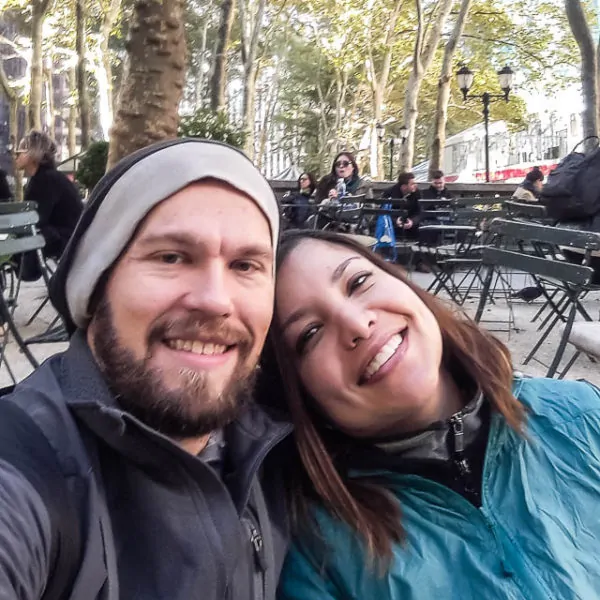
Like ticket prices, you will find that the redemption cost in points will vary depending on dates, so if you have flexibility, you will likely be able to find cheaper rates in points so you can maximize your travel.
Traveling cheap with travel hacking is one of my secrets for how to afford to travel much more than you otherwise could.
Travel Hacking 201
I’m a follower of the 80/20 approach, which dictates that 80% of our results come from 20% of our efforts. Thanks to this travel hacking 101 course you’ve got all the info you need to take advantage of credit card hacking and get that Big Win that provides 80% of the results with very little effort.
For more details about the ins and outs of travel hacking (manufactured spending, credit card churning, portals, etc), as well as a number of other tactics that will save you big money while traveling, don’t forget to check out my book Big Travel, Small Budget .
It’s gotten rave reviews from hundreds of people on Amazon and has helped thousands of aspiring travelers to actually get out there and do it a little cheaper.
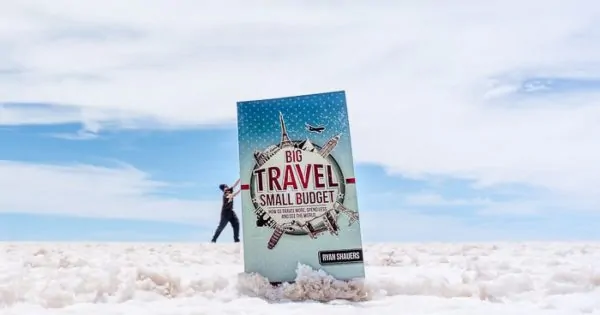
If you’d love to travel to more far-flung destinations or just want to save big bucks on the travel that you already are expecting to do (or maybe have to do), then I cannot recommend strongly enough that you get started travel hacking as soon as possible.
I hope you enjoyed this intro guide about credit card travel hacking. It is an extremely rewarding and awesome experience to pay pennies on the dollar for your flights (especially for international flights).
Read Next: How to Travel the World on a Budget
Did you enjoy this travel hacking 101 post? Then please take a moment to share it on Pinterest, Facebook, or Twitter. Thanks!
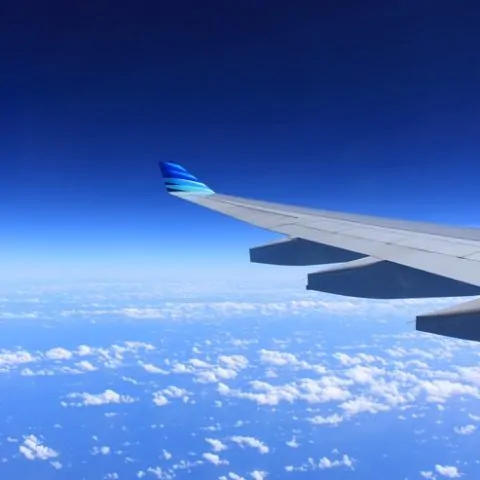
Get Started Travel Hacking
Travel hacking is quite simply the best way to reduce your travel expenses, travel on a budget, or even just to take a free vacation every year.
Travel Hacking Credit Cards
- Best Travel Credit Cards
- Chase Sapphire Credit Card
- Chase Marriott Card
Stay Organized
- Google Calendar
- Award Wallet
Learn More About Travel Hacking
- What is Travel Hacking?
- Big Travel Small Budget
Instructions
- You should already have a good handle on the fundamentals of personal finance , including not carrying a balance on any consumer debt before you get started. Free travel via travel hacking ONLY makes sense if you aren’t paying high interest to get it! Review my article about conquering debt if you need it.
- Identify your travel goals and timeline, including whether you are targeting free flights or free hotel stays to start with, what airline network best services either your local airport or your dream vacation.
- Find the best credit cards for travel hacking that will help you meet your goals. I love the Barclay AAdvantage , Chase Sapphire , and Chase Marriott Rewards cards.
- Apply for your new credit card before any big expenses (existing travel, electronics, auto repairs, taxes, etc) and put all of your recurring bills or other expenses onto the new card. Read more about credit card minimum spend tricks .
- Put a note on your calendar 11 months from now about the upcoming annual fee, this will ensure that you can call to either cancel or downgrade the card before the fee hits if you want. I use Google Calendar for this.
- Sign up for Mint.com (free) to track your spending on this new credit card to ensure that you meet the minimum spend. Mint is also a great way to help manage your personal finances in general.
- Join Award Wallet to keep track of your points and miles across all loyalty programs to ensure that you don’t forget about them and accidentally let them expire.
- Keep maximizing your point earnings by joining airline dining programs, using the airline shopping portals, and double-dipping on points by buying gift cards for upcoming purchases.
- Enjoy your travel hacking lifestyle and the ensuing free vacations! WARNING: it will make you NEVER want to pay full price again in the future.
I hope this helped you get started travel hacking! I know it can be confusing when you are just getting started, which is why I started writing so extensively about it!
If you have any questions about travel hacking, budget travel, or anything else shoot me an email at [email protected].
(I love getting questions! That is how I get ideas for my blog posts and what to write about!)
Recommended Products
As an Amazon Associate and member of other affiliate programs, I earn from qualifying purchases.
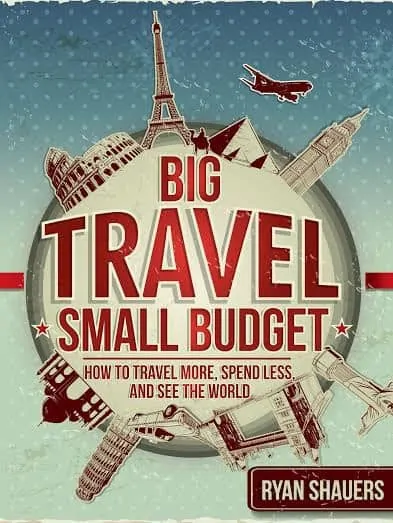
Did you find this helpful?
Please let me know with a comment on the blog below or reach out to me on Facebook or Instagram. Feel free to share a photo on Instagram with the #desktodirtbag hashtag once you put this into action!
- Latest Posts
Latest posts by Ryan ( see all )
- Kazakhstan Food: Exploring Some of its Most Delicious Dishes - August 7, 2023
- A Self-Guided Tour of Kennedy Space Center: 1-Day Itinerary - August 2, 2022
- Fairfield by Marriott Medellin Sabaneta: Affordable and Upscale - July 25, 2022
- One of the Coolest Places to Stay in Clarksdale MS: Travelers Hotel - June 14, 2022
- Space 220 Restaurant: Out-of-This-World Dining at Disney’s EPCOT - May 31, 2022

Those hotel stays and flights aren’t actually free though because when you are forced to spend $3,000 or $4,000 in 3 months on things that you don’t find necessary in life it’s still a cost in the end. (unless you are scamming the cc company with gift card and prepaid visa cards to buy.) Also at this time you’re not going to find an international round trip for under $400 from the United States. I’ve checked all dates and it just doesn’t happening because flights are getting more expensive. I look at those points that I’ve earned like money and they have a value so I’m still spending $600 when I’m using 60,000 points and that’s usually the minimum to get a decent good priced one-way trip overseas right now.
That’s why it is important to plan credit card sign ups around known or existing purchases. The very basis of the idea is not spending on things you don’t need or want and never paying interest payments. I don’t make a lot of money, I don’t buy a lot of things, but I’m still able to take advantage of this and travel frequently. In terms of points and the mile per dollar, it really depends on your destination and your flexibility.
Nice dude. I’ve yet to dive into this since I have a great card that gives me great points now. But I plan to try Southwest Airlines card. I fly with them a lot since I’m a climber and I take trips with lots of luggage for my gear, and they don’t charge bag fees. So they’re always the best deal and I plan to sign up for their card and get lots of SW points.
If you’re aggressive you can get the SW companion pass too which is a huge value! I’ve yet to pursue that one because you really need to be based out of the US to take advantage, but worth looking into…
Leave a Reply Cancel reply
Your email address will not be published. Required fields are marked *

101 Essential Travel Hacking Tips for 2024
Last updated Mar 4, 2024
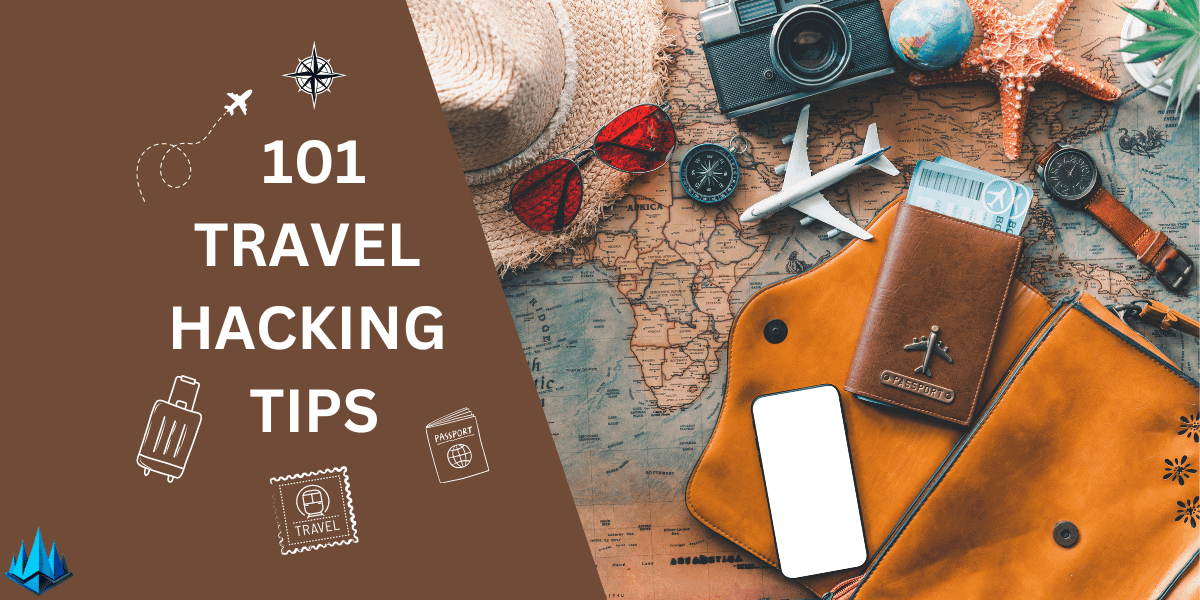
Fahim Joharder, an expert in software review & AI, blends deep tech insight with practical advice. Known for his critical analyses & innovative solutions.
Are you feeling overwhelmed by the complexities of modern travel? You’re not alone. With ever-changing regulations, rising costs, and the endless quest for the best experiences, navigating the world of travel can be daunting. But what if I told you that mastering the art of travel hacking could turn these challenges into opportunities?
Travel hacking isn’t just about saving money; it’s about enhancing your travel experience. This comprehensive guide unveils 101 essential travel hacking tips that will empower you to travel smarter, cheaper, and more efficiently in 2024. Whether you’re a seasoned globetrotter or planning your first big trip, these insights will revolutionize how you approach travel.
- Travel hacking can simplify and enhance your travel experience.
- These 101 tips cater to both beginners and experienced travelers.
- Learn to travel more efficiently, saving both time and money.
- Discover innovative strategies to make the most of your journeys in 2024.
What Are the Best Travel Hacking Strategies for 2024?
- 1. Maximizing Credit Card Rewards
Utilizing credit cards specifically for their travel rewards can be a game-changer. By strategically using cards that offer high points on travel-related purchases, I’ve accumulated enough points for entire trips. It’s all about choosing the right card and understanding its reward structure.
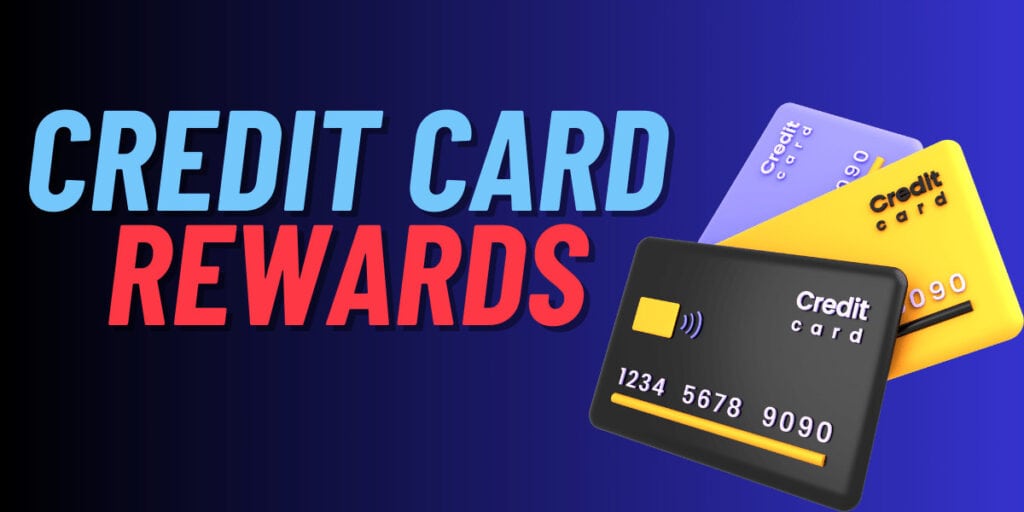
- 2. Leveraging Airline Miles
One of my most successful travel hacks has been mastering airline miles. By choosing one airline as my primary carrier and sticking to it, I’ve earned elite status, with significant benefits like free upgrades and lounge access.
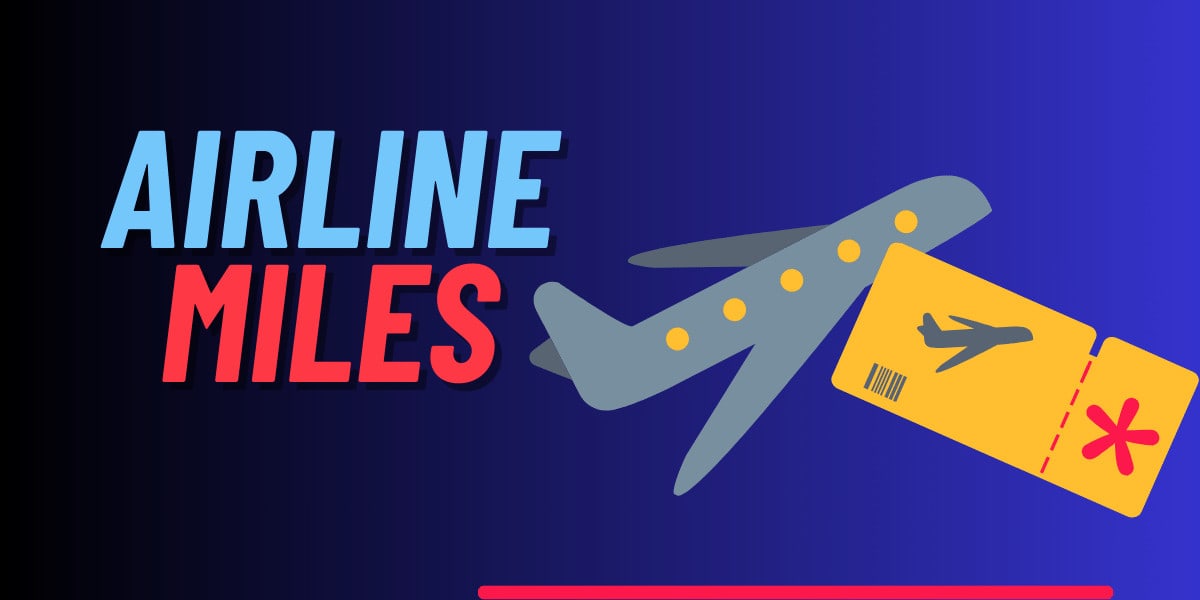
- 3. Smart Packing Techniques
Traveling light can save you money and time. I learned to pack only essentials and use compression bags to save space. This approach not only eases mobility but also helps avoid checked baggage fees.
- 4. Flexible Travel Dates
Being flexible with your travel dates can lead to massive savings. I often use tools that allow me to view price trends and book when prices are lowest. This flexibility has led to some unexpected and budget-friendly adventures.
- 5. Utilizing Budget Airlines
Budget airlines are a boon for travel hackers. While amenities are fewer, the cost savings are significant. I compare prices with budget carriers and often find deals too good to pass up.
- 6. Off-Season Travel
Traveling during the off-season has allowed me to enjoy destinations without the crowds and at a fraction of the price. Accommodations and activities are often much cheaper, making luxury experiences more accessible.
- 7. House Sitting or Swapping
House-sitting or swapping can mean free accommodation. I’ve used various platforms to find opportunities to stay in beautiful homes worldwide without paying a dime for lodging.
- 8. Joining Travel Forums and Groups
Being part of online travel communities has provided me with insider tips and exclusive deals. These forums are a treasure trove of information, from finding cheap flights to discovering hidden gems.
- 9. Taking Advantage of Layovers
Long layovers can be an opportunity to explore a new city. Instead of seeing them as a hassle, I use them to experience a place I might not have visited otherwise, often without extra flight costs.
- 10. Booking Accommodations with Free Cancellation
Flexibility is critical in travel hacking. Booking accommodations that offer free cancellation allows me to change plans or take advantage of a last-minute deal without penalty.
- 11. Using Incognito Mode for Booking
Prices can increase based on your search history. I always use incognito mode when booking flights and hotels to ensure I see the lowest prices available.

- 12. Earn and Burn Points Philosophy
‘Accumulating points is only half the battle; using them effectively is crucial. I follow the ” earnn and burn’ philosophy, using points before they devalue, ensuring I get the best bang for my buck.’Accumulating points is only half the battle; using them effectively is crucial. I follow the ‘earn and burn’ philosophy, using points before they devalue, ensuring I get the best bang for my buck.
- 13. Local SIM Cards for Data
Buying a local SIM card for data is often cheaper and more reliable than international plans. This hack has kept me connected without breaking the bank.
- 14. Avoiding Currency Exchange at Airports
Airport currency exchanges typically have unfavorable rates. I use local ATMs or currency exchange services in the city for better rates, saving significantly over time.
- 15. Travel Insurance Hacks
Choosing the right travel insurance can save money and provide peace of mind. I look for policies that cover precisely what I need, avoiding overpriced packages with unnecessary extras.
- 16. Leveraging Stopovers for Extra Trips
Some airlines offer free or low-cost stopovers in their hub cities. I’ve used these to explore additional destinations at no extra flight cost, effectively getting two trips for the price of one.
- 17. Free Walking Tours
Free walking tours are budget-friendly and great for learning about a new place. I’ve found these tours to be informative and an excellent way to meet fellow travelers.
- 18. Eating Like a Local
Eating where locals eat has saved me money and led to some of the most authentic culinary experiences. Street food and local markets are often cheaper and tastier than tourist traps.
- 19. Using Public Transportation
Public transportation is usually much cheaper than taxis or rental cars. I’ve found that navigating the local transit system adds an authentic touch to the travel experience.
- 20. Early Morning Flights
Booking the day’s first flight is often cheaper and less prone to delays. I’ve saved money and enjoyed quieter airports by choosing early departures.
- 21. Travel Reward Programs
Joining multiple travel reward programs has been a game-changer. I sign up for every program available, from airlines to hotels and even dining rewards. The points accumulate surprisingly fast and lead to significant savings.
- 22. Exploring Alternative Airports
Flying into less popular airports can dramatically reduce costs. I’ve saved hundreds by choosing an airport just a bit further from my final destination and then using local transport to reach my target city.
- 23. Night Trains and Buses
Using night trains and buses has saved me the cost of a night’s accommodation and allowed me to wake up in a new destination, ready to explore.
- 24. Travel During Shoulder Season
Traveling during the shoulder season – the period between peak and off-peak – strikes a balance between cost and weather. I’ve enjoyed many destinations with fewer crowds and moderate prices during these periods.
- 25. Student and Youth Discounts
If you qualify, taking advantage of student and youth discounts can lead to substantial savings on transport, attractions, and accommodations. Always carry your student or youth ID when traveling.
- 26. Booking Apartments Instead of Hotels
Renting apartments instead of hotels can be a budget-friendly option, especially for extended stays. I’ve enjoyed having extra space and the ability to cook meals, reducing food costs.
- 27. Volunteering Abroad
Volunteering abroad has allowed me to extend my travels while giving back. Many programs offer free room and board in exchange for work, providing a unique and fulfilling travel experience.
- 28. Travel Blogging
Starting a travel blog can open doors to unique experiences and savings. As a blogger, I’ve been offered discounts and even free stays in exchange for coverage on my blog.
- 29. Avoiding Tourist Hotspots for Accommodations
Staying just outside major tourist areas can significantly reduce accommodation costs. I’ve often found quieter, more authentic neighborhoods just a short walk or ride from the main attractions.
- 30. Cooking Your Meals
Cooking meals, especially when traveling in expensive countries, can save money. Staying in places with kitchen facilities has been a critical strategy in my travel budgeting.
- 31. Cashback Sites and Apps
Using cashback sites and apps for booking flights, hotels, and activities has helped me recover some of my spending, which I then redirect into future travel funds.
- 32. Staying in Hostels
Hostels are not just for young backpackers. They offer affordable accommodations and a chance to meet fellow travelers. Many now offer private rooms, combining the social aspect with privacy.
- 33. Couchsurfing
Couchsurfing has allowed me to stay for free while meeting locals. It’s a community of travelers and hosts who offer a couch or spare room at no cost.
- 34. Carry-On Only
Traveling with carry-on luggage only has saved me time and fees on many airlines. It also makes moving around easier and faster, especially on multi-destination trips.
- 35. Researching Free Attractions
Many cities offer free attractions, from museums with no entry fee to public parks and historic sites. I constantly research free things to do before I travel, which enriches the experience without impacting my budget.
- 36. Traveling with a Group
Group travel can offer significant savings, as costs for accommodation, transportation, and activities can often be split. It also adds a social element to the journey.
- 37. Using Bike-Sharing Services
I’ve found bike-sharing affordable and enjoyable in cities where it’s available. It’s cheaper than taxis and more flexible than public transport.
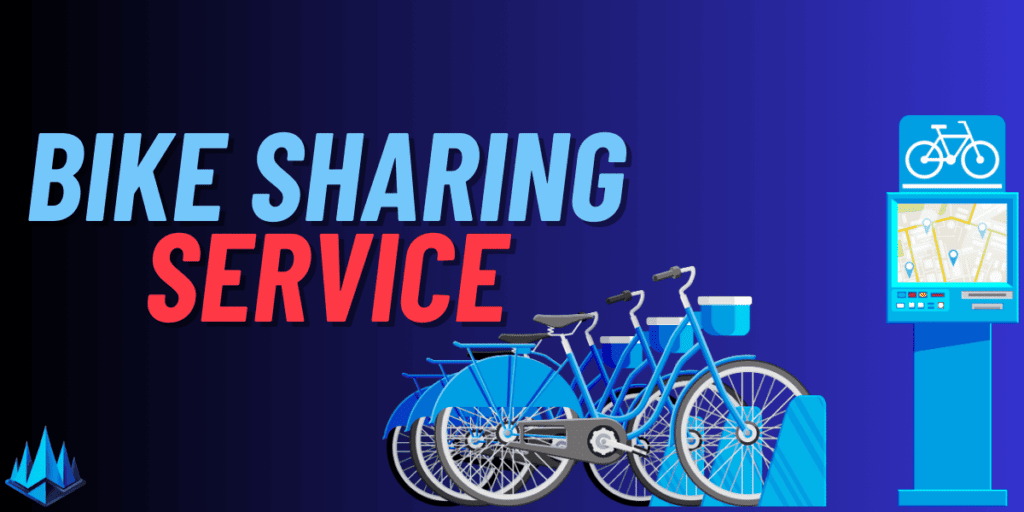
- 38. Airport Lounge Access with Credit Cards
Some credit cards offer complimentary airport lounge access, a perk I’ve enjoyed for relaxing and enjoying food and drinks without extra cost during layovers.
- 39. Free Airport WiFi
Instead of using data, I use free WiFi, available at most airports. It’s perfect for last-minute research or downloading entertainment for the flight.
- 40. International Driving Permit
I’ve found having an International Driving Permit invaluable for those places where driving is necessary. It’s recognized globally and can save a lot of hassle with car rentals.
- 41. Taking Advantage of City Passes
City passes often offer great value, bundling entry fees to multiple attractions for a discounted rate. I’ve saved significantly in major cities using these passes for museums, tours, and public transportation.
- 42. Using Rail Passes for Multi-City Trips
Rail passes like the Eurail or Japan Rail Pass can be cost-effective for multi-city trips in certain countries. They offer flexibility and can be cheaper than individual train tickets, especially for frequent travel.
- 43. Finding Work Abroad
Working while traveling, such as teaching English or seasonal jobs, can extend your travel duration significantly. I’ve met many travelers who fund their adventures this way, gaining unique experiences and insights into different cultures.
- 44. Travel Credit Cards with No Foreign Transaction Fees
Using a credit card that doesn’t charge foreign transaction fees saves money on every purchase abroad. It’s a small saving that adds up, especially on longer trips.
- 45. Staying in Monasteries or Religious Guesthouses
For a unique experience, staying in monasteries or religious guesthouses can be an affordable alternative. These accommodations often come with a peaceful and spiritual atmosphere.
- 46. Attend Free Local Events
Many cities host free events, from concerts in the park to street festivals. These events save on entertainment costs and glimpse local culture and community.
- 47. Hitchhiking in Safe Countries
Hitchhiking can be an accessible mode of transportation in countries where it’s safe and familiar. It’s also a way to meet locals and fellow travelers, though safety should always be a priority.
- 48. Using WhatsApp for Communication
I use WhatsApp for text, voice, and video calls to avoid high international fees. It’s widely used globally and only requires a data connection.
- 49. Following Travel Deals Websites and Alerts
Signing up for travel deal alerts from websites and forums has led me to some incredibly cheap fares and last-minute offers that I wouldn’t have found otherwise.
- 50. Traveling with a Water Bottle with Filter
Carrying a water bottle with a built-in filter has saved money on bottled water and has been environmentally friendly. It’s beneficial in countries where tap water isn’t safe to drink.
- 51. Avoiding Peak Travel Times
Traveling outside peak times – like early morning or late night – often means cheaper fares and less crowded transport. I’ve enjoyed quieter journeys and more affordable tickets by avoiding rush hours.
- 52. Long-Term Rental Negotiations
For extended stays, negotiating the rent for a long-term stay can lead to substantial savings. Landlords are often willing to offer a discount for longer commitments.
- 53. Using Trusted Housesitters
For longer trips, using platforms like Trusted Housesitters can secure free accommodation in exchange for pet-sitting or house-sitting. It’s a win-win for both the homeowner and the traveler.
- 54. Participating in Time-Share Presentations
Participating in time-share presentations can sometimes offer free or heavily discounted stays. While they require sitting through a sales pitch, the rewards can be worth it for the savings.
- 55. Using Apps for Last-Minute Hotel Deals
Apps like HotelTonight offer last-minute deals on unsold hotel rooms, often at a fraction of the regular price. I’ve found some great bargains on high-quality accommodations this way.
- 56. Booking Flights in the Middle of the Week
Flight prices can fluctuate based on the day of the week. I’ve found that booking on a Tuesday or Wednesday often results in lower fares than on weekends.
- 57. Exploring Multiple Flight Search Engines
Using various flight search engines and comparing prices can unearth better deals. Each machine has its own set of airline partners and special rates.
- 58. Backpacking and Camping
Backpacking and camping can be an inexpensive way to travel , especially in areas with stunning natural landscapes. It’s not only budget-friendly but also offers an immersive nature experience. There are tons of travel hacks for camping, including ways to make camping more comfortable .
- 59. Traveling with a Reusable Shopping Bag
Carrying a reusable shopping bag helps the environment and avoids charges for plastic bags in many countries. It’s a small but practical hack.
- 60. Joining Frequent Flyer Programs
If you don’t fly often, joining frequent flyer programs is worthwhile. The miles can increase over time, leading to free flights or upgrades.
- 61. Exploring Alternative Accommodation Platforms
Beyond the usual hotel booking sites, exploring platforms like Airbnb or local guesthouses can offer unique and often more affordable stays. I’ve discovered charming places that provide a more authentic experience than traditional hotels.
- 62. Using Multi-City Flight Searches
The multi-city search option is often cheaper when planning trips involving multiple destinations than booking separate one-way tickets. It’s a great way to see more places without significantly increasing the travel budget.
- 63. Avoiding In-Room Snacks and Minibars
Minibar items are notoriously overpriced. I avoid them and instead stock up on snacks and drinks from local supermarkets, saving money and enjoying local treats.
- 64. Choosing Lesser-Known Destinations
Opting for less popular destinations can lead to surprising discoveries and significant savings. These places often offer authentic experiences without the crowds and high prices of tourist hotspots.
65. Using Google Flights’ Explore Feature
Google Flights’ Explore tool allows you to see the cheapest destinations from your airport within your travel dates. I’ve found amazing deals to destinations I hadn’t even considered.
- 66. Opting for Overnight Transportation
Taking overnight buses or trains can save a night’s accommodation cost. It’s a strategy I’ve used for longer distances, waking up at my next destination without the price of a hotel.
- 67. Earning Money Through Travel Photography
If you have a knack for photography, selling your travel photos can be a way to earn extra cash. Websites like Shutterstock or Adobe Stock are platforms where I’ve sold my photos.
- 68. Travel Nursing for Healthcare Professionals
For healthcare professionals, travel nursing can be a way to see the world. Agencies offer short-term contracts in different locations, often with housing stipends, making it a viable way to travel and work.
- 69. Use of Travel Agents for Complex Trips
While I usually book trips myself, using a travel agent for more complex itineraries can sometimes save money and time. They often have access to deals not available to the public.
- 70. Participating in Cultural Exchange Programs
Cultural exchange programs like Workaway or WWOOF provide opportunities for free accommodation and meals in exchange for a few hours of work, offering a unique and affordable way to travel.
- 71. Joining Local Meetups and Events
Local meetups or expat events can be a great way to meet people and get insider tips on the best deals in the area. I’ve found fantastic recommendations through these gatherings.
- 72. Eating at University Campuses
University campuses often have affordable dining options. When traveling in expensive cities, I’ve eaten at campus cafeterias for a fraction of the cost of eating out.
- 73. Using Ride-Sharing Apps
In cities with ride-sharing apps, they can be a cheaper alternative to taxis. I’ve also shared rides with fellow travelers to split the costs.
- 74. Finding Free WiFi Spots
Cafés, libraries, and public spaces often offer free WiFi. I use apps like WiFi Map to find spots near me, saving on data charges.
- 75. Traveling with a Lightweight Laptop or Tablet
A lightweight laptop or tablet instead of a full-sized notebook saves space and weight for longer trips. As a blogger, I must keep in touch with family.
- 76. Using VPN for Cheaper Flights and Hotels
Sometimes, prices for flights and hotels vary based on location. Using a VPN to change my virtual location has sometimes led to cheaper booking options.
- 77. Avoiding Dynamic Currency Conversion
When paying with a card abroad, I always choose to be charged in the local currency. Dynamic currency conversion rates are usually poor compared to my card’s speed.
- 78. Checking Baggage Allowance Before Flying
I always check baggage allowances before flying to avoid unexpected fees. Some budget airlines have strict limits, and being aware of them has saved me from costly charges.
- 79. Teaching English Online
Teaching English online is a flexible way to earn income while traveling. It requires minimal equipment and can be done anywhere with a good internet connection.
- 80. Taking Advantage of Free Museum Days
Many museums offer free entry on certain days of the month. Planning visits around these days can provide cultural enrichment without the cost.
- 81. Avoiding Roaming Charges
I always switch off data roaming before landing in a new country to avoid high charges. Instead, I rely on WiFi or local SIM cards for internet access.
- 82. Using Social Media for Local Insights
Social media platforms can be a goldmine for travel tips and local insights. I follow my destinations’ local bloggers and tourism pages to discover hidden gems and current events.
- 83. Participating in Frequent Diner Programs
Just like frequent flyer programs, regular diner programs can offer rewards for dining out. I’ve earned free meals and exclusive discounts through these programs, especially in larger cities.
- 84. Learning Basic Local Language Phrases
Knowing basic phrases in the local language enriches the travel experience and can lead to better deals in markets and local shops. It’s a sign of respect that’s often appreciated.
- 85. Using Price Tracking Tools for Flights and Hotels
Price tracking tools notify you of price drops for flights and hotels. I’ve set alerts for my desired destinations and dates, allowing me to book when prices are at their lowest.
- 86. Exploring by Foot
Walking around a city is free and offers a more intimate experience of the locale. I’ve discovered quaint cafes, unique shops, and street art that I would have missed otherwise.
- 87. Traveling with a First-Aid Kit
Carrying a basic first-aid kit helps avoid the need for expensive pharmacy visits for minor ailments. It’s a small but essential part of my travel gear.
- 88. Avoiding Data Overages with Offline Maps
Downloading offline maps on my phone prevents data overages and ensures I can navigate without an internet connection. Apps like Google Maps allow for easy offline map downloads.
- 89. Staying Hydrated with Reusable Bottles
Carrying a reusable water bottle keeps me hydrated without the cost of buying bottled water. In countries with safe drinking water, it’s a no-brainer for savings and sustainability.
- 90. Utilizing Free Airport Transfers
Some credit cards and travel packages include complimentary airport transfers. I always check this perk as it can save significant money on taxi fares.
- 91. Visiting Local Markets
Local markets are not just for shopping; they’re cultural experiences. They are perfect for inexpensive meals, fresh produce, and unique souvenirs.
- 92. Using Contactless Payment Methods
Contactless payments, like Apple Pay or Google Wallet, are often more convenient and secure than carrying cash. Many countries have widely adopted contactless transactions, making it a hassle-free way to pay.
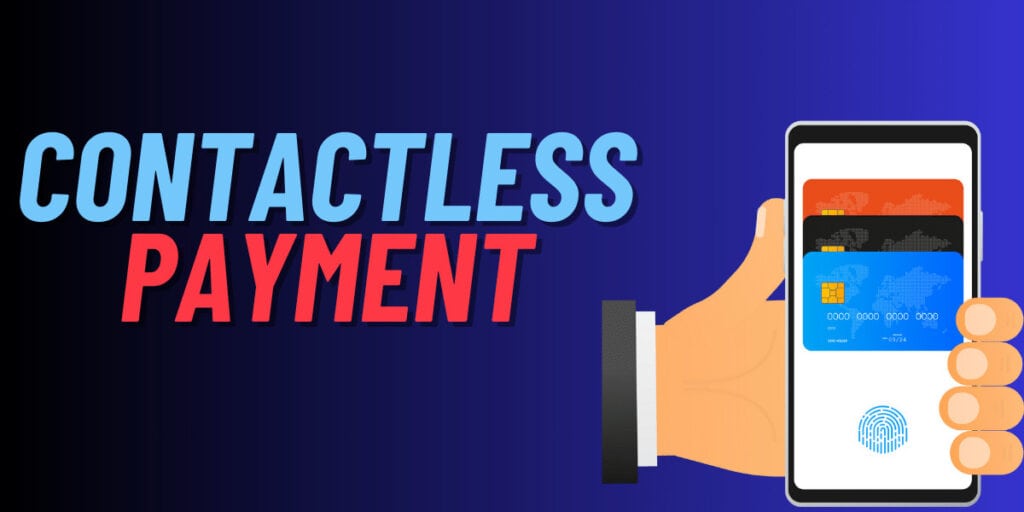
- 93. Purchasing Souvenirs Away from Tourist Spots
Buying souvenirs away from main tourist areas can lead to better prices and more authentic goods. I enjoy exploring local shops and markets for unique finds.
- 94. Subscribing to Airline Newsletters
Subscribing to airlines’ newsletters has alerted me to flash sales and special promotions, leading to unexpectedly cheap flight bookings.
- 95. Using a Money Belt or Hidden Wallet
I use a money belt or hidden wallet to keep money and documents safe. It’s a simple way to ensure security, especially in crowded tourist areas.
- 96. Traveling with a Compact Camera or Smartphone
Instead of a bulky DSLR, traveling with a compact camera or a smartphone for photography is more convenient and lighter. Modern smartphones have excellent cameras suitable for most travel photography needs.
- 97. Checking Mobile Plans for International Options
Before traveling, I check my mobile plan’s international options. Some carriers offer affordable travel add-ons, which can be more convenient than buying a local SIM card.
- 98. Attending Timeshare Presentations for Perks
Attending timeshare presentations can sometimes offer perks like free meals, tours, or accommodation. While they require time and sitting through sales pitches, the rewards can be substantial.
- 99. Using Credit Card Concierge Services
Some premium credit cards offer concierge services, which can be invaluable for making travel arrangements, especially in unfamiliar destinations.
- 100. Enjoying Nature and Public Spaces
Exploring nature and public spaces like beaches, parks, and hiking trails offers enriching experiences without any cost. I always make time to enjoy the natural beauty of my travel destinations.
- 101. Keeping a Travel Journal
Keeping a travel journal helps reflect on experiences and track spending. It’s a budgeting tool and an excellent way to preserve memories from each trip.
- How Travel Hacking Can Save You Time, Money & Stress
Embracing Travel Hacking 101 isn’t just about cutting costs; it’s a comprehensive approach to making your travel experiences smoother, more affordable, and enjoyable. Imagine bypassing the usual stressors of travel – the hefty expenses, time-consuming planning, and those unexpected hiccups. Travel hacking equips you with strategies to navigate these challenges efficiently.
From leveraging points and miles for free flights and stays to discovering the art of packing light and intelligence, each hack is a step towards a more streamlined journey.
It’s about knowing the right time to book flights, the best ways to find unique accommodations, and even tips on immersing yourself in local cultures without overspending.
Adopting these travel hacking techniques transforms how you travel, turning every trip into an enriching and economical adventure. This is the essence of Travel Hacking 101 – travel more intelligently, not more complex, and watch as the world opens up with possibilities, minus the stress and strain on your wallet.
- Final Thoughts
As we wrap up our journey through the world of Travel Hacking, it’s clear that this isn’t just a set of tips and tricks; it’s a mindset shift. Embracing Travel Hacking means stepping into a world where travel is more accessible, less stressful, and infinitely rewarding.
It’s about breaking free from the traditional constraints of travel, uncovering cost-effective methods, and discovering shortcuts that make the journey as enjoyable as the destination. Whether leveraging loyalty programs, finding hidden gems off the beaten path, or knowing the best time to book your flights, each aspect of Travel Hacking opens up new possibilities.
It transforms how we perceive and approach travel, turning each trip into a well-orchestrated adventure tailored to our preferences and budgets. So, as you embark on your next travel adventure, remember that the essence of Travel Hacking lies in exploring the world on your terms, making each experience uniquely yours.
Frequently Asked Questions
- What is Travel Hacking?
Travel Hacking refers to strategies to optimize travel experiences, primarily focusing on reducing costs, maximizing rewards from loyalty programs, and utilizing resources effectively. It includes using credit card points for flights and hotels, finding the best travel deals, and employing clever packing techniques to save time and money.
- Can Travel Hacking Save Me Money?
Absolutely. Travel Hacking can lead to significant savings on travel expenses. By strategically using credit card rewards, taking advantage of airline and hotel loyalty programs, and being flexible with travel dates and destinations, you can dramatically reduce the cost of flights, accommodations, and other travel-related expenses.
- Is Travel Hacking Legal and Ethical?
Yes, Travel Hacking is both legal and ethical. It involves using existing travel and credit card reward programs to your advantage. It’s about being bright with bookings, utilizing rewards, and staying informed about the best travel deals and strategies. It does not involve any deceitful practices.
- Do I Need a Lot of Credit Cards for Travel Hacking?
Not necessarily. While having multiple credit cards can potentially increase your points and rewards, effective Travel Hacking can be achieved even with a single, well-chosen credit card. The key is to select cards that align best with your travel goals and spending habits.
- How Do I Get Started with Travel Hacking?
To start Travel Hacking, assess your current travel goals and spending habits. Sign up for a rewards credit card that aligns with these goals, join airline and hotel loyalty programs, and stay informed about current travel deals and tips. It’s also important to keep track of your points and rewards to optimize their usage.
Hi, I’m Fahim. A software reviewer & AI specialist
Affiliate Disclosure:
We’re reader-supported. We may earn an affiliate commission when you buy through links on our site.
Experts make our reviews before being written and come from real-world experience.Check our Editorial Guidelines and Privacy Policy
- 65. Using Google Flights' Explore Feature
Related Articles


Travel hacking: Your guide to travel the world for free!
Travel Complete Travel Hacking Guide
If you're an avid traveler who takes an average of six trips a year, you're probably already travel hacking. If you're not, but you aspire to take six trips (or more) a year and not burn a hole in your pocket, you ought to start travel hacking. Here's everything you need to get started on travel hacking and travel the world for free!
Travel Hacking Deconstructed - All Your Questions Answered

What is Travel Hacking?
Is travel hacking legal, do you need specific skills to become a travel hacker, does travel hacking consume a lot of time, do you need to spend a lot of money to travel hack, what are the best proven methods of travel hacking, what are the best credit cards for travel hacking.
Travel hacking is basically working around the existing rules set by airlines, credit cards, and hotels, and using them to your advantage to earn free travel - be it flights, stay or other upgrades. Travel hacking may sound complicated, like an art that needs to be mastered over time, but it's no rocket science and is very easy if done the right way.
This question often comes to mind because we associate the word "hacking" with things illegal. However, travel hacking is completely legal. Cashing in on credit card bonuses is absolutely legal. Banks and airlines are well aware of these hacking tactics and often craft promos and offers around these workabouts. Travel Hacking is simply figuring out the rules of the game and capitalizing on them, thereby maximizing your profits.
Absolutely not! You don't need any specific skills - patience and a keen eye is all you need. As hard as it may sound, earning free flights is relatively simple. A good internet connection, patience for thorough research and keeping a keen eye on the constantly changing rules and promotional offers is good enough to get you started on travel hacking.
Again, no. It's a year round process, a sort of lifestyle you need to adapt. Travel Hacking does not involve sitting in front of your laptop for 5 hours a day straight, so it's not time consuming at all. You need to stay organized and on top of your mile and point accrual, but apart from that, it's all about the spending choices you make and how quickly you spot/chance upon a deal and make the most of it.
Since credit card points are a huge player in travel hacking, it may sound like you'll need to up your spending game just to leverage the miles and points. That's again a myth and absolutely not true. Yes, it is true that credit cards have a limit to meet, but a little financial planning on your part should do the trick. Pick up the group tab at dinner and have everyone pay you back. Fill the fuel with your card. Pay your bills with the card.

Now that you know what travel hacking is, that it's perfectly legal and easy; let's get travel hacking.
#1 Sign up for airlines credit cards and cancel the ones you don't use.
It goes without saying that frequent flying miles is the lifeline of travel hacking. Most major airlines offer a branded credit card and signing up for these cards come with a host of perks. From bonus joining miles, free checked-in luggage, priority boarding etc. these credit cards are a good source for travel hacking. In fact, most airline credit cards offer enough bonus miles for atleast one free flight ticket. Here's a list of the top airline cards you must consider.
While many people are concerned that signing up for new credit cards will hurt your credit score, that's not absolutely true. This can be true if you have pending credit card debt, but if you are relatively debt-free and have good credit, applying for a few new cards won’t hurt. However, avoid opening them, grabbing the bonus, and then closing them, a process known as “churning.” Also, when you sign up for a travel rewards credit card you must meet their minimum spend requirements in order to earn the points bonus. Read the fine print before signing up.
Airline cards have yearly fee, so if you don't find it beneficial, don't hesitate to cancel them. It doesn't hurt your credit score to cancel a card and is anyday better than paying a yearly sum for something you don't find value in. If you have pending credits, you can always transfer it to other cards with that card company.
#2 Search multiple airfare aggregators
While most of us start with Google Flights and then move onto Skyscanner, Momondo and then stop right there, take some time to go beyond the top engines. Many of these aggregators don't list smaller websites with cheap carriers, the domestic airlines etc. Always make it a point to look for the country's local airline websites before you take the final call. Smaller websites don't list on aggregators because of the high commission charges, so you're losing out on the cheapest fares if you skip these. In fact, there many been many cases where the airline website displays fares cheaper than aggregators. A thorough round of research is paramount to travel hacking.
Looking for more cheap ways to score flight tickets? We have 17 tried and tested hacks to snagging cheap flight tickets
#3 Sign up for multiple loyalty rewards and frequent flyer programs
Frequent flyer program sign ups are absolutely free and don't cost you a penny. Whenever you stay at a hotel chain or fly an airline, make sure to sign up for their program to earn credits for that journey. Always (we repeat, always), make sure you earn some sort of credits, points or miles for your journey. You can also check the airline/hotel website before booking to see if they're running a promotion or offer for loyalty points and miles.
Another good way to speeden up travel hacking is to stay a loyalist. If you've signed up for 3 hotel loyalty programs and 3 airline miles, be a dedicated repeat customer and use the same chain as much as possible. Find brands you like and are comfortable with and try your level best to stay a loyalist (provided costs and availability adds up).
As and when you start accumulating points, use the Award Wallet to keep a tab on your miles and points. It's also got an interesting feature that alerts you when your points and miles are about to expire.
#4 Love eating out? Exploit Dining Reward Programs
Most airlines have dining rewards programs that you can leverage, especially if you frequently dine out. Sign up with your frequent flier number, register your credit card, and get extra points when you dine at participating restaurants in the airline’s network . While you can sign up for every other dining program there is, you cannot register a credit card with more than one. That means that if your Chase Sapphire Preferred card is tied to your American Airlines account, you can’t earn miles on your United Airlines account with that same card. But if you plan out different cards for different spends (hotels, shopping, dine-in etc), you won't have this problem. That said, you'll need to maintain the minimum spends for all your cards to make use of the miles and points, so a little financial planning before hand will come handy.
Sign up for our monthly newsletter
Your dose of travel fix - from hacks and deals to travel tips and everything in between, delivered monthly to your inbox
#5 Take 5 minutes of your day for an E-Rewards Survey
e-Rewards is an invitation-only rewards community. Share your point of view in online surveys, test upcoming products, participate in real-world missions and you stand a chance to earn e-Rewards currency. This currency can be redeemed in exchange for a wide variety of dining and air miles, to loyalty points and tickets to unmissable events. Since it is a reward only program, you'll need one of the partners to send you an invitation when you stay/dine/fly with them. Once you sign up, you'll get surveys via email and when you complete answering them, your account will be credited with a certain number of e-Rewards currency that you can redeem as points for various partnered expenses. They have a strong and varied clientele - Ethihad, British Airways, Radisson, Accor,Hertz, IHG, Starbucks and a lot more. Check out the complete list here .
#6 Don't hesitate to buy some miles and points (when and if it makes sense)
Financially, buying miles only makes sense if you’re looking to travel in first or business class tickets on international airlines. Most airlines charge high prices for miles, and paying cash for a ticket in coach is more cost-effective than buying miles to redeem for economy. However, when there is a promotion that lowers the price of purchased miles, do not let go of the opportunity. There are many websites that send you milege sale mailers, so sign up for a bunch and keep an eye out. If you're planning an international travel in the near future, especially a long-haul flight and you're dreading the thought of crammed leg space in economy, buying miles definitely makes sense. Before going for that latest promotion, you’ll want to price out your tickets in both cash and mileage. One Mile at a Time keeps a good eye on mile sales promotions, so sign up to their newsletter to take advantage of these flash sales.
Can't find direct flights and need ideas for a fulfilling layover? Here are 12 Creative Ways To Make The Most Of Your Airport Layover .
Credit Card companies change their rules yearly, so what's good this year may not be the best as of next year. However, there are a few constants that make it to every travel hackers wallet. The top few are:
- Chase Sapphire Preferred
- Chase Sapphire Reserve
- Capital One® Venture® Rewards Credit Card
- Delta SkyMiles® Platinum American Express Card
- Platinum Card® from American Express
- Discover it® Miles
For a complete list of the year's best travel credit cards, head here .
Like it? Pin it!

Lakshmi Menon
Born to parents bit by the wander bug, Lakshmi calls her love for travel "hereditary and habitual". Perpetually ensconced with a book in her hand and a mug of coffee in the other, she has been to over 15 countries in her 23 years of existence and is currently saving miles and money for her solo trip to Iceland. Always hustling towards the least trodden path, she has encountered some wonderful people during her escapades and if you ever meet her, she won't stop gushing about them.
Be a smart traveler
The first to know about trending destinations, travel deals, tips and all things travel.

What Is Travel Hacking?
I almost cringe at the term “travel hacking”- it sounds like something illegal. But that’s the commonly used phrase for the art of getting free or discounted travel through award points and miles .
Try not to think of hacking like a guy on his computer in a dark basement breaking into your bank account online. Think more along the lines of a pinterest life-hack, like “you can remove deodorant stains from a shirt by rubbing it with a dryer sheet.”
Helpful hacks. Not illegal.
How to Travel Hack 101
There are numerous strategies for accumulating these award points and miles but the quickest and most common way is strategically opening credit cards with major sign-up bonuses .
Before I learned about all of the people who are successfully traveling the world by opening dozens of credit cards, I was extremely skeptical. I had one credit card to my name, which I almost never used.
A quick word about credit
Yes, spending on credit is a slippery slope for some people. If you cannot stay on top of your finances nor keep your card paid off, then this may not be the hobby for you.
But if you are responsible with credit and have time to put in a little effort to learn the ropes, travel hacking really pays off.
In fact, our credit scores have gone up since we started our travel hacking hobby. This is because we’ve responsibly managed more and more credit.
A travel hacker in action
Just so you don’t have to take my word for it, here’s an official news report about a travel hacker showing a reporter how it’s done:
How we got started travel hacking
I first learned about travel hacking in 2014. I started small, focusing on miles we could earn with the Alaska Airlines award program to get two of us to Europe.
I soon expanded to the American and United award programs with a few more credit cards. By the end of that year, we had booked two pairs of round-trip international flights (France and Jamaica), all paid for with miles!
I’ll admit: travel hacking has a bit of a learning curve .
While our credit scores have actually gone up, it’s only because I’ve learned the ropes.
Travel Hacking 101
Thankfully, many who have gone before us have created comprehensive guides to travel hacking. I purchased a course, which gave me all the essential info I needed to get started.
These are important things to know before diving in to travel hacking:
– when to apply and when to cancel credit cards – how to find the best sign-up bonuses – creative ways to meet the minimum spend requirements to earn sign up bonuses – which points are most valuable – how to not to waste miles once you’ve earned them
What are the Benefits of Travel Hacking
Travel hacking is a valuable resource for you to maximize savings on your travels. You don’t have to be a frequent flyer to leverage rewards programs.
More savings. You can significantly reduce expenses on flights, accommodations, dining, and transportation.
Enriched experiences. Travel hacking opens doors to luxurious amenities that might otherwise be out of reach, from flight upgrades to stays in upscale hotels.
Exclusive privileges. Many credit cards and loyalty programs offer exclusive perks such as complimentary checked bags and access to airport lounges.
Flexibility . These days award flights are easy to change or cancel without penalty, so you can book “placeholder” flights until you find something better.
Frequently Asked Questions About Travel Hacking
Is travel hacking legal? Yes, travel hacking is legal. Travel hacking refers to the legitimate practice of leveraging award points and miles to obtain free or discounted travel. It is not associated with illegal activities like hacking into computer systems.
Is travel hacking suitable for everyone? Travel hacking can be beneficial for individuals who are responsible with credit and have the time to learn about the strategies involved.
However, it may not be suitable for those who struggle to manage their finances or cannot pay off their credit card balances regularly.
Responsible management of credit is crucial to avoid falling into debt or damaging your credit score.
Have you tried travel hacking? If not, what are your biggest concerns? If it doesn’t sound right for you, see our other budget travel recommendations in our book, Unconventional Budget Accommodations .
You might also like these posts:
– How to Save on Travel Accommodations with Help Exchange – How to Eat Well on a Budget While Traveling – How To Travel On Just $15 A Day
–
~ Pin this post for later or share with friends ~

Similar Posts
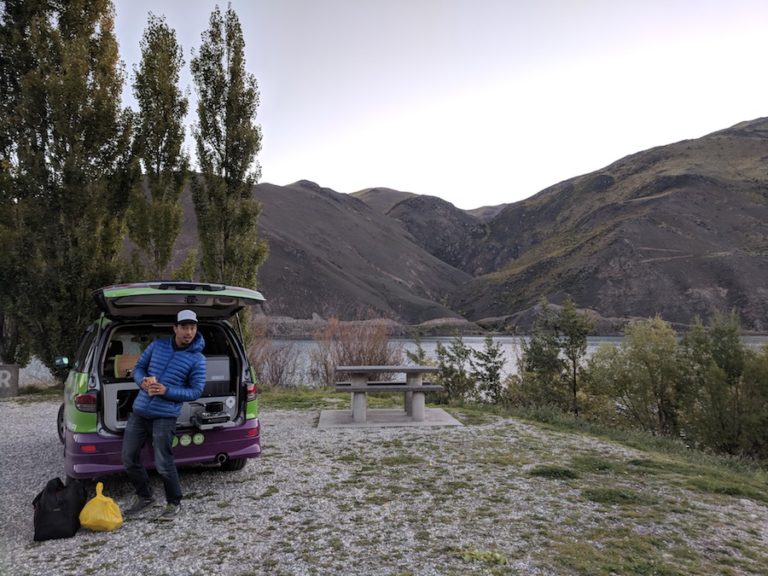
10 Things You Should Know Before Road Tripping New Zealand
Taking a New Zealand road trip was a dream come true for us. It was a trip we didn’t expect to be taking so soon in our lives. But then our friends, Heath and Alyssa, were also thinking of visiting New Zealand, and we couldn’t pass up the opportunity to travel together and add New…
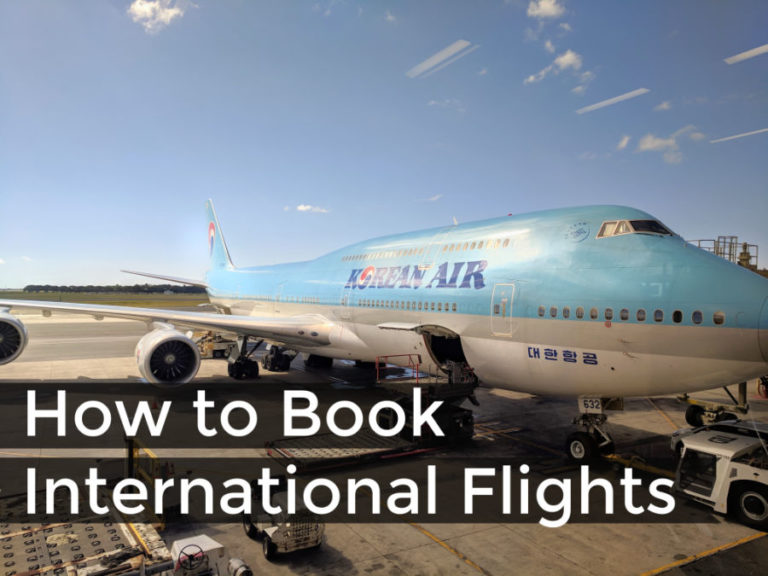
What is the best way to book international flights?
We are often asked how to find and book the best international flight deal. What is the best site for international flight searches? When is the best time to buy international airline tickets? Which international airlines are recommended? After sharing our flight booking tips with friends and family, we knew this information could be helpful for…
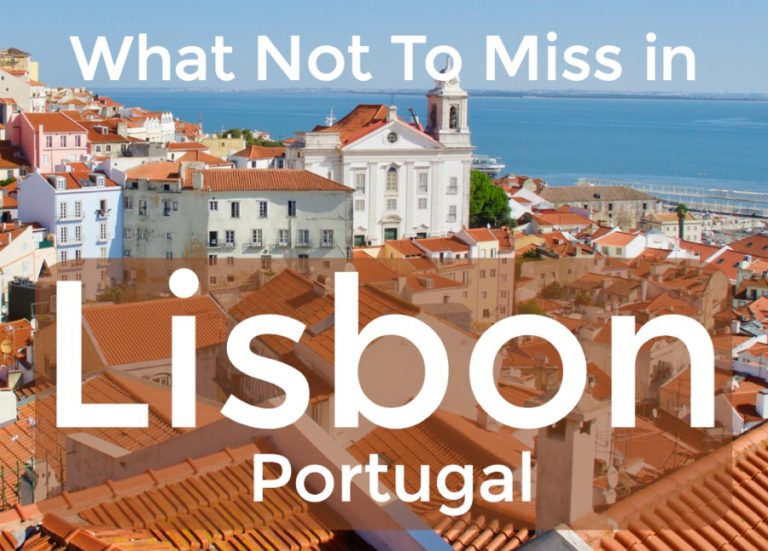
What Not to Miss in Lisbon (On A Budget)
Lisbon, Portugal is a beautiful city and one of the most affordable in Western Europe. It’s no wonder tourism is booming there. After staying in the city for six weeks (October and November), we came up with this list of our favorite “must see” attractions and things to do in Lisbon. We hope it’s helpful…

Why use Airbnb rentals – Plus our Airbnb photos around the world!
Here’s why an Airbnb rental is still our top choice for accommodations right now. Plus, we share our safety tips for using Airbnb during the Coronavirus pandemic. What is Airbnb? Whether you’re looking for budget accommodations, hoping to stay with a local in a foreign place, or want more than a typical hotel can offer –…

Ultimate Guide: What to Do in Hoi An Vietnam
Hoi An has become our favorite destination in Central Vietnam, if not all of Southeast Asia. Its old world charm, recognized with a UNESCO World Heritage designation, variety of restaurant options, and full moon lantern festivals draw visitors from around the world to this unique port town. While tourism does overwhelm certain parts of Hoi…

“Travel Hacking” with the Alaska Airlines Award Program
One of our goals for our first year after Peace Corps was to take two international trips using frequent flyer miles, and I am pleased to announce that we succeeded! In September, we took a month-long voyage to France and Switzerland (with a stop-over in Boston on the way home). And in December, we returned to our Peace…
One Comment
Welcome to the crazy club! 🙂
Leave a Reply Cancel reply
Your email address will not be published. Required fields are marked *
This site uses Akismet to reduce spam. Learn how your comment data is processed .

Attorney & personal finance expert
Student debt, student loans.
- Credit Cards
Side Hustle
What does travel hacking really mean.
- August 15, 2024
Michael Dempster
Written by:
Travel can be expensive.
According to Deloitte’s 2024 summer travel survey , less than half of surveyed Americans planned to take a vacation this summer. The main reason for those not traveling? The expense.
If you’re struggling to justify the cost of your next big trip, travel hacking can help. All you need is a little research, patience, and arithmetic to take to the skies.

Erika Taught Me
- Travel hacking makes travel accessible to responsible credit card users of all income levels.
- Core travel hacking strategies are choosing credit cards that align with your spending habits, qualifying for welcome offers, and selectively redeeming points for flights and hotel stays.
- The lure of converting credit card points into “free” travel may subconsciously motivate you to overspend — so hack responsibly.
What Is Travel Hacking?
Travel hacking is earning rewards points from your credit card spending and redeeming those points for flights and hotels.
Brian Kelly, founder of The Points Guy and an Erika Taught Me podcast guest , says the concept of travel points originated with frequent flyer programs, which were created to encourage loyalty to specific airlines.
The success of these programs — “the most effective marketing tool that’s ever been created,” says Kelly — led credit card issuers to partner with travel brands’ loyalty programs and/or create their own programs.
Credit card issuers use rewards points to encourage you to spend money, which increases their revenue through interest and fees. But if you’re responsible, you can travel hack while avoiding those costs.
How To Travel Hack
There are as many ways to travel hack as there are ways to travel. But these are the basic steps for new hackers.
Consider your goal
Ask yourself the following questions to select the right credit cards for your adventures:
- Do you travel to get away from the grind, or do you mostly travel for work? You’ll want a personal travel card for recreational travel and a business travel card for work-related travel .
- Are you an airline loyalist or a deal butterfly? You should get a co-branded airline card if you primarily fly with one airline. But a transferable-points card is best if you fly with whatever carrier offers the best prices.
- Do you love luxuriating in 5-star hotels, or do you prefer homestays? Go for a hotel rewards card to get free nights in your preferred hotel chain. Homestay websites like Airbnb typically aren’t classified as hotels, so if that’s your preference, pick a card with a high rewards rate on every travel purchase to maximize your spending on those sites.
Capitalize on welcome offers
Credit card welcome offers are the easiest way to accumulate points quickly. Though they’re often referred to as “sign-up bonuses,” they’re typically awarded only if you meet a minimum spending requirement within a given period, like three months.
Cards with annual fees usually have more lucrative welcome offers than cards with no annual fee. But if you’re new to credit cards, I advise starting with a no-annual-fee card to start building your credit score.
Once you’ve anchored your credit history with a no-annual-fee card, take a look at annual-fee cards with bigger welcome offers.
Earn points from regular spending
Choosing a credit card that gives you a lot of points in the purchase categories where you spend the most — like groceries, dining , or gas — will speed up your points accumulation. And using multiple cards with different rewards structures ensures you’ll earn a high number of points on every purchase you make.
Kelly says business credit cards as a superb way to generate extra points for those who qualify — and more of us qualify than we may realize.
“You don’t need to have a 100-person small business,” says Kelly. “You can be a sole proprietor with an Etsy shop and then open up the whole world of business credit cards and their huge bonuses and spend categories.”
READ MORE: How To Choose a Credit Card
Redeem the right way
Although travel rewards cards often allow you to redeem points for a statement credit against any purchase (as you would with cashback cards ), this usually results in low redemption values of around half a cent per point.
You’ll typically receive better value — generally one cent to 1.5 cents per point — if you redeem points for a statement credit against a travel purchase you made or use points to book travel via the card’s travel platform.
However, rather than redeeming points directly with your card issuer, you can increase your points’ value by using credit cards with points that transfer to different airline and hotel loyalty programs.
Just be sure to calculate the value a potential redemption will give you before you make the transfer. Some transfers give you much better value than your card’s in-house loyalty program, while others are a waste of points.
For example, let’s say you want to visit Istanbul, but you recoil at the prospect of transatlantic flights in a cramped economy seat.
Fortunately, you’ve accumulated a lot of Capital One miles from using your Capital One Venture Rewards Credit Card , and you know those miles convert to Turkish Airlines Miles&Smiles at a 1:1 ratio.
So you navigate to Turkish Airlines’ website and find a business-class roundtrip flight from New York to Istanbul for 130,000 miles and $472.90 in taxes and fees.
Pulling up the cash price of the same itinerary offers a quick reference point for what you’d pay if you were to save your miles instead.

You then subtract $472.90 — the amount you’d pay in taxes and fees if you redeem miles for the flight — from the $4,177.40 cash price, resulting in a difference of $3,704.50.
Dividing $3,704.50 by 130,000, the number of miles you need for the redemption, shows you’ll be getting an excellent value of over 2.8 cents per mile for this deal.
Please Hack Responsibly
When you approach it methodically, travel hacking is the best way to maximize the rewards you earn on your everyday spending. But certain mistakes will turn a hack into a headache.
Letting miles lapse
“Always keep an eye on your expirations,” says Kelly. “When your miles expire, that’s pure cash in the airline’s pocket. They win. You lose.”
For example, Kelly cites American Airlines as a carrier that expires its members’ miles in some circumstances.
Fortunately, there are a few easy ways to prevent points from expiring, including:
- Periodically make minor purchases with your credit card to earn a few new points.
- Instead of shopping directly with a retailer online, use an airline’s mileage portal to make the purchase. Some portals partner with widely used retailers like Apple, BestBuy.com, and CVS.com.
- Donate points to one of the loyalty program’s non-profit partners.
Carrying a balance
As of mid-2024, the average annual percentage rate (APR) on credit cards is 21.51%, according to the Federal Reserve .
If you carry a balance rather than repay the card in full each month, that crushing interest exceeds any rewards you’re getting.
View this post on Instagram A post shared by Erika Kullberg (@erikankullberg)
To avoid running a balance, only apply for cards with welcome offers that you’ll qualify for based on your normal spending.
And if you find yourself debating a potential purchase, push out any “well at least it will earn points”-type thoughts that might cloud your judgment.
READ MORE: How Does APR Work on a Credit Card?
Opening too many cards
It may be tempting to “churn” credit cards — i.e., repeatedly open new credit cards, earn their welcome bonus, and promptly close them.
But opening a new card results in a hard inquiry on your credit, which will typically shave a few points off your credit score .
And each new card reduces the average age of all your credit accounts, hurting your score further.
What’s more, some issuers have fine-print provisions that entitle them to take away the rewards you’ve earned and cancel your cards if you attempt to churn them.
Others won’t approve you for new cards if you’ve recently opened too many cards within a short period.
There are two broad rules of thumb for new credit card accounts:
- Don’t open more than five credit cards every two years.
- Keep each credit card open for a minimum of one year.
READ MORE: How Many Credit Cards Should I Have?
Closing prematurely
Closing a credit card increases your credit utilization , which is worth 30% of your FICO score. For this reason, it’s generally a good idea to keep no-annual-fee credit cards open, even if you rarely use them.
The decision to keep or close a credit card with an annual fee, however, is a trickier call.
When you approach an annual-fee card’s renewal date, look at the cumulative rewards it’s earned and the number of times you’ve used its extra features (lounge access, insurance, etc.) in the past year.
Did the combined value of those earned rewards and benefits exceed its annual fee?
If not, call the card issuer, politely explain to them that you’re not benefiting from the card as much as you’d anticipated, and ask if there are special offers available that may give the card greater value. The issuer may offer a significant retention bonus to keep your business.
If no such offers are available, ask if you can “product-change” to a no-annual-fee card, which will transfer your current credit limit to the new card and protect your utilization.
Is travel hacking legal?
Travel hacking is legal. However, travel hackers are expected to abide by the agreements they enter into with their credit card issuers and travel carriers, some of which forbid specific hacking tactics.
For example, card issuers may prohibit you from opening multiple credit cards, earning their welcome bonuses, and then quickly closing the cards.
As another example, some airlines bar passengers from obtaining lower fares by purchasing a multi-flight itinerary and disembarking at one of its layovers.
Does travel hacking hurt your credit score?
Travel hacking itself won't harm your credit score. What will, however, is opening too many credit cards in a short period, or repeatedly closing cards shortly after earning the welcome offer.
Every new card application requires a hard credit check, which dings your score. And part of your credit score is based on how long your accounts have been open — so repeatedly opening and closing cards will be a red flag. Keep any no-annual-fee cards open to avoid the hit to your score.
TL;DR: Does Travel Hacking Really Work?
Travel hacking works when you follow these guidelines:
- Treat your credit cards like cash, and don’t spend more than you regularly would just to earn more points or miles.
- Pay your card balances in full and on time.
- Never redeem points or miles for a value of less than one cent each.
Follow those rules and you'll be well on your way to (responsibly) hacking your way around the world!
And for more travel hacking tips, check out these episodes of the Erika Taught Me podcast:
- Fly First Class for Free With These Travel Hacks With The Points Guy
- Travel Hacks From the Man Who Has Visited Every Country in the World
- Upgrade Your Life With These Life Hacks With Chris Hutchins

Learn With Erika
- Learn how to get started as a beginner investor and make your first $10,000
- Discover how you can save $1,000 without penny pinching or making major life sacrifices
- Ask investing questions, share successes and participate in monthly challenges and expert workshops
Michael Dempster is a writer and editor who covers personal finance, travel, LGBT issues, fashion, sports, and healthcare. His clients include adidas, Haaretz, ConsumerAffairs, Retirement Living, and Money Under 30.
Latest Articles

How To Travel for Free with Credit Cards

United℠ Explorer Card Review: A Top Travel Card for United Fans

Best Gas Credit Cards in August 2024

Best Credit Cards for Restaurants and Dining in August 2024
Related articles.
One of my favorite things about using credit cards is you can use them to earn free flights and hotels. In one recent year, I

How To Avoid Single Supplement Charges
As great as it can be to travel solo, it can also be expensive. One of those expensive costs is what’s known as the “single

Best Business Travel Hacks for Your Next Work Trip
My first business trip at age 22 was a laughable disaster. To start things off, I didn’t leave the office in time so I barely

Delayed Baggage Compensation: What Are You Entitled To?
Imagine this: You’ve just landed in Florida for a business conference and you’re waiting at baggage claim for your suitcase to arrive. One by one,
Compare To Other Cards
Best offers from our partners.
Reward rate
Welcome bonus
Regular APR
Recommended credit

Free Resources

I'm an award-winning lawyer and personal finance expert featured in Inc. Magazine, CNBC, the Today Show, Business Insider and more. My mission is to make personal finance accessible for everyone. As the largest financial influencer in the world, I'm connected to a community of over 20 million followers across TikTok, Instagram, YouTube, Facebook and Twitter. I'm also the host of the podcast Erika Taught Me. You might recognize me from my viral tagline, "I read the fine print so you don't have to!"
I'm a graduate of Georgetown Law, where I founded the Georgetown Law Entrepreneurship Club, and the University of Notre Dame. I discovered my passion for personal finance after realizing I was drowning in over $200,000 of student debt and needed to take action-ultimately paying off my student loans in under 2 years. I then spent years as a corporate lawyer representing Fortune 500 companies, but I quit because I realized I wanted to have an impact; I wanted to help real people and teach them that you can create a financial future for yourself.
Advertiser Disclosure
Our aim is to help you make financial decisions with confidence through our objective article content and reviews. Erika.com is part of an affiliate sales network and receives compensation for sending traffic to partner sites, such as MileValue.com. This compensation may impact how and where links appear on this site. This site does not include all financial companies or all available financial offers. Terms apply to American Express benefits and offers. Enrollment may be required for select American Express benefits and offers. Visit americanexpress.com to learn more.
- TODAY’S TOP FARES
- WEEKEND DEALS
- SEARCH FARES FROM A CITY
- SEARCH FARES TO A CITY
- SEE CHEAPEST MONTH TO FLY
- SEARCH & COMPARE FLIGHT DEALS
- SET UP FARE PRICE ALERTS
- ALL AIRLINE DEALS
- ALASKA DEALS
- AMERICAN AIRLINE DEALS
- DELTA DEALS
- JETBLUE DEALS
- SOUTHWEST DEALS
- UNITED DEALS
- ALASKA AIRLINES
- ALLEGIANT AIR
- AMERICAN AIRLINES
- DELTA AIRLINES
- FRONTIER AIRLINES
- HAWAIIAN AIRLINES
- SOUTHWEST AIRLINES
- SPIRIT AIRLINES
- SUN COUNTRY AIRLINES
- UNITED AIRLINES
- AIRLINE BAGGAGE FEES
- AIRLINE CODES GUIDE
- SEE ALL BLOG POSTS
- RECENT FARE SALES
- TRAVEL TIPS & ADVICE
- TRAVEL GEAR
- SEE MY ALERTS
- MY ALERTS Get Money-Saving Alerts Sign Into Your Account Get Alerts By proceeding, you agree to our Privacy and Cookies Statement and Terms of Use Or Sign In
- SEARCH HOTEL DEALS BY DESTINATION
- SEARCH FAVORITE HOTEL BRANDS
- SET UP ALERTS

What is travel hacking—and should you be doing it?
See recent posts by Alene Laney
Can you really get free travel?
It sounds like a scam, but many travelers manage to vacation for pennies on the dollar regularly. They might call themselves “travel hackers,” but they’re really just points and miles enthusiasts who are extremely good with credit, credit card rewards, and loyalty programs.
Even though you’ve seen other people do it, you’re probably also wondering if it’s worth it. We all have a friend who has been lured into credit card debt. Or, you may have tried a card only to find it difficult to earn and redeem enough points for a good vacation.
So, how are all these people—these “travel hackers” who post pictures of themselves in first class—doing it? And more importantly, can you do it, too?
If you want to know more about how it works and how you can start, you’ll want to read this.
What is travel hacking?
Travel hacking is a way to get travel for a low cost, sometimes even for free. What most people mean when they say they “travel hack” is they’re redeeming credit card points or frequent flier miles for flights, hotels, car rentals, and other travel costs. People who get good at it are known for booking luxe travel on the cheap.
Zachary Abel, TikTok phenom and travel blogger says travel hacking is about making the system work for you rather than against you. “The biggest misconception is that travel hacking is somehow cheating,” he says, “but it’s just optimizing benefits that many have access to and don’t realize it.”
Travel hacking has a lot of benefits, such as:
- Using points to pay for travel
- Redeeming miles for flights
- Traveling more often
- Staying in nicer hotels
- Learning how to earn status
- Upgrading your flight or hotel room
- Taking family with you at a lower cost
- And countless other benefits
Once you’ve tried it, it’s hard to go back to paying cash.
Learning how to “travel hack” by taking advantage of credit card rewards is easier than ever. There are a bevy of sites with excellent articles and courses to help you learn the ropes.
It starts with a travel rewards card
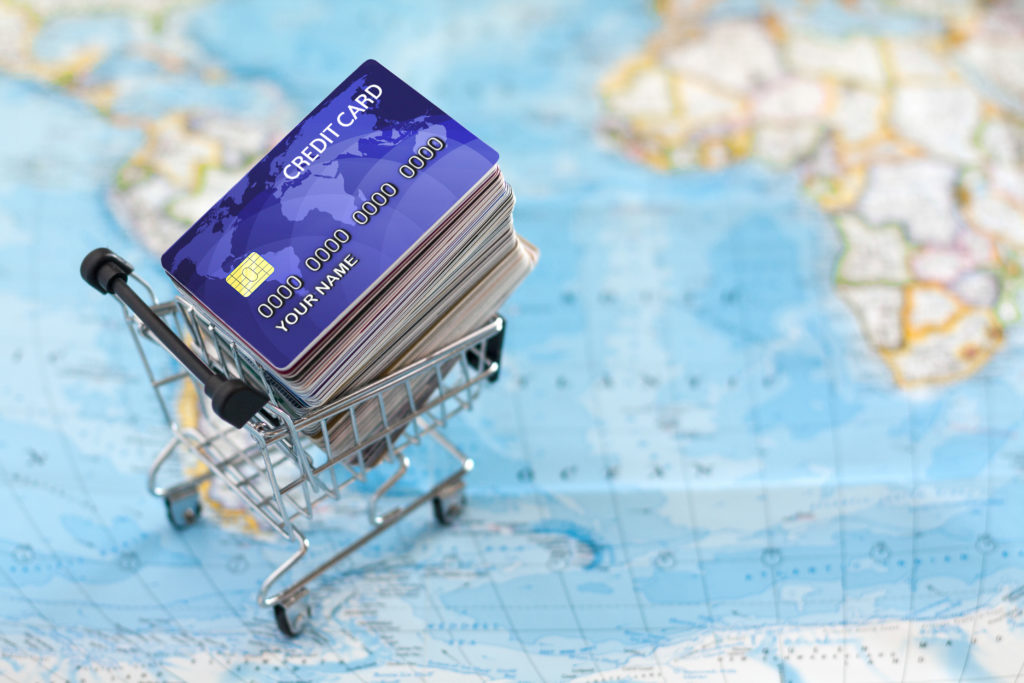
If you’re open to earning travel rewards with credit cards, the next question you may ask is, “What credit card should I get?” You’ll want to consider a few things before deciding, such as:
- What travel partners pair with the credit card?
- How much are the points worth?
- Is the sign-up bonus lucrative enough?
- Does it have foreign transaction fees?
- Will it be accepted where you spend money?
Surprising things most travel hackers don’t consider dealbreakers include:
- Interest rate
- Bonus points categories
If you pay off your credit card bill every month, you shouldn’t be paying any interest, so the interest rate isn’t very important to people earning points and miles.
The annual fee is a consideration, but most travel hackers can see the value in paying it to get the benefits of the card. What travel hackers do look at is how high the fee is and whether or not the added benefits of a more expensive annual fee are worth it.
Also, many travel hackers continue to open a handful of cards every year, so the points bonus categories unique to each card may not be as important to a travel hacker.
Related: The Best Family Reward Credit Cards
Cards you can start with
Looking further into the details of the card can help you find one that will work for your travel goals. However, while every major card issuer has a travel rewards card product, there do seem to be some clear winners for the best travel rewards cards.
The Chase Sapphire Preferred card is a popular choice even for experienced travel hackers. There are a large number of desirable travel partners, an easy-to-use travel portal, a lucrative sign-up bonus, and a referral bonus program that can help you earn a ton of points. It’s a great first card to get you started in the hobby.
Currently, the offer for signing up for this card is 80,000 bonus points. To put that in perspective, you could score 16 free hotel nights at a category 1 Hyatt (like the Hyatt Place or Hyatt House). You could also get a free flight to Tahiti with that sign-up bonus.
Another card you’ll want to look at is the American Express Gold. The American Express Gold earns 4X points on supermarket purchases, 4X on dining charges, and 3X on airfare booked directly with the airline. Other cool benefits like the monthly dining credits, Uber credit, and travel perks make this a card worth considering. The sign-up bonus is 60,000 Membership Rewards, which goes far towards redeeming travel.
How do travel hackers earn more points than the rest of us?
Travel hackers don’t wait around for their points to accrue via spending on a credit card. In fact, if you only have one credit card, you’re probably not earning as many points as you want or traveling often as you would like.
Bryce Conway, founder of the popular online travel community 10X Travel , says travel hackers have realized two things:
- It’s really easy to earn a lot of points and miles, most times without even flying.
- If you put in just a little time and effort to learn how they work, you’ll see outsized results from that.
“Travel hackers are able to earn more points than the average person because they are really savvy with credit cards and credit card offers,” he says.
“They’ll often open more credit cards than the average person. The reason behind that being that the bonuses on credit cards are so incredibly lucrative compared to ongoing spend.”
Conway also explained that travel hackers pay close attention to bonus categories to help them earn more points.
“They’re just kind of savvier with points and miles, but a lot of it really comes back to the use of credit cards, opening of new credit cards,” he said, “That is really the secret sauce of travel hacking.”
Related: The Best Travel Rewards Credit Cards with No Foreign Transaction Fees
Travel hackers make the most of redemptions

Learning how to earn points is important, but it is just as important to make the most out of a redemption. Travel hackers are excellent at finding the maximum value in their redemptions, which in turn helps them travel more and upgrade their experiences.
There are two major ways to redeem points for travel:
- Booking travel through your credit card’s travel portal
- By transferring points to a partner program (think Delta, Marriott, etc.)
Snag a Super Low Fare
One of the best ways to maximize value from a travel portal is to book a mistake or sale fare. If you get emails about flight deals, you can usually find these deals in the portal and book them using points. You get the benefit of both points and low fares this way.
Book Any Hotel You Want
You can also use the travel portal to book unique or local hotels that do not belong to the travel partner program of your credit card issuer.
If you want to find a specific bed and breakfast in Ireland, you can book it. If you want to stay in a castle in France, you would book it in the travel portal.
Related: How to Dramatically Slash Your Hotel Costs with These Priceline Tricks
Transfer Points to Credit Card Travel Partners
Many travel hackers swear by the incredible value they get by transferring points to travel partners. Points are often much more valuable when transferred to a partner program.
Abel explained how this works: “Instead of using their points to redeem in the bank’s travel center where they may get 1 to 1.5 cents per point, cardholders can make use of travel partner’s award chart sweet spots to get a multiple of this value.”
“Each partner maintains their own award chart detailing how many miles it requires to get between locations around the world in each cabin of service. You’d be surprised at many of those award rates compared to the cost of the ticket in the bank’s travel center,” he said.
“For instance, if you were pining for a trip to Japan, and wished to fly business class, in non-covid times that would have cost you $3,000 to $5,000. In a bank’s travel center, that may cost you as low as 200k, but could go as high as 500k points. Compare that to transferring to ANA to fly as low as 75k roundtrip in business class from the west coast.”
That’s just one example of how transferring points to a partner program can help you get the most out of a redemption.
“It’s all about finding outsized value within the system,” Abel says.
How to make travel hacking work for you

Travel hacking isn’t for everyone. It’s easy to get burned by credit card debt and pay more in interest each month than you earn in rewards. However, if you have disciplined spending habits, some organization, and a willingness to learn, travel hacking can massively benefit you and your family. Here are a few tips to help make it work for you.
Pay off Your Balance Each Month
When you earn rewards, you’re essentially putting dollars on your credit card to get back pennies. If you’re not paying off your balance and you’re being charged interest, those benefits are moot. (On the flip side, if you do have to carry a balance on a credit card, you might as well be earning rewards for it.)
Stay Organized With Your Points and Credit Cards
Some travel hackers keep a spreadsheet of their credit cards and reward programs. They know exactly when they can apply for a new card to earn the sign-up bonus, when their due dates are, when their points expire, and any other detail they find relevant.
You can also use an app or an online program to do this for you. AwardWallet is an example of a program that can help you track all your loyalty points in one place.
Keep Learning
You never know when you’ll come across a tip that will make your vacation amazing or help you save a ton of money. Keep reading your favorite travel websites and follow social media accounts that will help you learn more about getting the most of travel rewards programs.
More Stories You'll Love
Jetblue's big winter sale—ends tomorrow, 6 travel predictions for 2022.
- Alaska Airlines' New Year Sale: Flights From $49
Airline Hub Guide: Which U.S. Cities Are Major Hubs and Why it Matters
Trending stories, the 8 most important travel tips for couples, 7 best wireless headphones for 2021, the best cyber monday flight deals 2021, the best black friday flight deals 2021, today's top stories.

10 Things Not to Wear on a Plane

How Not to Embarrass Yourself in the TSA Line

$99 First-Class Ticket Sale on Breeze Airways

- Terms of Use
- Update Preferences
- Privacy and Cookies Statement
- Cookie Policy
- Cookie Consent
- Travel Hacking 101: 9 Critical Tips to Know
by Nichole | Last updated Jul 25, 2024 | Travel Hacking
Travel hacking 101. Sounds complicated, but it’s not. With a couple of a few pointers, you will be well on your way to earning points and miles to cash in on free flights and hotels. Suddenly that 2-week trip to Africa or exotic vacation to the Maldives becomes obtainable. No more dreaming. I will warn you though travel hacking can become addicting and super thrilling when you score that amazing redemption.
* Some of the links in this post contain affiliate links. If you make a purchase through these links, we may receive a small commission at no extra cost to you. All recommendations are from first-hand experience that I feel will deliver value to you! Thank you for your continued support.
FOLLOW & SHARE WITH A FRIEND!
01- Pick an Airline Alliance & Stay Loyal
Three airline alliances, #1- free flights, #2- airline perks, how to pick an airline alliance, #1- home airport, #2- where you like to travel, which airline alliance we use, 02- pick a travel credit card, chase vs. amex, sign up when there's a big bonus offer, join forces with your partner or spouse, 03- maximize points with the chase trifecta, chase sapphire reserve, chase freedom, chase freedom unlimited, 04- double dip, #1- shopping portals, #2- dining rewards programs, #3- rakuten, #4- amex offers, 05- know the partnerships , uber & marriott, lyft & delta, american airlines & world of hyatt, british airways & airbnb, 06- lookout for mistake fares, 07- always check the redemption value, redemption value formula, points guy calculator, 08- airlines miles are more valuable , 09- redeem at chase travel portal, final thoughts, related content.
What is travel hacking?
Travel hacking refers to using travel credit cards and airline miles to collect points, so you can cash them out on free flights and hotels, upgrades, airport lounge access, and other perks.
Where do you even begin?
There are many advanced techniques, but these are the 9 steps to get you well on your way to free travel. Let’s dive in.
American Airlines plane
What you need to know is there are 3 airline alliances:
- Star Alliance
An airline alliance is a group of partner airlines that span the entire world. If you have status on one airline, then its partner airlines will also recognize you and give you priority treatment.
Pick one alliance, and stick with it for 2 reasons.
The miles you accumulate can be redeemed for free flights. The number of miles needed for that free flight will vary based on the destination and the fare class you want (economy, business, first-class).
Flying is not the only way you obtain airline miles. You can also transfer your Chase and American Express credit card points into airline miles.
Another way to obtain airline miles quickly is by signing up for a big bonus offer with an airline co-branded credit card.
For example, the United Explorer card offers 50,000 United bonus miles after spending $3,000 in the first 3 months your account is open.
As you accumulate points and gain status, the airline’s loyalty program will usually award you with perks like free checked bags, priority boarding, and lounge access.
* Note, not every airline is part of an alliance. For example, Southwest is not in an alliance.
This will depend on 2 factors:
What major airlines are at your home airport? This really is the main determining factor.
Do you live in Atlanta, Georgia? You will probably pick Delta.
What about Chicago, Illinois? You are probably going with United.
How about Charlotte, North Carolina? American Airlines will likely be your top pick.
Where do you like to travel? Europe? U.S.? Asia?
Which airlines fly to your desired travel destinations? If you only fly domestically or maybe to the Caribbean every now and then, you might not pick an alliance and just stick with Southwest. Your travel goals will help guide this decision.
If you live in the United States, your major airline choices are as follows:
- United (Star Alliance)
- Delta (SkyTeam Alliance)
- American (Oneworld Alliance)
Once you select your alliance, make sure to SIGN UP with your airline’s loyalty program and add that number to EVERY flight you book.
An airline alliance is like a marriage. For better or worse, you are in it. Make sure it is a good one and meets your needs, and you will be rewarded for that loyalty.
PRO TIP : Go to Wikipedia and type in your home airport. It will show all the main airline carriers and the main destinations. Use this information to determine your airline alliance.
Cathay Pacific The Wing Lounge in Hong Kong
Previously, we lived close to a United Airlines hub, so we initially chose Star Alliance and accumulated quite a few points (or I should say my husband did due to his business travel).
Star Alliance is one of the biggest airline alliances and has an incredibly robust network of flight options. You can basically travel anywhere using this alliance.
Now, we live close to an American Airlines hub, so we have switched to Oneworld . We love traveling to Asia.
Cathay Pacific has many routes to Asia and is one of American’s alliance partners. Because of my husband’s status with American, Cathay Pacific recognizes his status which allows access to their top lounges when we travel through Asia.
The Pier First Class Lounge in Hong Kong is probably my favorite lounge ever! Think free wagyu beef cheeseburgers, 15-minute massages, and a private shower after a long flight. Oh, yeah.
The downside to Oneworld is there are not nearly as many travel options as Star Alliance.
If you only can pick one, go with the Chase Sapphire Reserve hands down for two reasons.
The first reason is the $200 airline fee credit with Amex is very difficult to use because it only applies to incidental fees, checked bags, and in-flight refreshments on the one airline you select for the entire year.
You used to get around this by purchasing gift cards from the selected airline and using them to pay for flights, but they closed this loophole.
The second reason is there are many places internationally that do not accept Amex.
The big perks of using Amex are access to their Centurion lounges, their concierge service, and the Amex offers they send out for select retailers.
On the other hand, getting value out of the Chase Sapphire Reserve card is incredibly easy. The annual fee for Chase Sapphire Reserve is $550.
If you travel at all, you are going to be able to easily use the $300 annual travel credit. This drops it down to $250.
If you already enjoy DoorDash services every year, take another $60 off. Now, you are down to $190.
If you decide to take advantage of the Global Entry credit (which you should! if you love international travel), subtract another $100. You are left with $90.
Now you must decide if you will get more than $90 worth of Priority Pass access, car rental insurance, DoorDash delivery fees, and Lyft perks.
We use the Priority Pass lounges frequently, so for us, that alone adds up to way more than $90 a year. If you cannot tell, I love this travel credit card!
Plus, you can redeem your points through the Chase Travel Portal at 1.5x the rate, which will be explained later in this guide .
PRO TIP : Another consideration in the Chase vs. Amex battle is to consider your airline alliance. Chase and Amex have specific airlines they work with as transfer partners. Check to see which credit card partners with your airline alliance. That may help you decide which credit card is best for you.
Courtesy of Shutterstock: Travel hacking 101- pick a card with a big bonus offer
I would only sign up with a travel credit card WHEN there’s a nice welcome bonus offer.
For example, the Chase Sapphire Reserve is offering an 80,000 bonus point offer when you sign up and spend $4,000 within the first three months of the open account. At one point, Chase was offering a 100,000 bonus points offer. However, no one has seen that offer floating around for years.
Also, it’s important to know Chase has the 5/24 rule. You will be denied all Chase cards if you’ve opened 5 new credit cards in the last 24 months.
The standard welcome offer for American Express Platinum right now is 100,000 points, BUT you may be matched for even a higher offer of 125,000 or even 150,000 points!
You must spend $8,000 in the first 6 months to receive the points. If you are worried about hitting that minimum spend to get the bonus, time it around a big purchase (like a home renovation project or a new computer).
An easy way to see if you are matched for the lucrative Amex offer is to go to cardmatch.com and input your demographic information. It will not affect your credit score. It’s only a soft pull.
I’ll be honest. The American Express Platinum is not my favorite travel credit especially because not everyone accepts it when you travel internationally. I use it mainly for the Centurion Lounges, the Uber credits, and the occasional Amex offers.
The reason I signed up for it was because I was offered the high bonus offer. The 150K offer is insane. It’s worth roughly around $3,000! Here’s a snapshot of all the amazing free travel you can book with 150K Amex points .
PRO TIP : If you find that you are not getting value out of the travel credit card after a year, you have two options when it gets close to your card renewal date. Call customer service and let them know you are considering canceling. Oftentimes, they will offer a retention offer in the amount of credit or points to keep you. If there’s no retention offer, another option is to downgrade the card to one with no annual fee.
Do NOT add your spouse or partner to your travel credit card as an authorized user.
It’s best to have your spouse/partner open up their own card, so they can also hit the bonus offer.
This assumes that you are able to spend the minimum required for the welcome offer AND you are still paying off your credit card balance in full every month.
Never pay cash for travel
Never pay cash or use a debit card for purchases.
Use your travel credit card for EVERY purchase.
It all adds up. You always want to earn points. Yes, I am guilty of even charging $1 for a gas station donut. Never lose out on points.
Travel hacking 101: Use the Chase Trifecta Travel Credit Cards
I use this credit card for all travel-related expenses (flights, hotels, rentals, Uber/Lyft, parking, etc) and dining purchases to get 3x points . $550 annual fee.
This card has rotating 5x quarterly bonuses. For example, one quarter Chase may give you 5x points on all grocery and gas purchases. Then all of my grocery and gas purchases for those 3 months go on this card. I only put the 5x categories on this card. $0 annual fee.
This card will give you 1.5x points on all purchases. If my purchase does not fall in the travel or featured 5x quarterly bonus category, then the purchase goes on this credit card. $0 annual fee.
You can see how easily the points add up.
When I redeem those points, I transfer all the points from Chase Freedom and Chase Freedom Unlimited to my Chase Sapphire Reserve credit card.
Then I redeem those points through the Chase travel portal for hotels (or flights if you choose) at 1.5x the rate .
Say you have 200,000 Chase Ultimate Rewards points, which is equal to $2,000 USD. If you redeem those same 200,000 points through the travel portal, they are now worth $3,000 USD. Incredible value!
1 transaction. 2 types of points.
This is my favorite way to accumulate more points and miles. There are four easy ways to double dip when you are first starting out: shopping portals, dining programs, Rakuten, and Amex/Chase offers.
We are all shopping online now from groceries to clothing to home goods. I don’t know about you, but I rarely go to actual stores now.
In addition to the points you receive on your credit card, what if I told you if you take one extra step you can collect even more points to go towards that free vacation?
Welcome to shopping portals!
These portals offer hundreds of different merchants that you are likely already buying from. Think Apple, Home Depot, Sephora, etc.
Many airlines ( American Airlines and United ) and banks (Chase) offer shopping portals. You must log in to the portal’s website, select the merchant you want, and click the link through the portal to direct you to the merchant’s website.
Once you complete the purchase, it will take a few days or weeks to see the points in your account.
How do you know what shopping portal to use? Go to Cashback Monitor . Type in your merchant, and see which portal is offering the most amount of points or cash back.
Cashback Monitor screenshot
For example, say you need to purchase a cute sundress from Macy’s for that wine vacation you are planning to Portugal this summer.
Type Macy’s into Cashback Monitor’s search box. You find American Airlines Advantage is offering up to 4 miles/$ spent. See the screenshot above.
Log into your American Airlines account and select Macy’s in the shopping portal. American Airlines will take you directly to Macy’s website.
Complete the purchase with your Chase Freedom Unlimited card and receive 4 miles/$ PLUS the 1.5x Chase points! Cha-ching.
Love dining out or grabbing takeout when you don’t feel like cooking?
Here’s yet another opportunity to double dip.
Certain airlines (American, Alaska, Delta, Spirit, JetBlue, Southwest, United) and hotels (Hilton, IHG, Marriott) offer dining rewards programs, which are operated by the Rewards Network.
Most points experts agree airline miles are more lucrative than hotel points.
All you need to do to get started is sign up for the program, register your travel credit card, and pay for your meal at a participating restaurant. Check which restaurants participate by typing in your zip code on the program’s website.
For example, if you join the AAdvantage Dining Program , you’ll get 1 mile per dollar paid, 3 miles per dollar if you agree to receive emails from the program, or 5 miles per dollar if you receive emails AND make 11 transactions in the calendar year.
Now you’ll get extra miles per dollar spent PLUS 3x the points with your Chase Sapphire Reserve card for a lovely meal out.
My Rakuten membership
I have been a member of Rakuten since 2010! It used to be known as Ebates. It’s a rewards program, where you can get cash back or extra Amex points for purchases you were going to make anyway.
To date, I have earned a total of $3,696.76!
Not bad considering there is little extra effort involved.
Go to Rakuten’s website and type the merchant you are looking for in the search box. The merchant will pop up if it’s a participating retailer with Rakuten.
For example, we recently booked a hotel through booking.com. I first went to Rakuten and typed booking.com in the search box. The current offer is 4% cash back.
I clicked on the “shop now” link, which directed me to the booking.com website. Once I complete my stay at the hotel in the next coming months, I will receive a check for 4% cash back.
Not bad for taking that one extra step.
PRO TIP #1 : Always check for mobile-only pricing on travel booking websites. When I recently went to booking.com through Rakuten’s website on my cell phone, I was shocked to see the cost of my hotel was $447 cheaper for a 4-night stay in the Maldives!! Not only am I getting 4% cash back with Rakuten but an additional $447 simply because I made the reservation on my phone instead of my desktop.
PRO TIP #2 : Reach the required amount of stays with booking.com and become a Genius member for even deeper discounts (10-20%)!
Screenshot of mobile-only pricing on booking.com
Travel hacking 101: Take advantage of Amex offers
Amex Offers are another great way to double dip. Amex will periodically offer you additional discounts at select retailers. The offers will be listed on your Amex’s home page after you log in.
The Amex Offers will list what you need to spend to get the offer and the expiration date. You have to select “Add to Card” next to the offer to get the discount when you use your Amex card.
Remember these offers are in ADDITION to the points you will already be receiving on your Amex card for the purchase.
Chase has started a similar program, but I haven’t found the offers to match as well to my personal shopping habits.
There are certain partnerships you need to remember to keep banking more points. Here are examples of a few of them.
Link your Uber and Marriott Bonvoy accounts and get 3x hotel points per dollar spent on Uber rides and 2x hotel points per dollar spent on Uber Eats.
Link your Lyft and Delta SkyMiles accounts and get 1 mile per dollar spent on Lyft rides. If you use your Chase Sapphire Reserve card to pay for the ride, you can double dip and get 10x the total points!
Link your American Airlines and World of Hyatt accounts . Earn 1 Hyatt point per dollar spent on American Airlines flights. Earn 1 American Airline mile per dollar spent on Hyatt stays.
Sign up for a British Airways account. Book your Airbnb stay or Airbnb experience through this British Airways’ link . Then collect 3 Avios miles per £1/€1/$1 spent with Airbnb. These miles can be used later for reward flights.
Courtesy of Shutterstock: Travel hacking 101- look for mistake fares
I haven’t taken advantage of a mistake fare yet but can’t wait until I do!
A mistake fare occurs when there’s an airline price glitch resulting in a massively cheap flight. This mistake can be due to technology issues, human error, or communication problems.
Think like a $63 roundtrip flight to Chile from The United States.
Now, you could just get lucky and happen to come across one, or you can constantly search specific routes. Who has the time for that?
A better way to stay informed if a mistake fare does occur is to join a subscription like Scott’s Cheap Flights . Add your home airport, and their expert team will continuously scour the internet to find you the best flight deals.
If you do find a mistake fare, act quickly because normally it only lasts a few hours before the error is corrected.
Remember the 24-hour rule. Any flight that touches United States soil allows you to cancel your flight for free within 24 hours of booking as long as it’s not too soon before the day of the flight.
Book the mistake fare, figure out the details, and cancel for free in 24 hours if it’s not going to work.
We love getting good value for the money.
I am always looking for a good coupon or promotion before I make a purchase or going back to get a price adjustment on something I just purchased if the price drops.
Once you have accumulated all those airline miles or hotel points, you will want to start cashing them in for free flights or hotels. You will need to know if you are getting a good redemption rate for all those hard-earned miles and points.
There are two ways to figure this out. One requires a little math, and the other is plug and chug.
Travel hacking 101: Redemption Value formula
Plug in the information using the formula above. Then go over to the Points Guy’s estimated Monthly Valuations of some of the top hotel brands and airlines.
- If my redemption value is < the estimated Monthly Valuation of that particular airline/hotel, then BOOK WITH POINTS/MILES.
- If my redemption value is < the estimated Monthly Valuation, then PAY CASH. It’s not worth the points.
- If it’s equal, then it’s your call but some factors may lean you in one direction than the other. For example, some locations add an occupancy tax to the hotel rate. But if you pay with points, you may avoid that dreaded tax.
Alternatively, use the Points Guy’s Calculator to quickly determine if you are getting good value if you redeem those airline miles or points.
Courtesy of Shutterstock
You put all these tips into practice, and now you have accumulated a bunch of points on your travel credit card.
Now what? How do you start redeeming this travel currency into free flights and hotels?
Chase and Amex allow you to transfer your points to airline partners and hotel chains.
Chase has 11 airline partners and 3 hotel chains, and Amex has 17 airline partners and 3 hotel chains. When you are ready to redeem your points, transfer your Chase Ultimate Reward (UR) points or your Amex Membership Reward (MR) points to your selected airline or hotel.
Occasionally, Chase and Amex will offer a bonus for point transfer. For example, Chase Sapphire Reserve is currently offering 30% more bonus points if you transfer your credit card points to Virgin Atlantic Flying Club.
Once the points are transferred, complete the booking. Always check your redemption value to make sure you are getting good value out of your points.
In general, airline miles are more valuable than hotel points. The redemption values can be pretty incredible. Of course, this all depends on your personal travel needs and goals.
We used airline miles on our Africa trip to get us from the United States to Zimbabwe and from Johannesburg back to the United States. This saved us an incredible $3,296 on flights between the two of us!
Don’t miss my article on how we used airline miles and Chase points to save over $6,800 on our dream Africa trip!
The other way you can redeem points is through the Chase travel portal.
If you have the Chase Sapphire Reserve Card, your points get boosted from 1 cent per point to 1.5 cents per point .
For simple math, let’s say you have 200,000 Chase points sitting in your account. Those points are worth $2,000. However, if you go through the Chase travel portal to book that cute little boutique hotel in Aruba , the value gets boosted 1.5x to 300,000 points. A $3,000 value!
Here is an example of how we put our Chase points into practice.
We enjoyed an epic 2-week trip to Africa that would have cost a small fortune. However, our Chase UR points erased most of our hotel costs. We used 239,138 points to save us a whopping $3,587.07 on hotels! Here’s proof below.
Airline and Credit Card Points Used for Africa Trip
I hope this travel hacking 101 guide gets you well on your way to the world of accumulating miles and points toward free travel!
Pick your airline alliance, get the Chase Trifecta with a big bonus offer, start double dipping, and cash in those points if you’ve got a good redemption value.
You will be earning that free vacation before you know it!
Couples Bucket List: 77 Ideas for Exceptional Travel Experiences
by Nichole | Last updated Jul 25, 2024
Are you and your partner looking for extraordinary travel...
Chalkley Treehouse in South Africa + Video: On Your Bucket List?
by Nichole | Last updated Jul 26, 2024
Get ready to experience one of the most romantic, unique...
South Africa Shark Cage Diving: 10 Things to Know Before You Go
There are only a handful of places in the world that allow...
Devil’s Pool Victoria Falls Review: 9 Things to Know
Victoria Falls, one of the seven natural wonders of the...
REACH OUT, FOLLOW, OR SHARE THIS POST WITH A FRIEND!
Questions about my travel hacking 101 tips?
Let me know in the comments below!
Submit a Comment Cancel reply
Your email address will not be published. Required fields are marked *
Submit Comment

Home » Travel Hacking
Travel Hacking
Frequent traveler programs (points and miles) are a mainstay of many people’s travel plans. Here’s our travel hacking guide with our top eight tips for earning points and miles.
When we became frequent business travelers after college, we immediately signed up for all the frequent traveler programs we could. At the time, we weren’t travelling for business all that much (maybe only once a month) and it seemed like it would take forever for the points to accumulate into reward travel. But we signed up for those programs because someone told us to. And we’re glad we did!
Companies offer frequent traveler (points and miles) to secure your loyalty – and get more money out of you. In a way, they are gambling on you to increase your share of business with them. But you can play that game too. Points and miles addicts play the game back and amass huge amounts of points/miles to travel for practically free (as seen in the movie Up in the Air ). A popular term these days to explain the game is Travel Hacking or Points Hacking.
Everyone has their own definition of travel hacking, but we define it as involving two related goals: 1) Traveling for the least amount of money possible. The goal is to reduce your expenses to practically zero. 2) Traveling above your means by employing upgrades and perks that you would not otherwise pay for. The goal is to make the experience of travel more relaxing and enjoyable. Travel hacking is about changing the value equation and getting the absolute best travel experience possible for the least amount of money.
We frequently write about maximizing your business travel into personal benefit and how to be a better travel hacker. Here, we share our top tips for travel hacking—
Sign up for all the mileage/points programs
The biggest mistake travelers make is not signing up or not signing up early. They say, “we travel so infrequently, we’ll never get the reward.” You won’t get the reward if you don’t play the game. Initially, that was our thinking. But we signed up anyway once we learned how travel rewards programs work. Now, we tell travelers to sign up for every program they can – because you can never predict your future travel plans. Check out our comprehensive list of travel loyalty programs .
Consolidate travel activity
The travel companies offer these programs in the hopes that you will consolidate all of your business with them. And the more you fly/stay with a company, the more rewards you get (they offer incremental 40%, 60%, 80% and even 120% bonuses on their programs once you get to higher-tier levels). This makes a compelling advantage to consolidate your travel rewards programs. And that is the recommendation you’ll see everywhere else about points hacking.
But don’t consolidate too much! If you put ALL of eggs in the airline basket or with a specific hotel program, you are locked in. And that’s what the airlines and hotels are counting on. We’ve found it beneficial to have a primary airline and two hotel chains that we focus on.

Focus on bonus periods
When you signed up for the programs you gave them your e-mail address and they began e-mailing you (A LOT). You’re skimming those e-mails looking for special promotions and you ALWAYS sign up for every promotion (remember you don’t reap the reward if you don’t play the game). Even if you don’t think you’ll meet the minimums to receive the reward, you sign up anyway (because you can never predict your future travel).
All of the major hotel companies run special promotional campaigns or bonus periods. To get the benefit you have to sign up (which takes less than 30 seconds). Another advantage to you, the bonus periods sometimes do not overlap, so you make the choice to consolidate your travel with the company that is currently running a bonus – and reap the rewards.
The airlines have experimented with this. Back in the early 2000s, United Airlines used to run a lot of mileage bonuses and U.S. Airways ran a Grand Slam program for many years, but most of those programs have been eliminated. What you still see are selective promotions to launch a new route, specific routes, or volume-based promotions (if you fly 10 times within a quarter, etc.).
Keep your points and miles active
The airline and hotel companies don’t want you accumulating rewards indefinitely. They want to see activity – ideally, they want you paying them money for more flights or stays. But they also want to see you using your points (it decreases their “liabilities”). Each airline has a different point expiration policy so you’ll need to do your homework, keep track of expirations, and also monitor programs for changes. For example, Delta Sky Miles don’t ever expire and Frontier Airlines Miles expire every 6 months. And some programs like American and United set 24 months as the window.
Over time, we’ve found it useful to have some activity in each reward program at least once in a 12 month period. That keeps your accounts active and you still receive bonus incentives from the airline or hotel.
Here’s an example on how point expirations work. If you took a flight on American Airlines in December 2022, those miles would expire in 24 months, or December 2024. But if you took a flight in September 2023, that resets the expiration date on ALL miles to September 2025. The point to remember – the expiration is from the last activity. And that activity does not need to be a flight!
I have a lot of United Airlines miles and ultimately will probably use them for a free flight eventually, but I haven’t flown on United in years (although I used to live in a United hub market). I keep those miles “active” by accumulating “partner” mileage. In other words, I spend money with an United Airlines partner and chose to have the reward accumulate with United. Twice a year, like clockwork, my mother receives flowers on her birthday and on Mother’s Day. I order the flowers with the United Airlines shopping mall and get a mileage credit in my United account, which keeps my miles active. (Note: Technically, United’s miles don’t expire as long as your account is “active,” but United closes some accounts without activity in 24 months).
We do the same thing with hotels. Many of the hotel chains (Hilton and Marriott come to mind), offer surveys where they give you points just for taking 10 minutes out of your day to answer a few questions. The points we receive for the surveys keep all of our point totals active for another year. Some hotel chains also have partnerships with Uber or Lyft, where you get points for taking ride share trips.
We recommend using an online points or mileage tracker, such as Award Wallet, TripIt or similar to keep track of points/mileage balances.
The best reward might be the upgrade
The idea of free flights or free hotel nights is appealing, but sometimes your best perk is actually using the points/miles to secure a travel upgrade. Don’t want to pay $4,800 for a business class flight to Europe? Pay the airline the $900 for the coach flight, and then upgrade with frequent flyer miles. Or, use your hotel points to upgrade to the Club Level and get free drinks and meals.
But – if you’re a loyal guest, sometimes you get the upgrades automatically without paying for them. I travel frequently for business (sometimes weekly) and fly First Class about half the time because of free upgrades. This works with hotels too. I’m frequently upgraded to suites or the VIP club level at hotels because of status within the loyalty program.
And some airlines allow you to be a yearly pass to their airline lounge using miles. Over time, we’ve found this to be a great value.
This all goes back to goal #2 of travel hacking: upgrading your travel experience to enjoy things you would not otherwise pay for.
Not all points are “valued” the same
It’s true – not all points are valued the same and a dollar is not a dollar in the world of hotel points.
Grand Hyatt Istanbul is a Category 4 in the Hyatt Program and is 15,000 for a standard room (21,000 for the Regency/Club Level). The Ritz-Carlton Istanbul, basically across the street, is a Tier 3 in the Marriott Bonvoy Program and is 45,000 points for a standard room. The Ritz-Carlton is more than twice as expensive in terms of points. Now, you might think the Ritz-Carlton is the better property, but based on what? A point is not a point.
Some hotels (Marriott) offer more opportunities for bonus points. Therefore the “value” of those points is less than in other programs (the points buy you less; or you need more points to buy the same experience). But, those programs also offer you more points per dollar or in bonuses.
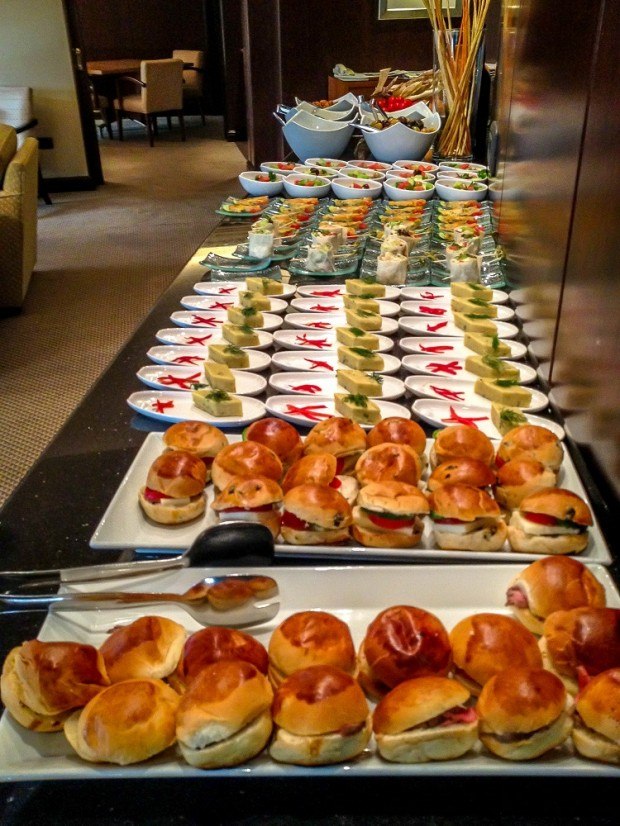
Do your homework. Once you accumulate points in different programs and begin spending them on free travel, some points may prove to be more valuable. Also, if you accumulate large balances in one program or need points in another program, it is possible to exchange your reward points and flight miles between your existing programs. For Hilton, allows you convert points between airline, rail and other programs into Hilton Honors points.
Even with points/miles, it can take cash
Points and miles are considered currency. And they have a tangible value. In the event of a divorce, they are considered an asset that is divided. And some airlines will allow you leave your miles to someone in your will when you die.
But even if they have a value on their own, many programs, particularly the airline programs, won’t let you actually use your miles without a cash fee on top of it. Those fees vary, but you need to factor them into your calculations.
However, one of the biggest changes to the hotel programs in the last few years is the addition of Cash and Points rewards. You put up some points and some cash. This can be either a fantastic value or a terrific waste of points – depending on the property and the room rate for the exact dates you want to visit. Do your homework before using a Point-and-Cash scheme.
Earn points for shopping
All the major frequent traveler programs have mileage malls or online shopping malls. Essentially, you earn miles or points per dollar spent in the online malls. If you do any amount of online shopping, you should always go through a mileage mall to earn points for something you are doing anyway. This is a great way to earn large bonuses!
To get big rewards, you need to go for credit cards
To receive the really big mileage/points benefits, you need to sign up for credit cards with their lucrative perks. This is a massive topic and we write about frequently, however, here is a short version to travel hacking with credit cards.
Yes, you can travel hack without a credit card, however, to really scale your activities, you need a travel credit card. The best travel credit card is the one that works for you and your goals. You need to know what you want to accomplish (free flights, free hotels, a mix of both, etc.) and then register for the card that meets your goals.
If you live in a major airline hub, you might register for a specific airline card. For example, if you live in Atlanta, you might get the Delta credit card, or a United card in Denver or an American card in Dallas. If your goals are hotels, you might register for a hotel-specific card.
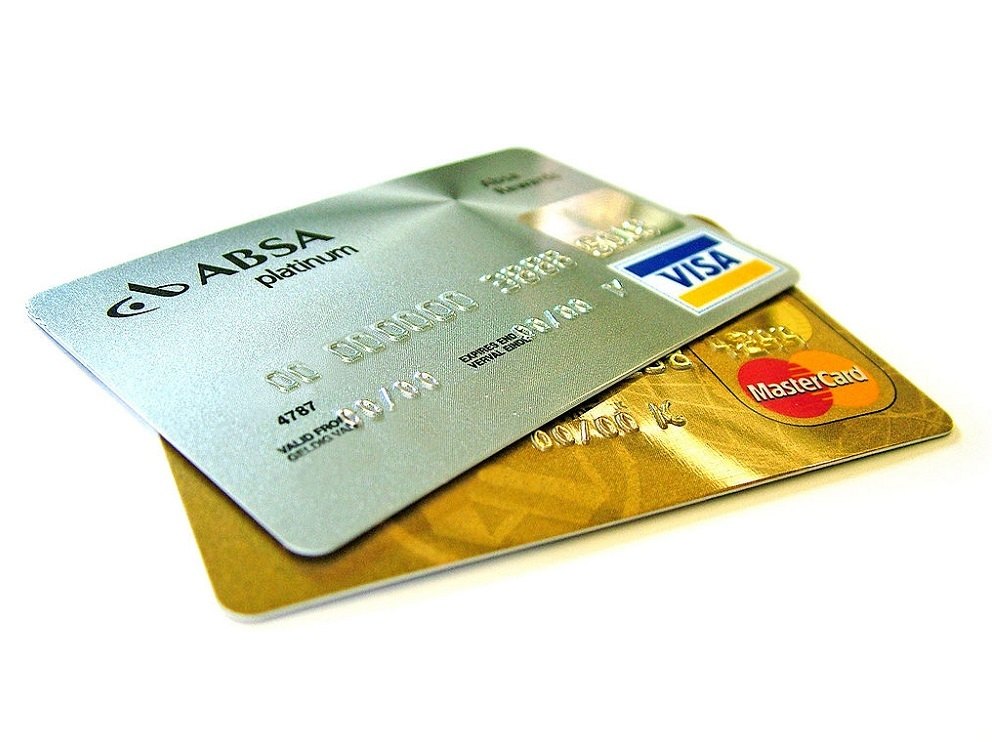
But, if your goals are more general and you don’t have a specific travel provider, consider getting a general travel card that will allow you use your points with any airline or hotel. The much advertised Capital One Venture card and Chase Sapphire are two of the more popular general cards.
To make hacking with credit card work, look for a card with a nice welcome bonus (for example, many airline cards offer 25,000, 40,000 and even up to 100,000 bonus miles). At the same time, make sure that the required spending level is achievable for you. If you can’t spend the $5,000 in 3 months to get the 40,000 miles, that is of no benefit to you. Pick the largest welcome gift for the least amount of spend. Then check and try to find a card with the lowest annual fee. Most cards will waive the annual fee for the first year. This is ONLY a good idea if you have decent credit and you pay off your bills in full and don’t carry a balance.
That welcome gift and the spending will get you a long way to your goals. But most travel hackers also “churn” their credit cards. Signing up for a card, keeping it through the welcome period and for a while beyond, and then cancelling. And then coming back and signing up for the same card again after a period of time. Each credit card has rules for “churning” and they may have a waiting period of 12 to 48 months before applying again. But in the meantime, there are other programs or credit cards. This is really pro-level travel hacking.
Manufacture spending to realize big rewards
Once you have your travel rewards credit card, you can earn massive amounts of miles/points through a process of “manufactured spending.” You can manufacture spending on your credit card and then get reimbursement for it. If you work for a company, see if they will let you use your personal card for business expenses and then you get reimbursed for it.
If you go out to dinner with a group, be the person who pays and then get cash from your friends. There are almost an unlimited number of options if you think creatively. The key is: manufacture spending on your credit card and while obtaining cash to pay it off.
This site uses Akismet to reduce spam. Learn how your comment data is processed .

- Travel Hacking
A Beginner’s Guide To Travel Hacking : Earning a Free Flight In Under 15 Minutes
by Jason Moore
How To Earn a Free Flight In Under 15 Minutes
* This article will help you avoid wasting time visiting a million different websites and provide all of the nuts and bolts of travel hacking so you can get started today.
Disclosure: Zero To Travel has partnered with Daily Drop for our coverage of credit card products. Zero To Travel and Daily Drop may receive a commission from card issuers. We appreciate your support.
A free flight in 15 minutes? You probably think I’m full of horse doo doo.
Just another idiot dude on the internet with some outrageous claim that can’t possibly apply to my life.
Not so fast!
Well ok, I do act like an idiot sometimes. But nobody is perfect, right?
But here’s the deal – it’s entirely possible to earn enough points for a free flight in under 15 minutes.
Before we dive in, a little education on travel hacking is necessary to provide a game plan that fits your lifestyle and current financial state.
There will be plenty of juicy nuggets along the way including a resource below that can take your game to the next level, so stay with me.
What is Travel Hacking?
Travel hacking involves working within the existing rules set up by airlines, credit cards, and hotels, and using them to your advantage to earn free travel including flights, lodging, and other upgrades.
Travel hacking is not a new thing. According to Wikipedia, the first frequent flyer program was created in 1972 for United Airlines. Loyalty programs have existed for decades.
Heck, I earned my first free flight about 14 years ago.
Travel hacking certainly is a hot buzz word of the moment. It seems like there are more people attempting to hack travel than there are people traveling.
The term ‘hacking’ in general, is overused…sort of like the plot-line to those Rocky films (blasphemy coming from a Philly guy, I know). Hacking implies some kind of matrix unauthorized access.
The truth is that travel hacking is completely legal and much less complex than an NSA spy algorithm.
Although travel hacking sounds sexy and dangerous, in actuality it’s pretty simple to earn free flights on a most basic level.
Is it hard to become a travel hacker?
Getting into travel hacking doesn’t require skeleton keys, retina scans or super-secret knowledge possessed by those lucky few with enough money and time to play the game.
It’s relatively simple to earn free flights and hotel rooms without much disruption or increased difficulty added to already complex lives.
For people who want to jump right into the game without having to weigh the countless options available or do hours of research, the following offers a basic plan to get started immediately.
If travel hacking becomes a hobby, it’s good to follow a few select resources dedicated to the subject. Since credit cards, airline rules and promotional offers are constantly changing, it makes sense to pay attention to maximize mileage and rewards points earning potential. These resources are provided at the end of this article.
For now, let’s keep it simple.
The Beginner’s Guide To Earning Free Flights
Do you know that story about the tortoise and the hare? In Aesop’s legendary tale the tortoise wins due to persistence. The hare could easily win due to his speed, but he becomes overconfident and takes too many risks.
Sometimes speed doesn’t matter as much as consistency over time.
Just like this classic fable, the race to earn free travel can take two approaches.
The difference is, implementing both strategies is key to racking up free travel. Becoming both the tortoise and the hare allows for optimal rewards points hoarding.
The Tortoise Travel Hacker: Earning Rewards Points Over Time The Old Fashioned Way
“The best time to plant a tree was 20 years ago, the second-best time is now.” -Chinese Proverb
This is true for most things in life if not all. Whether it’s starting a business, getting in shape, or earning free travel, if you haven’t gotten started yet then now is the time.
Here is an easy two-step process for Tortoise Travel Hacking
Step 1 – Sign up to join all rewards and frequent flyer programs
All of these programs are free. Don’t waste time signing up for every airline and hotel right this second. When you stay at a new hotel chain or fly a new airline, make sure to sign up for their program at that time to earn credit. Never take a flight or stay in a hotel without earning some type of points or miles.
To go a step further, you can always check the hotel or airline’s website before you book and see if they are running any promotions that can earn you bonus miles/points.
A List Of All Airline Websites
Over time you’ll end up with many frequent flyer and hotel rewards accounts. To track them all join Award Wallet , which is a service that helps to manage personal loyalty program accounts.
Here is a partial screenshot of my account.
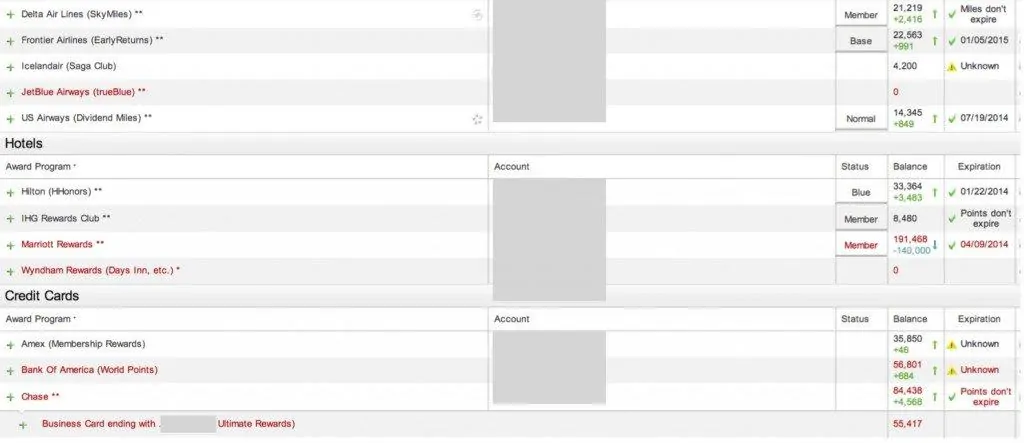
The reason why I suggest joining Award Wallet is that it will help you track everything in one place. Plus, they will alert you when points or miles are about to expire.
I have foolishly lost miles in the past (pre Award Wallet) because I simply couldn’t keep track of my accounts. With Award Wallet’s help, I’ve been notified and was able to purchase small amounts of miles and points in order to avoid losing them all.
Step 2 – Be a repeat customer
Fly the same airline and stay in the same hotel chain as much as possible.
Loyalty programs were created for this specific reason, and it works. Find the companies you like and stick with them. It’s not always possible due to cost or availability but try your best to be a repeat customer. Over time these points add up to earn you free travel and hotels.
Again, this is the slow boat to earning free travel. To kick things up a notch you’re going to have to get into the travel rewards credit card game.
Now, let’s put you on the fast track to earning a free flight anywhere in the world.
The Hare Travel Hacker: Credit Card Travel Rewards
I’ll admit, it’s sort of boring to read about credit cards (yuck!). Why is it important? This is, by far, the fastest way to earn free flights, hotel rooms, and other travel-related goodies.
If you want to get off to the races fast, the only way to earn tens of thousands of miles for free flights without having to sit on hundreds of hours of flights is to sign up for credit cards that offer bonus miles or points.
Here is a regularly updated list of the Best Travel Rewards Credit Cards .
Credit card companies get a new customer, and you get free flights or rewards.
In my opinion, earning free travel via credit card rewards is not a game you should be playing if you cannot figure out a way to do these 2 things:
1. Pay your credit card bill in full every month and carry absolutely no credit card debt.
Are you fiscally responsible?
If you carry credit card debt does it make any sense to get another credit card and go into more debt? I would say no. I’m not a professional financial advisor and don’t pretend to be, but part of active travel is not running yourself into a financial hole!
If I were dishing advice, and I guess I am, then I would only take on new credit cards if I had the ability to pay my bill in full monthly, and no existing credit card debt.
When it comes to credit card spending, start conservatively. Earn a free flight or two and make sure the extra responsibility of added credit cards isn’t a burden.
After that, you can step up your game. After all, what’s the point of earning all of this free travel if you can’t afford to take the trips!
2. Ability to meet the minimum spend requirements to earn the points.
When you sign up for a travel rewards credit card you must meet their minimum spend requirements in order to earn the points bonus. For example, my favorite travel rewards card is the Chase Sapphire Preferred . This card requires you to charge $4000 in the first 3 months but you will receive 60k points. You can learn more about this card here!
That’s a lot of freakin’ money!
I know..but don’t worry.
Notice it’s charge $4000, not necessarily spend. Charging on your card is not the same.
More on that shortly, first…
What Are You Waiting For?
The bottom line is this; if you are currently carrying a credit card and it doesn’t earn you any rewards points you are wasting a huge opportunity.
Living in the United States, options are nearly unlimited when it comes to rewards credit cards.
If there is a card in your wallet that gets used and does not benefit you in some way, it’s time to pay it off, cut that sucker up and sign up for a card that actually benefits you.
Travel hacking with rewards credit cards can get complicated due to the sheer volume of choices in rewards credit cards. Not to mention keeping track of all the rules, minimum spend requirements, balance due dates and more.
However, by signing up for multiple credit cards, spending and transferring points you can rack up hundreds of thousands of miles and save big time money on flights, consumer goods, hotels, sports tickets, and pretty much anything you can think of.
You could google search travel hacking right now read every blog post, review and website on the net to find out which credit cards are the best but I’ll save you the time. They all reach this conclusion:
Credit Card Travel Hacking Simplified: The Best Travel Rewards Card To Get
Option #1 the consensus choice for travel rewards credit cards – chase sapphire preferred (annual fee: $95/year).
I’ve had the Chase Sapphire Preferred card for as long as I can remember having travel rewards cards. This card offers the best overall deal for personal cards.
Current Offer: Earn 60,000 Ultimate Rewards points after spending $4,000 within the first 3 months of account opening. Learn more
- 10X miles on hotels and cars booked through Capital One Travel
- 5X miles on flights booked through Capital One Travel
- Unlimited 2X miles on all other purchases
- No foreign transaction fee
The Chase Ink Business Preferred is the best overall deal for business cards. Learn more!
Current Offer: Earn 100,000 bonus points after spending $8,000 in the first 3 months from account opening.
- 3X per $1 on the first $150,000 spent on total purchases for these categories each year (then 1X per $1 after): shipping purchases, advertising purchases, internet, cable, and phone services, and travel
- 1X per $1 on all other purchases
Both cards allow you to easily redeem points via Chase Ultimate Rewards for flights and hotels, among many other things
If you are going to roll with one or two cards, check these out and see if they will work for you & your needs. Avoid the annual fee by canceling before the end of the first year, if you wish.
Note: The Chase Ink Preferred is a business card . If you don’t have a formal business you can apply as a sole proprietor which is essentially just claiming that you are a business. It may require calling the credit card company and explaining to them what you do. Having a small side hustle could qualify you for a small business card like owning a blog or selling on Etsy for example. Learn more!
Check out How to Start a Sole Proprietorship (note you don’t need to fill out any legal papers) Consult with a tax professional for more details. If you apply as a sole proprietor your Tax ID number is your social security number.
Option #2: The Hotel Rewards Card with Miles Transfer Opportunities – Marriott Bonvoy Boundless® Credit Card (Annual Fee: $95/year)
Runner up according to popular opinion, blogs and the like is the Marriott Bonvoy Boundless® Credit Card f or the opportunity to book some higher-level lodging and the ability to easily convert and transfer points to a designated frequent flier account and earn even more miles in the process. Learn more!
Additional Benefits
- Enjoy a Free Night Award every year after your account anniversary (valued up to 35,000 points)
- Earn 1 Elite Night Credit towards Elite status for every $5,000 you spend
- Receive 15 Elite Night Credits each calendar year
- Progress to Gold Status when you spend $35,000 each calendar year
Option #3: Choose a Card Based On Your Local Airport
If you live near Philadelphia, that airport it is the hub for US Airways then it may make sense to keep your eye on US Airways cards deals if you love flying that airline.
List of Hub Airports
The reason why I prefer Option #1 and #2 is because it’s easy to transfer points to many different airlines so why limit to one card that is dedicated to only one airline?
Keep It Simple
But we are keeping it simple. Want to test the waters with credit card travel hacking? Move forward and:
Learn more about the Chase Sapphire Preferred Card
Able to handle another minimum payment and want double points? Jump in and:
Learn more about the Chase Ink Business Preferred Card
When applying, I spread out my applications to avoid the burden of spending massive amounts in a short time.
If you like Option #2 or want to add more cards into your rewards portfolio go ahead and:
Learn more about the Marriott Bonvoy Boundless® Credit Card.
After Signing Up
Track all cards and rewards programs.
Sign up for Award Wallet
Meeting the Minimum Spend
This can be tricky, but as I mentioned earlier think of this as a charge. There are ways to charge this money without actually spending your own.
How is that possible?
Check out this article on meeting the minimum spend for your travel rewards credit card and it will make sense.
10 Creative Ways To Meet the Minimum Spend Requirements
Another very basic way to avoid stress with minimum spends is to just time your rewards card applications with a big purchase you need to make.
For example, planning on buying a new computer? Snag a rewards card before that purchase so it goes towards the minimum spend.
There are plenty of other creative ways to meet the minimum spend so don’t let this seemingly large obstacle intimidate you.
Earning a Flight In Under 15 Minutes
Circling back to my promise at the beginning, here is how I earned a flight in under 15 minutes.
First I applied for a Chase Ink Business Preferred Card , which took about 10 minutes.
Secondly, did you know that you could pay your taxes with a credit card?
Since I paid virtually no taxes during the year I owed a lot of cash money to the feds.
Thankfully, the money was set aside. Once the Chase Ink Business Preferred card arrived, my federal taxes were charged on it and the balance was paid off immediately.
Even without owing taxes the same principle can apply by again, timing rewards card applications with a big purchase.
Where To Pay Taxes With a Credit Card
Travel hacking with credit cards isn’t complicated, and certainly nothing to be intimidated by. Start with one card, and get going. For more advanced strategies:
The Final Word
It’s worth noting that when rewards points are used for miles for ‘free’ flights you may still be responsible for paying taxes and fees. However, this cost is minimal.
Sure, all of the tracking, spending and applying for cards or mileage points can be a bit tedious when the time comes to book a flight and rewards points
But when the time comes to book a flight and rewards points land you halfway across the world for virtually nothing, the minor effort is more than worth it.
Sit back, smile and enjoy your free flight. Safe travels my friend.
What do you think about travel hacking? Do you have any tips or strategies? Leave comments below.
Want to save thousands of dollars on travel? Tune into the Zero To Travel Podcast, with over 12+ million downloads worldwide you’ll discover plenty of new and affordable ways to explore the world.
Subscribe to the Zero To Travel Podcast Now
*Opinions expressed here are the author’s alone, not those of any bank, credit card issuer, hotel, airline, or other entity. This content has not been reviewed, approved or otherwise endorsed by any of the entities included within the post. Zero To Travel has partnered with Dialy Drop for our coverage of credit card products. Zero To Travel and Daily Drop may receive a commission from card issuers.
You're almost there!

Drop your email below so we can send your FREE course!
Success! Now check your email to confirm your subscription.
There was an error submitting your subscription. Please try again.
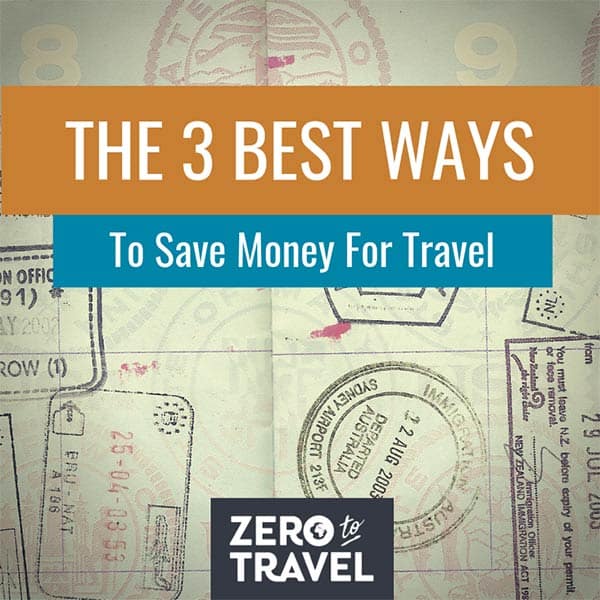
Want to Travel More?
You need a plan. Sign up to access this mini-course, get exclusive content and join our amazing community of travelers. It’s all FREE!
You're in! Check your email for your free guide!
Recent posts.
- Why Being a “Misfit” Is Your Superpower With Wanda Duncan
- Top 5 Eco Dive Spots Around the World, How To Plan an Expedition, and Advice for Carving Your Own Path With Andi Cross
- From Wall Street to Nepal, Life-Changing Moments, and What It Means To Have Enough With James C. Hopkins
- Overland Travel 101, the Pros and Cons of Full-Time Travel, and Favorite Hidden Gem Destinations (After 10 Years as a Nomad) With Eric Highland
- What To Expect This Month on Zero To Travel (August 2024)
Recent Comments
- nck crack without box on Road Tripping Europe To India : Daily Life On A Land Rover Overland Adventure
- Nora on Turn Travel Into A Lifestyle With Goats On The Road
- Jason Law on Top 10 Road Trip Albums With Jason Law from Festy GoNuts
- Svanna Clariot on Atlas Obscura: Curious World Wonders
- Kylie on Hitchhiking: Myths, Facts and Beyond
- August 2024
- February 2024
- January 2024
- December 2023
- November 2023
- October 2023
- September 2023
- August 2023
- February 2023
- January 2023
- December 2022
- November 2022
- October 2022
- September 2022
- August 2022
- February 2022
- January 2022
- December 2021
- November 2021
- October 2021
- September 2021
- August 2021
- February 2021
- January 2021
- December 2020
- November 2020
- October 2020
- September 2020
- August 2020
- February 2020
- January 2020
- December 2019
- November 2019
- October 2019
- September 2019
- August 2019
- February 2019
- January 2019
- December 2018
- November 2018
- October 2018
- September 2018
- August 2018
- February 2018
- January 2018
- December 2017
- November 2017
- October 2017
- September 2017
- August 2017
- February 2017
- January 2017
- December 2016
- November 2016
- October 2016
- September 2016
- August 2016
- February 2016
- January 2016
- December 2015
- November 2015
- October 2015
- September 2015
- August 2015
- February 2015
- January 2015
- December 2014
- November 2014
- October 2014
- September 2014
- August 2014
- February 2014
- January 2014
- December 2013
- November 2013
- October 2013
- September 2013
- Destinations & Culture
- Digital Nomad
- Inspiration
- Is It Worth It?
- Travel Jobs
- Travelosophy
- Uncategorized
- Entries feed
- Comments feed
- WordPress.org

You need a plan. Sign up to access this mini-course The 3 Best Ways To Save Money For Travel , get exclusive content and join our amazing community of travelers. It’s all FREE!
You're signed up! Check your email to access the mini-course!

Points & Miles 101: A Beginner’s Guide to the Process
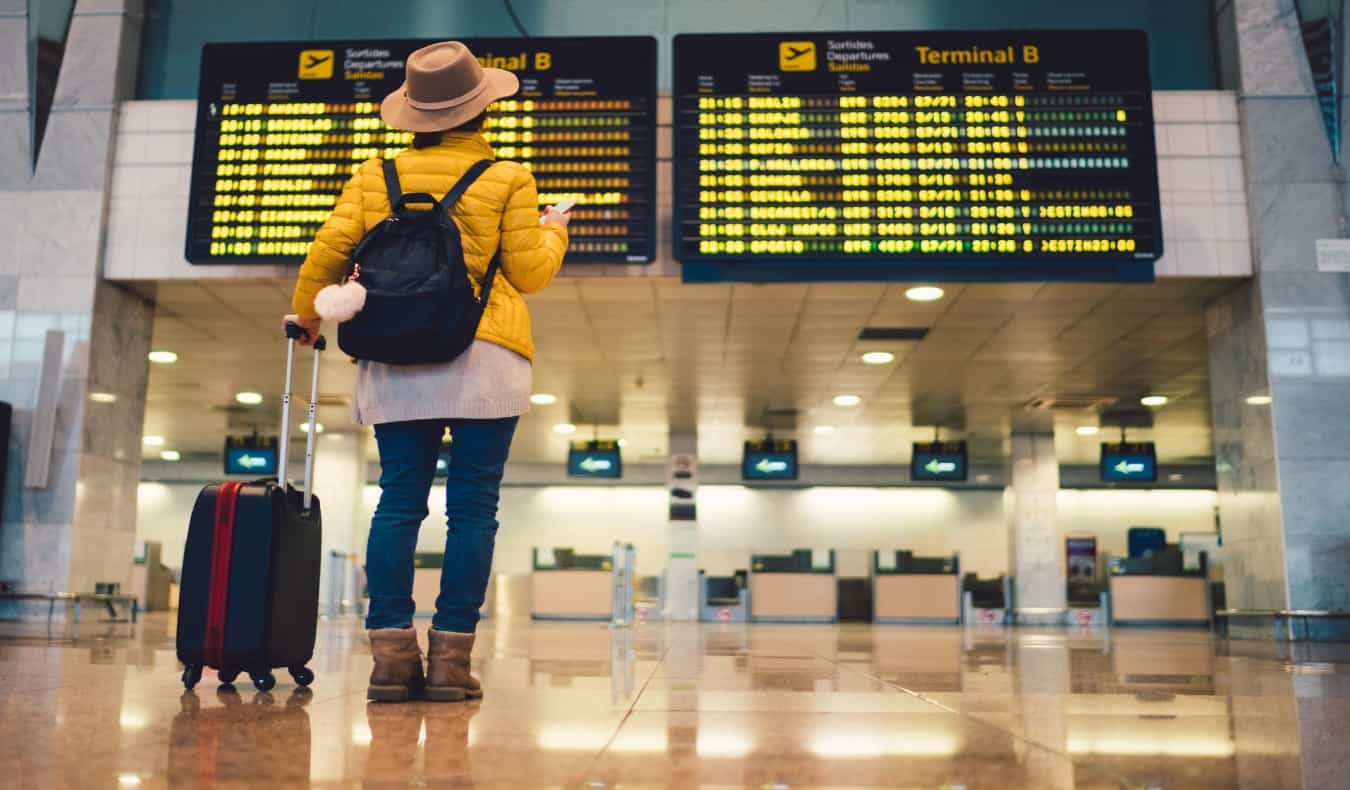
These days, there are a million and one ways to make budget travel a reality. From embracing the sharing economy to working overseas or volunteering abroad to hunting down cheap flights , traveling has never been easier or more affordable. Even with the pandemic-related price increases, travel is still relatively cheap and there are lots of deals out there to be found.
But the most incredible way to lower your costs even further? Points and miles .
It’s something I’ve been doing for years, which has enabled me to earn more free flights and free hotel stays than I can count. And if you’re not doing it, you’re leaving a lot of money on the table and paying way more for travel than you should be!
What are points and miles?
Collecting points and miles involves signing up for travel credit cards and collecting credit card points, hotel points, and/or airline miles you can cash in for free flights, flight upgrades, hotel stays, transportation, and much, much more.
While there are a ton of advanced tips and tricks to out there (and we go over a lot of them in my guide on the subject), many people don’t even know where to start. The process seems daunting because of all the programs and credit cards out there. Which card do you get? How do you know you’re maximizing your points? And just how do you redeem them for rewards?
It’s a lot to wrap your head around.
But it’s a lot easier than it seems. By just tweaking how you pay for groceries, gas, and dining out, you’ll be able to start earning points and miles toward free travel today .
In this points and miles 101 guide, I’ll explain the basics, so you can stop leaving money on the table and start making your travel dreams a reality.
Here is how you get started:
Step 1: Figure out your goal(s)
The first thing you want to do when it comes to points and miles is to figure out your goal(s). What are you looking to achieve?
Are you saving for a big family trip? Do you just want the odd free economy flight or hotel here and there? Or are you more interested in a huge first-class upgrade? Or are you an avid flyer who wants perks, like lounge access and free upgrades?
There’s no wrong answer, so spend some time pondering this. If you just go into points and miles without direction, you’re going to get lost.
You’ll need to do this because it will help you pick the cards and spending strategies that will get you closer to your goal(s). There are hundreds of travel credit cards to choose from, and they all have their own pros and cons.
For example, if you’re a loyal flier with American Airlines, the best cards to start off with would be those that are AA branded. That way, you can jump-start your point balance as well as get the perks that those cards come with (free checked bags, priority boarding, etc.).
If you’re looking to go to Europe on a United partner, you’ll want to apply for the cards that get you United or Star Alliance points.
Always like staying at a specific hotel chain? Get that particular brand’s card.
If you just want points to spend wherever you choose, get a Chase, Citi, Capital One, or American Express® Card, because you can use their points with a variety of travel companies.
Once you decide your goal(s), you can figure out the cards and programs that will get you there.
Step 2: Get a travel credit card
Once you know your goals to and what perks are important to you, you can start to browse for a credit card.
Note: Collecting points and miles is impossible without a credit card. You just cannot get enough points otherwise. Here’s everything you need to know about credit cards and why they aren’t as evil as society makes them out to be.
While many introductory cards are free, the best travel credit cards usually have an annual fee. You want to make sure you’re always getting more value out of the card than the annual fee. This isn’t hard to do if you’re a traveler, especially if you start with a low fee card. You can also often get the fee waived in subsequent years if you call and threaten to cancel the card. I do that often to avoid the fee.
Some things to remember before you apply for a card:
- There is no perfect card — each has its pros and cons based on your goals. Don’t listen to blogs touting some card as “the best.”
- Aim to get a card with a low annual fee and no foreign transaction fees (so you can use it abroad without paying extra).
- Make sure the welcome bonus is attainable (more on that below).
Remember that you need to pay off your monthly balances to make it worthwhile, so only apply for a card if you’re able to pay off your expenses each month.
Here’s what the ideal card should have:
- A huge welcome bonus – The best travel cards all offer a sizable introductory bonus. It will be these welcome points that jump-start your account and get you closer to a free flight or hotel stay. Typical travel credit card welcome bonuses range between 40,000 to 60,000 points, though sometimes they can be as high as 100,000. That’s why cards are so great: you get an instant balance of tens of thousands of points for very little work.
- A low spending minimum – Unfortunately, in order to get the great welcome bonuses these cards offer, there is usually a required spending minimum in the first few months. I typically sign up for cards with a minimum spending requirement of $3,000 USD in a three- to six-month period. While there are ways to temporarily boost your spending, it’s best to get the bonus using normal day-to-day spending. Only apply for a card or cards that you can meet the minimum spend(s) on to qualify for the welcome bonus(es). (More on minimum spending requirements in the next step.)
- An added category spending bonus – Most credit cards offer one point for every dollar spent. However, good credit cards will give you extra points when you shop at specific retailers, use their online portals, or, if it is a branded credit card, shop with a particular brand. This will help you earn points much more quickly.
- Special travel perks – All of these travel credit cards offer great perks. Many will give you a special elite loyalty status or other perks. Collecting points and miles is not just about just getting points and miles, it’s about what else comes with the card that makes your life easier!
- No foreign transaction fees – Credit cards are great to use overseas because you get the best possible exchange rate from them. But if you are paying a fee every time you use the card, then it’s less good. Nowadays there are so many cards offering no foreign transaction fees that you should never, ever, ever have to get one with a foreign transaction fee.
Step 3: Earn the welcome bonus
As mentioned, the most important part about signing up for a new credit card is to make sure you earn the welcome bonus. Most cards offer this bonus if you spend a set amount within the first few months of receiving a card (usually the first three months). These offers can be huge, often equal to the cost of a round-trip flight.
Obviously, it would be silly to pass up the chance at a free flight, so make sure you can meet the minimum spending requirement for the welcome bonus before you pick a card. If you can’t meet the spending requirement, there’s no point in signing up just yet.
That might mean waiting until your next big purchase (e.g., waiting until you need a new computer, a new couch, etc.) or waiting until a big holiday like Christmas or a loved one’s birthday, so you can earn more points than your normal spending.
If even that isn’t going to do the trick, you’ll need to get creative.
For example, when you go out for dinner, pay for the bill on your credit card and have everyone pay you back. That way, the cost will go toward your minimum spending requirement. Additionally, if any friends or family are planning big purchases, ask them if you can put them on your card so you can get the points. That’s another easy way to meet the minimum spend without having to shop til you drop.
Step 4: Maximize your category spending
Most travel credit cards offer category bonuses. That means that instead of getting just 1 point per every dollar spent, you might get 2 or 3 or even 10 when you shop in particular categories. Restaurants, supermarkets, and gas are three of the most common ones, but there are lots more too.
To maximize your points, always use the right card for each purchase.
If you just have one card to start, just put everything on that card to maximize your points. Once you start branching out and have a few cards, just keep track of the main category bonuses so you don’t miss out by using the wrong card. Earning double, triple, or even 10x the points can drastically speed up your earnings, so don’t skip out on the category bonuses!
Step 5: Redeem your points and miles
It’s time to cash those points in and make your travel dreams a reality! Depending on your spending and financial situation, maybe you’ve been able to save up enough in just a few months. Maybe it’s taken you a couple years. Either way, it’s time to reap the rewards! (If you want to learn more on how to do that, get this guide I wrote .)
FREQUENTLY ASKED QUESTIONS
Now that we’ve laid out the steps, I wanted to answer some common questions I get about collecting points and miles.
Can non-Americans collect points and miles? Yep! While the US definitely has the best travel cards, many other countries have similar cards too, including Canada, the UK, Australia, and most of Europe.
Start by checking with your local airline to see if it has a branded credit card. You can also check in with your bank and ask what cards are available. Every country is different, so you’ll need to ask around to get the ball rolling.
Here are some posts to help you get started:
- How to Collect Points & Miles in Canada
- How to Collect Points & Miles in Australia & New Zealand
- How to Collect Points & Miles in the UK
Do I need to pay off my bill every month if I want to do this? Yes. Credit cards charge huge interest fees, which will eat up whatever small benefit you get from the points.
Can you collect miles even if you have bad credit? Yep! You’ll likely need to start slow, with a card that doesn’t have amazing perks. However, over time, you can build your credit up as long as you’re paying off your bill every month. If you have bad credit, start with a prepaid or secured credit card to build back your credit.
Does opening a new card hurt my credit rating? Opening or closing a lot of credit cards at once can hurt your credit. However, applying for a few credit cards over a period of time won’t ruin your score. Sure, it will slightly dip every time there is an inquiry, whether for a credit card or home loan or car loan — that’s how the system is set up. But so long as you space out your applications and pay off your bills each month, you won’t find any long-term damage to your credit. I have dozens of cards and apply for and cancel them regularly, and my credit score is excellent.
Collecting points and miles can be intimidating, but it’s really just the art of being smart with your spending on the right one or two credit cards. You don’t really need to do more than that. While you can also dive much deeper in the game (some people really go down the rabbit hole on this!), it’s not all that necessary.
Don’t leave money on the table. Get a card, earn the welcome offer, maximize your points — and then do it all over again! Eventually — with no unnecessary spending — you’ll reach your goal and get to enjoy some awesome travel perks!
Book Your Trip: Logistical Tips and Tricks
Book Your Flight Find a cheap flight by using Skyscanner . It’s my favorite search engine because it searches websites and airlines around the globe so you always know no stone is being left unturned.
Book Your Accommodation You can book your hostel with Hostelworld . If you want to stay somewhere other than a hostel, use Booking.com as it consistently returns the cheapest rates for guesthouses and hotels.
Don’t Forget Travel Insurance Travel insurance will protect you against illness, injury, theft, and cancellations. It’s comprehensive protection in case anything goes wrong. I never go on a trip without it as I’ve had to use it many times in the past. My favorite companies that offer the best service and value are:
- SafetyWing (best for everyone)
- InsureMyTrip (for those 70 and over)
- Medjet (for additional evacuation coverage)
Want to Travel for Free? Travel credit cards allow you to earn points that can be redeemed for free flights and accommodation — all without any extra spending. Check out my guide to picking the right card and my current favorites to get started and see the latest best deals.
Need Help Finding Activities for Your Trip? Get Your Guide is a huge online marketplace where you can find cool walking tours, fun excursions, skip-the-line tickets, private guides, and more.
Got a comment on this article? Join the conversation on Facebook , Instagram , or Twitter and share your thoughts!
Disclosure: Please note that some of the links above may be affiliate links, and at no additional cost to you, I earn a commission if you make a purchase. I recommend only products and companies I use and the income goes to keeping the site community supported and ad free.
Related Posts

GET YOUR FREE TRAVEL STARTER KIT
Enter your email and get planning cheatsheets including a step by step checklist, packing list, tips cheat sheet, and more so you can plan like a pro!

- Work With Us
How to Use Travel Hacking to Get Free Flights
Written by Dan
Updated on May 10th, 2024

Is travel hacking worth it? Let’s see the best ways to get free flights and the websites that will let you travel hack your next trip. Here’s our guide to hacking our travel.
This article may contain affiliate links. We earn a small commissions when you purchase via those links — and it's free for you. It's only us (Becca & Dan) working on this website, so we value your support! Read our privacy policy and learn more about us .
Table of contents
- What is travel hacking?
- How does travel hacking work?
- How to get started with travel hacking?
- What are some ideas to hit the minimum spend for the credit card bonuses?
- What is credit card churning?
- Does opening too many credit cards hurt my credit score?
- Understand the features of a credit card
- Can you do travel hacking without a credit card?
- How can I learn more about travel hacking?
Since 2016, we’ve taken countless (okay, if we had to count, probably more than 50) flights. Some of these flights were quick legs from Prague to Lisbon. Other legs were a bit more extreme, like flying from Hanoi, Vietnam, to New York City. Some were flights with long layovers.
Whenever Becca and I travel, we maximize our value and optimize our cost per day as much as we can, within our control. Flights can sometimes be the biggest line item on the trip, and the cost of a flight can push the total trip cost to a figure that is more than our budget.
What if I told you that there was a way to get your flights for free?
This is travel hacking. In this article, I’ll explain what to know about travel hacking, and how you can realistically apply it to your regular set of habits and tricks when you book trips.
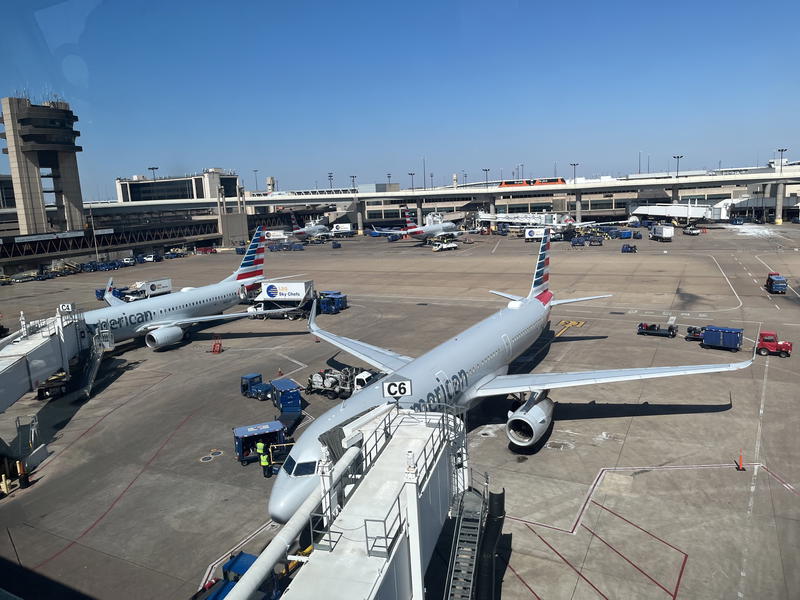
What is travel hacking?
Travel hacking is a way to exchange credit card sign-up bonuses and incentives for airline miles. You can use those airline miles (or frequent flyer miles ) to buy discounted (and often free) flights to destinations of your choice.
Depending on the credit card you choose to go with, you can also exchange a miles or points bonus for hotel stays and rental car deals.

How does travel hacking work?
As much as possible, we take advantage of credit card sign-up bonuses and build out our frequent flyer mile programs on a few select airlines (more on this below).
When we’re ready to book a flight, we will first evaluate the cost. If the flight is $200-$300, it’s usually better to pay in cash and accrue more miles for the flight that we take.
When the flights start getting above $500, we look to our airline frequent flyer accounts and evaluate which airline can give us the best deal. We base this on the amount of miles or points in our travel bank for each airline with which we have an account.
This thought process and system above is the essence of how travel hacking works.
Some airlines will exchange 1 mile for 1 penny. So for $1000, you’ll need 100,000 miles.
Other airline programs have more of a value system. With United, for example, 35,000 miles doesn’t necessarily mean you need to spend $350 to get to that amount.
The points and value exchange can get a little complicated, and I’ll cover more details about that below!
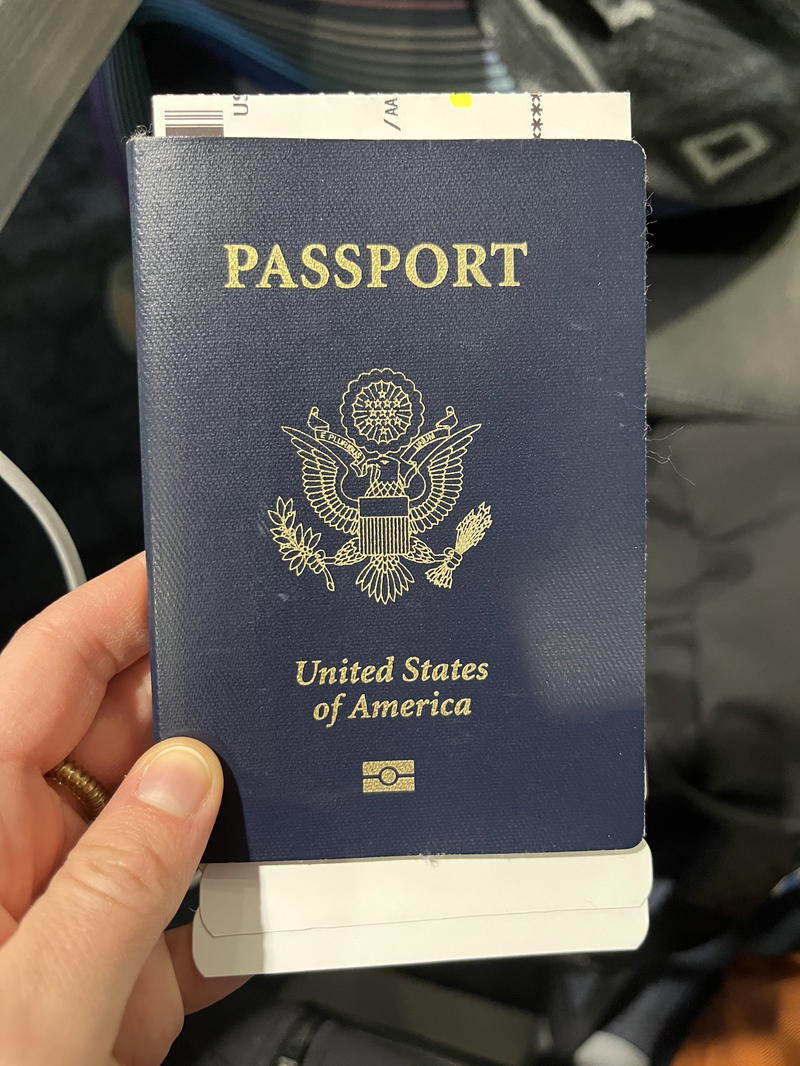
How to get started with travel hacking?
I want you to leave this article with a solid base on how to get started with travel hacking. I became fascinated with the topic back in 2016 when I got my first real travel credit card.
I got the Chase Sapphire Reserve, with the 100,000-mile bonus, back when the annual fee was $450 with a $300 travel credit. Those were the days. I talk more about this card in our money guide to international travel .
I was able to take advantage of the $100 Global Entry credit as well. This was an incredible benefit.
I continued to book my travel with this credit card and got 3x points on travel purchases, as well as 1.5x redeemable points in the Chase Ultimate Rewards portal. The Chase Ultimate Rewards portal allows you to book travel like regular flight purchases, with your points, in a sort of online marketplace. It’s surely one of the best websites for travel .
This exact deal and situation is a little different now, but let’s go over the basics, first!

Open a credit card with a sign-up bonus
The very first step that you need to do is open a credit card that has some type of sign-up bonus attached to it. There are a lot of great credit cards to choose from that offer a variety of great features and benefits.
The actual credit card that you choose will depend on your preferred airline, spending habits and features that are important to you.
Here are my top credit card picks for travel hacking
These are the cards that I use and they’ve been beneficial in helping me fly free to a lot of different destinations.
- Chase Sapphire Reserve
- Chase United Explorer
- JetBlue Mastercard
- Capital One Venture X

Hit the minimum spend limit
After you are approved for a credit card, you’ll need to meet the minimum spend limit of the card, in order to get the bonus. Every card is different and the rules for this incentive are typically easy to find on your credit card terms page.
If you don’t meet the minimum spend, you won’t be able to get the bonus. And, you’ll need to cancel the card and wait up to two years before you can apply again and get the bonus.
Make sure that you’re in a position to hit the spend limit before choosing the card. For example, a spend limit could be $3000 in three months, or, it could be $10,000 in six months. After you hit the spend minimum, your bonus points will be awarded in your account.
Wait until your points are posted to your account
After you’ve hit the minimum spend limit, you’ll be eligible to receive your points bonus. The bonuses are usually distributed after your pay cycle. If you got the card and spent the minimum spend limit on the first day, you can expect your bonus in about 30 days.
Every credit card might be a little different. If you are trying to acquire your points for a specific occasion like booking a flight by a specific date, I recommend calling your credit card and asking them when the points will be available.
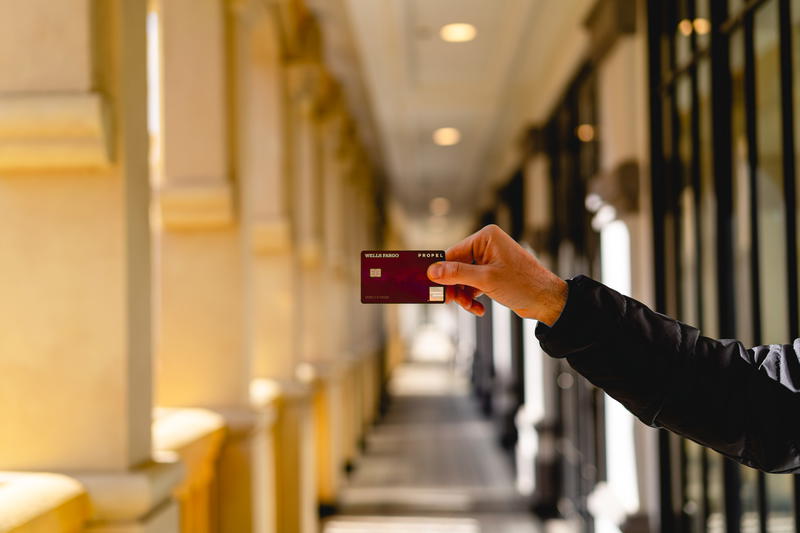
Redeem your points for a travel credit
Now that you have a points balance, you can redeem these credits for travel. Every credit card will have a different method for redemption. Here are a few examples from the providers that I have the most experience with.
Chase Ultimate Rewards
If you have a Chase card, you can redeem your points in the Ultimate Rewards portal. In the portal, you have access to almost every airline. You can use a combination of points and cash to redeem your travel.
You can book entirely on points if you have the balance for it! Sometimes, we’ll still buy flights on the Chase Ultimate Rewards portal even if we don’t have enough points to cover the whole quoted cost. We pay the balance in cash, and pay it with any credit card.
Keep in mind that Chase is booking your travel and partners with an airline to fulfill the order. In 2020, Becca and I had travel booked with Chase. The itinerary was canceled and we had a hard time going back and forth with the airline and Chase trying to figure out how to get a refund.
When booking directly through United, you can choose your flight to be booked with points or dollars. You can’t combine points and dollars on the same itinerary if you don’t have enough points.
You can buy additional miles if you are a little short and need a few extra points to bump up your balance. Historically, this is never a great deal, though.
For flying domestic, I really enjoy flying JetBlue. I’ve generally had good experiences with JetBlue and the extra legroom and free snacks make the flight more comfortable and enjoyable.
Booking on JetBlue is similar to United, whereby you can either book with JetBlue points or dollars, but not both.
What is unique about JetBlue is that you can pool your points together and have a shared balance. Becca and I share points and we are able to accrue points twice as fast, together. We use a family ‘pool’ of our points so that we can share them. We used this method for a trip to the Dominican Republic !
To use JetBlue’s family sharing system for miles, JetBlue will want to prove that you are really family members, not just friends who want to hack the system.
Enjoy your trip!
Have fun! Hopefully, you were successful in getting a free trip with your credit card bonus. You can check out how to upgrade your flight as well. Some people use the bonus opportunity to find first-class tickets as a highly-discounted (and mostly free) price!
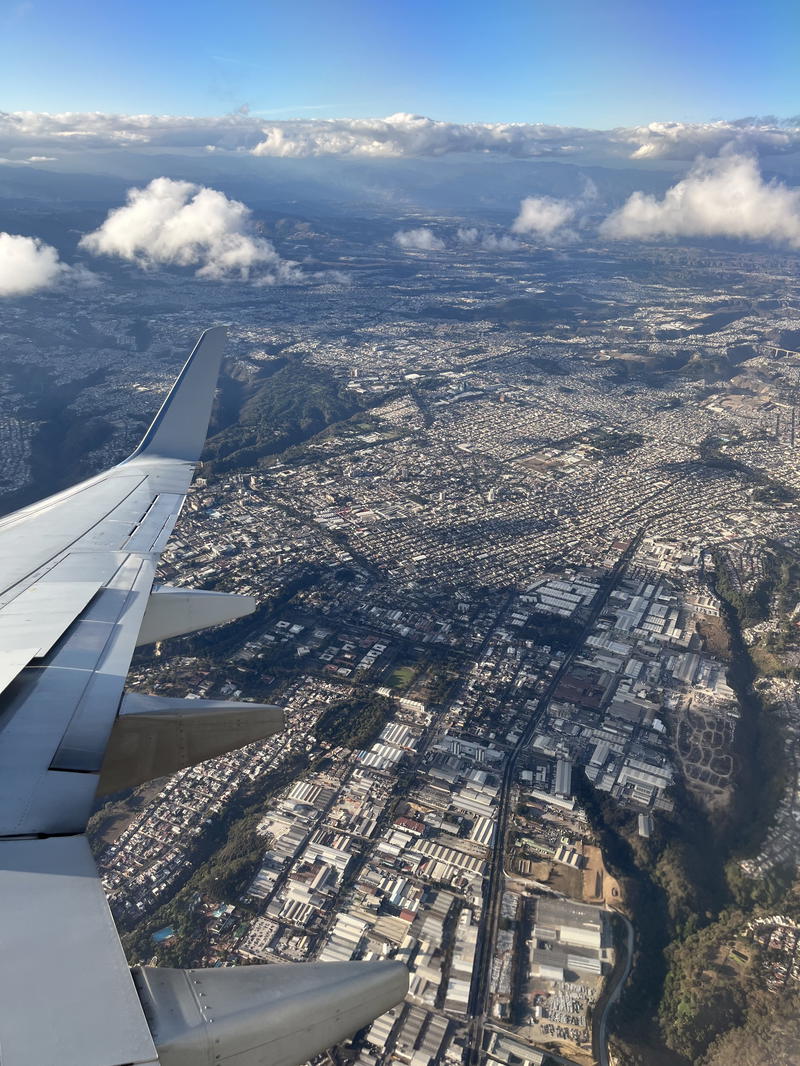
What are some ideas to hit the minimum spend for the credit card bonuses?
On a day-to-day basis, Becca and I are very frugal. We cook at home, rarely go out, audit our monthly subscriptions, stick to a budget and more. We talk about it in our guide to living in NYC on a budget .
So with our level of frugalness, it can be daunting to try and spend thousands of dollars on minimum spend limits to get a credit card bonus.
Well, we’ve been through it several times, and we want to share some of the ways that we’ve been able to meet the minimum spend on our travel credit cards!
Pay your rent
We’re lucky in that we can pay our rent with a credit card. We weren’t able to do this before now. The downside is that we need to pay a 3% fee in order to do so.
The Capital One Venture X card has a $10,000 minimum spend, and there’s no way that we would be able to spend that, normally. The cost of credit card fees was worth the very high miles bonus, so we are okay paying the fees in this scenario.
Pay a medical bill
As for recurring medical bills, a doctor visit or a prescription to fill is usually a great way to hit your minimum spend for your credit card sign-up bonus.
If you are in a situation in which you don’t have any of these, ask your close family if you would be able to pay for them, and they can pay you back. (Becca did this once with an expensive dental appointment.)
Pay off a loan
If you have any student loans, car loans or other loans that you are paying off, consider paying them with your credit card.
But please, make sure that you pay off your credit card balance in full and that you don’t accrue more debt by using this method. Seriously, the bonus isn’t worth the debt!
Ask family if they have large expenses coming up
Talk with your family and ask if they are about to spend a big sum of money on something. Maybe you know someone who needs a new fridge. Or maybe (if you’re really lucky) someone is remodeling a room in their house or apartment.
You can pay for the item or service on your new credit card and this family member can pay you back. Be very careful and make sure that you trust this person and that they understand why this is a favor for you.
If it’s the holiday season, consider buying all of your gifts using your credit card, and opening it a few months before to make sure you have the physical card in time.
Don’t spend more than you were already going to, though! That would not be the point of this hack.
Donate to charity
Donating to charity is always a great way to support a cause. Almost every charity can accept credit card payments, and it’s an excellent way to push you over the final edge to your minimum spend.
If you’re looking for a unique charity, check out Charity Navigator and the charity ratings. Generally, 3 stars and up are ratings for good charities to support!
Also know that when you donate to a charity, they usually need to pay for the credit card processing fee. And, it’s typically 3%! Your $97 charitable gift is usually closer to $100 in total, with the offset of credit card processing fees.
Upgrade your tech
I upgraded my laptop and used a new credit card to hit my minimum spend. It was a perfect use case because I was able to hit my limit instantly.
I knew that I needed to buy the laptop and I shopped around for a card that had a good bonus to use on the purchase.

What is credit card churning?
Travel hacking and credit card churning are like peanut butter and jelly. It’s a sweet deal, but sometimes you get into a sticky situation.
Jokes aside, they really do go together nicely.
Credit card churning is when you cancel a credit card and then re-apply after two years or so, to get the bonus offer (like 50,000 miles), again. There’s a lot more to it, regarding how it impacts your credit score and other rules with certain banks.
Does opening too many credit cards hurt my credit score?
This is a common question that I hear after talking to people about travel hacking. Because a big part of travel hacking is opening and closing credit cards, your credit score is a concern.
Opening a credit card
From what I’ve seen on my own, opening a credit card will temporarily “ding” your credit score after a hard pull on your credit report.
After a few months, the score will return back to normal.
Having more credit cards actually improves your credit score. Because you have a higher credit line, you will be lowering your utilization ratio, which is a positive thing.
If you are still concerned, check out Investopedia’s take on having several credit cards.
Closing a credit card
Churning your credit cards is when you close your account after receiving the sign-up bonus. You wait a certain amount of time (usually two years), and then apply again, and receive the bonus just like the last time.
Closing credit card accounts (then reopening them) is usually bad for a few reasons. You’ll be increasing your credit utilization ratio, your credit is hard-pulled when you apply for a new card and your credit history might be shortened (depending on the card you’re closing).
If you already have a strong credit score with plenty of old credit cards, this strategy shouldn’t do any long-term harm.
If you are in the market for applying for loans, like a mortgage, I would stay away from this strategy in that term, to keep your score as high as possible.
Understand the features of a credit card
When shopping for credit cards that pay out in great bonuses for travel hacking, there are a few considerations to look for in the features category.
The annual fee is the feature that you’ll be the most surprised by every year. Or, at least it’s always surprising to me when I need to pay it. It’s also the catalyst for my choosing to close a card. If I don’t want to pay the fee, I say goodbye to that card!
The annual fee is the end of the bargain that the credit card company gets. They have travel partners that pay you in credits. You pay the credit card company money every year. Most of the travel credit cards with the best sign-on bonuses also have the highest annual fees.
Usually, or at least for cards worth keeping, the annual fee is worth it when you consider the exchange for other value services.
For example, the Capital One Venture X is one of many credit cards that provides an annual subscription to Priority Pass. On its own, Priority Pass is worth anywhere between $99 and $429.
You can read about Priority Pass in our best apps for travel .
A good credit card will provide multipliers on spending categories (more on this below). The privilege to receive more points on the things on which you spend can often add up to more than the annual fee.
For example, if you spend $20,000 per year and receive an average of 1.5x points on your money, you’ll have 30,000 points. This would generally be worth $300 in travel rewards. If this is worth more than your annual fee, then the card pays for itself.
Foreign transaction fee
Having a card with no foreign transaction fee is absolutely critical for you if you travel internationally. Some cards will charge 2 or 3 percent of each transaction that you spend internationally.
This means that if you’re traveling to Portugal and put a $500 hotel on your credit card, you might pay up to $15 extra on fees.
If you travel a few times per year or spend a lot on one international vacation, the fees can really start to add up. Remember that avoiding fees can help you save more money while traveling .
Becca got the Chase Freedom credit card last year and thought that it had no transaction fees just like the Chase Sapphire Preferred and Chase Sapphire Reserve. She was wrong, and in her first few days of traveling in Guatemala , she noticed that she was being charged 3% of every restaurant bill put on this card. Be a savvy traveler and take note of the card’s terms!
The APY is the interest that you’ll pay if you carry a balance. I personally never consider the APY when applying for a credit card because I make sure to always pay off the balance in full.
This is a good habit for anyone who likes staying organized, and avoiding debt! Always put the card on auto-pay.
I wouldn’t recommend ever spending more than you can afford, as a guideline.
Point multipliers
The point multipliers are the credit card company’s way of incentivizing you to spend in various categories. You’ll often see a 5x multiplier for categories like gas and grocery. It’s common to see a 2 or 3x multiplier for travel.
These point multipliers help accelerate your goals. If you spend a lot in one category, like dining, or gas, this can help you make a decision for a specific type of credit card to go with.
Other credit card benefits
There are so many more benefits that credit card companies can offer. I think that Global Entry fee reimbursements are great incentives if you don’t have Global Entry or TSA PreCheck already.
Other airline-specific credit cards can give really high point multipliers when buying flights on their cards. With JetBlue, you can get all the way up to 15x points per $1 when booking JetBlue flights using their card. It’s more typical to see 3x and 6x, though.
Other credit cards offer benefits with Lyft, DoorDash and other airline lounges . I encourage you to shop around and see which benefits exist and which would be beneficial for you.
Can you do travel hacking without a credit card?
Yes, you can do travel hacking without a travel credit card. “Travel hacking” in its true sense means paying less for travel or hacking some sort of system so that you’re getting a better deal. To get a better deal on anything, you need some tips!
Use debit or a prepaid card to buy a flight
A few ways to travel hack without a credit card might be to buy a flight with a debit card or prepaid gift card, and still get those miles to your account. You don’t need a credit card to do this. Just make sure you’re signed up for frequent flyer programs with each airline.
Try basic economy
Flying basic economy is like a way to get a flight somewhere by paying less than the standard cost of a flight. With basic economy, you’ll be giving up a few frills you’d normally find in standard economy class, but you will get to your destination and that is what matters.
Get Global Entry and TSA PreCheck
Want to hack your time in the airport when going through security or coming back to the US from abroad? Never wait in long lines again by applying for Global Entry , which is good for five years for US citizens.
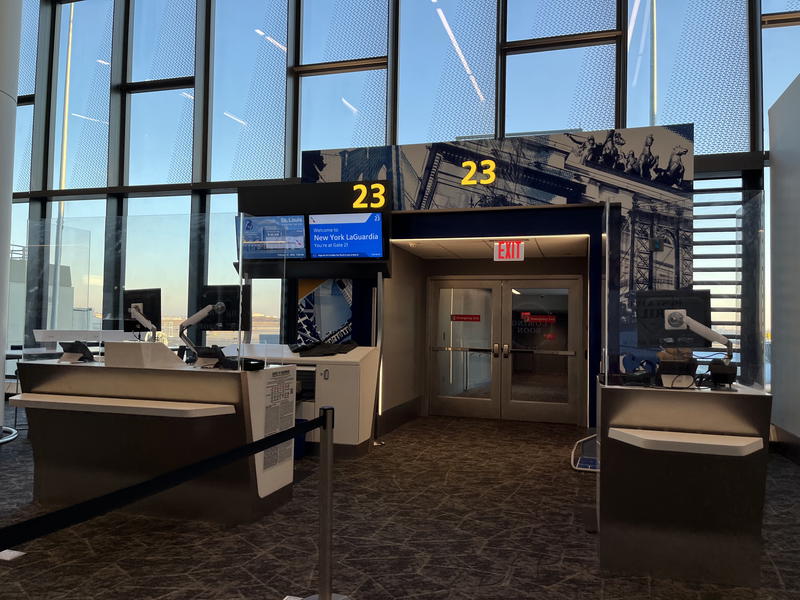
How can I learn more about travel hacking?
To learn more about travel hacking, check out our guides to things like how to make your vacations longer by working remotely while traveling and learning more about websites and apps that can help you travel better .
To learn some hacks we’ve used, check out some features like this podcast we were on and this epic guide of ways to save money while traveling .
We hope you think travel hacking is as much fun as we do!
You may also like
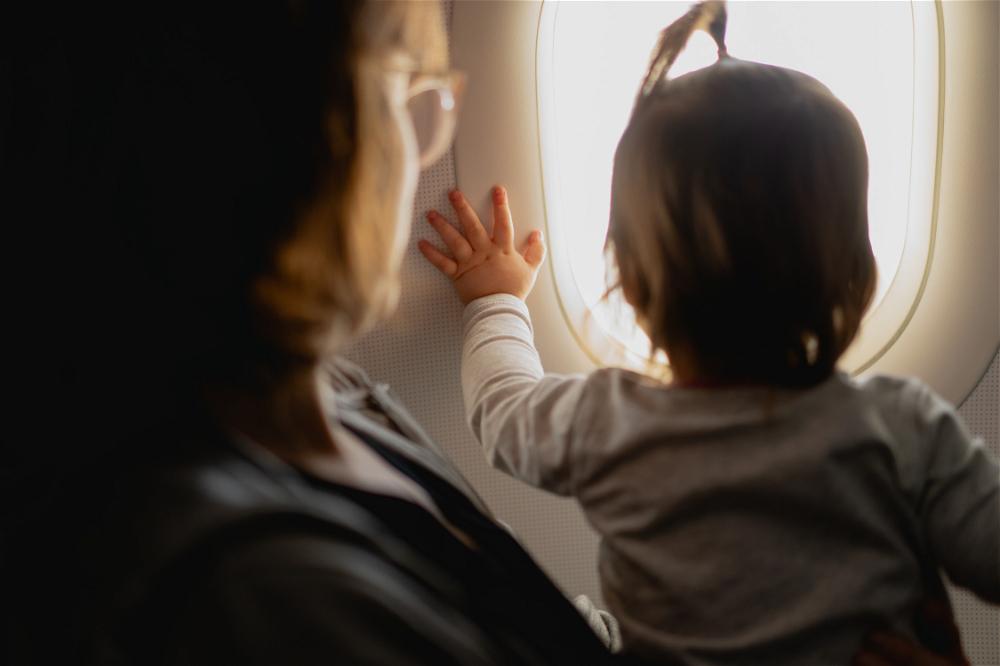
11 Things to Do If Your Baby or Toddler Gets Sick While Traveling
What do you do if your child gets sick on vacation? Find out the things to do when a baby or toddler gets a fever or illness on a trip, travel abroad or a road trip.

Google Fi for Long-Term Travel: Will It Work for Me?
For traveling long-term, is Google Fi the best option for a phone plan? See why Google Fi is our choice for international cell service, calls, texts, data and tethering, in this guide.

The 17 Most Expensive Travel Destinations (Are They Worth It?)
Are the most expensive travel destinations in the world worth the trip? Let’s see the priciest places to take vacations to, and if you should spend the money to go.
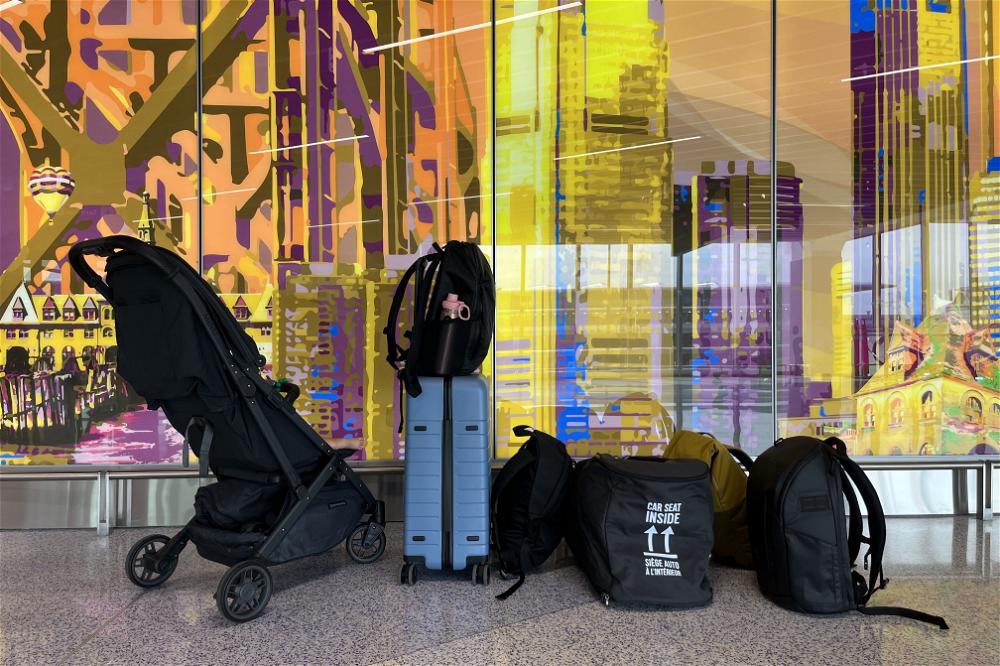
Essential Packing Checklist for an International Trip with a Toddler
Ready for an international travel packing list for a toddler? Use this packing checklist for toddler essentials: what to pack, for overseas flights and long trips abroad.

The Best Cities For Working Remotely and Traveling
Where are the best places to work remotely in 2024? The following list will help with how to find good cities for working remotely in the new year.

19 Sustainable Travel Tips for an Eco-Friendly Mindset
Learn how to travel more sustainably! We’re conserving resources and traveling healthier with our favorite eco-friendly products and sustainable travel tips.

Hei ! We’re Becca & Dan.
We created this blog to share some of the knowledge and experience that we have around travel , remote work , photography and beyond!
We're currently watering our plants.
Join the club
You’ll get emails with our latest articles, tips, advice and so much more! You won't find this content anywhere else!
This website may contain affiliate links. We earn a small commissions when you purchase via those links — and it's free for you. It's only us (Becca & Dan) working on this website, so we value your support! Read our privacy policy and learn more about us .
Among other programs, Half Half Travel is a participant in the Amazon Services LLC Associates Program, an affiliate advertising program designed to provide a means for us to earn fees by linking to Amazon.com and affiliated sites.
- Credit cards
- View all credit cards
- Banking guide
- Loans guide
- Insurance guide
- Personal finance
- View all personal finance
- Small business
- Small business guide
- View all taxes
You’re our first priority. Every time.
We believe everyone should be able to make financial decisions with confidence. And while our site doesn’t feature every company or financial product available on the market, we’re proud that the guidance we offer, the information we provide and the tools we create are objective, independent, straightforward — and free.
So how do we make money? Our partners compensate us. This may influence which products we review and write about (and where those products appear on the site), but it in no way affects our recommendations or advice, which are grounded in thousands of hours of research. Our partners cannot pay us to guarantee favorable reviews of their products or services. Here is a list of our partners .
6 Confessions of an Avid Travel Hacker

Many, or all, of the products featured on this page are from our advertising partners who compensate us when you take certain actions on our website or click to take an action on their website. However, this does not influence our evaluations. Our opinions are our own. Here is a list of our partners and here's how we make money .
It starts innocently enough. You open one travel rewards credit card to help subsidize an upcoming trip. While on that trip, the flight attendant announces that you can earn enough miles for two round-trips with a new card, and you jump at the chance to apply in-flight.
From there, you’re hooked. Once you learn how to harness the power of points and miles for travel , you want to do it more and more often. You join the ranks of rewards optimizers and fall down the proverbial rabbit hole. One card leads to another, and before you know it, you’ve amassed a large collection of loyalty accounts, credit cards and free hotel night certificates. You might even wind up with elite status in multiple programs.
From the diary of a self-proclaimed “travel hacker,” here are six realizations you may also have if you fall head-over-heels for points and miles.
1. It's hard to go back
After you've learned how to score lie-flat business class tickets to fly across the world for "free" using your points and miles, it's hard to go back to that cramped coach seat that barely reclines. Once you get accustomed to luxurious hotel suites , that standard room seems sad by comparison.
On those occasions when you can’t score a seat toward the front of the plane, or when you get stuck in a small hotel room with no view, travel disappointment kicks in. If your children are sometimes lucky recipients of the fruits of your travel hacking, their disappointment hits you doubly hard.
“Normal” just doesn’t cut it after you’ve experienced the finer things in life.
» Learn more: How to choose a travel credit card
2. Trips with non-travel hackers can be tough
When you're flush with points, it's easy to book that expensive hotel without a second thought. For your friends who're shelling out cash, it's a different story. You don’t want to be that friend, so you agree to the modest select-service hotel on your weekend away together. But inside, you suffer. (See point No. 1.)
If a group of friends suggests a ski trip, you shudder at the thought of booking a condo. Sure, you can all enjoy a shared space, but you can't use your hotel points to cover the cost and will — gasp — have to pay in cash. Then, your friends have the nerve to complain when you want to charge everyone's lift passes on your credit card to get the points, and ask them to pay you back in cash.
3. Home life FOMO is inevitable
When you're using your stash of points and miles to take off on weekend adventures, that means you're often not at home. Your neighbors stop inviting you to their BBQs because “you can never come anyway." The kids miss soccer practice, yard work piles up, and your suitcase remains perpetually half-packed on the floor. Your cat gives you “the look” every time she realizes you’re getting ready to leave again.
But all that is forgotten when you spot a wide-open three-day weekend on your calendar. The travel bug strikes and plans are quickly made. After all, who wants to pick weeds when you can check out the Japanese Gardens in Portland or walk through the tulips in Amsterdam?
» Learn more: Why you should resist the temptation to hoard your miles
4. Trip planning can be harder than it needs to be
For non-travel hackers, planning flights and hotels for a trip probably involves light research and a few booking platforms. Non-travel hackers book the cheapest flight, find a reasonable hotel in a good location, and call it a day.
For travel hackers, though, planning a trip comes with endless decisions, like:
Do I want to use my free night certificates that expire in a few months, or should I pay cash to earn triple points with the latest promo ?
Should I use a modest number of Avianca LifeMiles to book a just-OK flight, or should I use a larger number of United miles to book a flight with a better travel time?
Should I use my rewards to book through a credit card travel portal, or should I transfer those miles to a partner airline?
Should I pay a little bit more to book my room directly through the hotel so I’ll earn my elite night credit ?
Whew. Talk about analysis paralysis.
5. Destinations can become secondary to maximizing value
When your cup runneth over with hotel points and certificates, the travel planning process can work backward.
Rather than first thinking about where you'd like to go and then figuring out accommodations, you start with the hotel. Which cities have a nice IHG property where I can get the best value out of my free night certificates? Where are the best Hyatts to use my suite upgrade awards and enjoy my status to the fullest?
And when you have a pile of airline miles, it’s tempting to think first about what routes are best on that airline from your local airport.
You may have thought that you wanted to take a scenic trip to the Scottish Highlands. But now, instead, you really want to head to Chicago to get the best possible hotel experience at the best possible value. Or … do you?
» NEW: NerdWallet’s airline partner award bookings tool
6. You'll have constant travel envy
Enthusiasts of many hobbies are known to seek each other out and build a community, and travel hacking is no different. Once you get hooked on points and miles, you’ll find you have a bunch of new friends to nerd out with.
And no matter how much you travel, someone in your circle is always traveling more. A whole lot more. When you're proud of your week in Hawaii, someone else is doing a month-long round-the-world trip , stopping in England, France, Japan and the Maldives . And they’re plastering pictures all over your social feed. Every. Single. Day.
Then, of course, you're compelled to book more travel for yourself. Ah, the vicious cycle of travel hacking.
How to maximize your rewards
You want a travel credit card that prioritizes what’s important to you. Here are some of the best travel credit cards of 2024 :
Flexibility, point transfers and a large bonus: Chase Sapphire Preferred® Card
No annual fee: Wells Fargo Autograph℠ Card
Flat-rate travel rewards: Capital One Venture Rewards Credit Card
Bonus travel rewards and high-end perks: Chase Sapphire Reserve®
Luxury perks: The Platinum Card® from American Express
Business travelers: Ink Business Preferred® Credit Card

on Chase's website
1x-5x 5x on travel purchased through Chase Travel℠, 3x on dining, select streaming services and online groceries, 2x on all other travel purchases, 1x on all other purchases.
60,000 Earn 60,000 bonus points after you spend $4,000 on purchases in the first 3 months from account opening. That's $750 when you redeem through Chase Travel℠.

1.5%-5% Enjoy 5% cash back on travel purchased through Chase Travel℠, 3% cash back on drugstore purchases and dining at restaurants, including takeout and eligible delivery service, and unlimited 1.5% cash back on all other purchases.
Up to $300 Earn an additional 1.5% cash back on everything you buy (on up to $20,000 spent in the first year) - worth up to $300 cash back!

on Capital One's website
2x-5x Earn unlimited 2X miles on every purchase, every day. Earn 5X miles on hotels, vacation rentals and rental cars booked through Capital One Travel, where you'll get Capital One's best prices on thousands of trip options
75,000 Enjoy $250 to use on Capital One Travel in your first cardholder year, plus earn 75,000 bonus miles once you spend $4,000 on purchases within the first 3 months from account opening - that’s equal to $1,000 in travel.

Reward Travel 101: Beginner’s Guide to Free Flights & Hotels
R.J. Weiss, CFP®
- Updated July 25, 2024
Reward travel has saved me tens of thousands of dollars. Just as important, it’s given my family incredible travel experiences that we wouldn’t have otherwise been able to afford.
With this guide, you’ll have all the knowledge and tools you need to start leveraging reward travel like a pro and create unforgettable travel memories yourself.
Here’s what we’ll cover :
- What is reward travel?
- Reward travel and credit Impact
- How to earn points and miles
- The best first credit cards for reward travel
- Tips for getting free flights with credit card points
- How to maximize your hotel points to get the most free nights
- My favorite award redemptions of all time
And lastly, we’ll answer some of the most common questions asked by new reward travelers.
What Is Reward Travel?
Reward travel is the art and science of unlocking free or significantly discounted travel experiences by strategically earning and redeeming reward points and airline miles.
This concept encompasses various techniques, including leveraging credit card rewards, airline loyalty programs and hotel rewards to make your travel dreams a reality.
Since some credit cards offer as much as 2% cash-back, you might wonder whether it makes sense to just use those rewards for travel. The real benefit of using points and miles comes from point redemption values that can often reach 3 cents per point or more, and sometimes even go up to 10 cents per point.
Credit cards that offer generous welcome bonuses and reward points for everyday spending are the foundation of reward travel. By using credit cards strategically, you can accumulate valuable points that can be redeemed for flights, accommodations and other travel-related expenses.
It’s not uncommon for a single credit card signup bonus to cover the cost of an international flight, making this a game-changer for many travelers.
In addition, you can also earn points or perks by taking advantage of airline loyalty programs or hotel rewards programs. By staying loyal to a specific airline or hotel brand, you can earn rewards points or perks such as free upgrades, lounge access and more.
In essence, successful reward travel is about understanding the ins and outs of the rewards ecosystem and using that knowledge to make the most of every travel opportunity.
How Reward Travel Impacts Your Credit and Finances
If you’re considering taking advantage of reward travel, it’s crucial to understand how it can impact your credit score and overall financial health.
Your credit score is a three-digit number that indicates your creditworthiness and helps lenders evaluate your risk as a borrower.
Several factors determine your credit score, including:
- Payment history (35%)
- Credit utilization (30%)
- Length of credit history (15%)
- New credit (10%)
- Types of credit in use (10%)
Signing up for credit cards is closely tied to many factors that carry the most weight in your credit score. Therefore, it’s not whether this practice will affect your credit score but how it will affect it.
To ensure a boost to your credit score while enjoying travel rewards, remember to:
- Choose credit cards you plan to keep long-term.
- Aim to hit the minimum spend requirement without overspending.
- Keep your credit utilization less than 30%.
- Space out new credit card applications.
- Pay your balance in full using auto-pay to avoid missing payments.
Much of this is familiar to anyone who has managed their credit responsibly. But if you’re new to managing your credit, check out our article titled “ How Reward Travel Impacts Your Credit and Finances ” for a more in-depth guide.
How to Earn Points and Miles
Points and miles are the currencies of the reward travel world. When you know how to earn them efficiently, you’ll be well on your way to ticking off dream destinations from your travel bucket list.
Fortunately, with the right strategies, you can earn points and miles toward your dream vacation without spending a fortune.
The top strategies for earning points include :
- Credit card sign-up bonuses . By strategically choosing a card with a great bonus, you could find yourself enjoying a premium flight experience or a free hotel stay.
- Optimizing your spending through bonus categories . Many credit cards offer bonus rewards for specific purchases, such as travel or dining. Using the right card for each purchase can help you accumulate points faster.
- Shopping portals . You can earn rewards at popular online stores. Many credit card issuers, airlines and hotels have their own shopping portals.
- Maximize points earned while booking travel . Frequent travelers can optimize their rewards by taking advantage of loyalty programs offered by airlines and hotels.
- Refer friends and family to credit cards . Referring friends and family, including a spouse, to credit cards can be a rewarding way to earn additional points or miles.
- Open a business credit card . Business credit cards often have some of the most lucrative signup bonuses, making them an essential part of beginner reward travel.
- Earning points with bonus transfers . Bonus transfers can be a powerful tool for quickly reaching your rewards goals. Many credit card issuers and loyalty programs offer periodic promotions, where you can transfer your points or miles to partner programs with a bonus.
- Promotions and offers . Promotions and offers can encompass both limited-time and ongoing incentives, which involve activities such as adding authorized users, making purchases at specific merchants, linking your loyalty accounts with certain merchants, or completing one-time tasks, such as meeting a spending threshold within a specified timeframe. These offers vary by credit card issuer and card type.
By implementing these strategies, you’ll effectively accumulate rewards and transform them into unforgettable travel experiences.
To learn more about these strategies, read our detailed guide on earning travel rewards: Earning Points & Miles: The Best Ways to Earn Travel Rewards .
The Best First Credit Cards for Reward Travel
As a beginner, choosing a card that offers long-term benefits, has a quality signup bonus, and has reasonable minimum spending requirements is essential.
Our top choices for first-time reward travelers include the Chase Sapphire Preferred Card and the Capital One Venture Rewards Credit Card, among other outstanding credit card offers we’ve curated for your convenience.
The Chase Sapphire Preferred Card offers a reasonable annual fee of $95, making it a great value. It also provides a consistently great signup bonus worth hundreds of dollars in travel rewards.
With this card, you can redeem your points at a rate of 1.25 within the Chase travel portal, or transfer your points to various airline and hotel partners (including popular brands such as United Airlines, Southwest Airlines and Hyatt Hotels).
The Capital One Venture Rewards Credit Card is another excellent option for beginners.
With this card, you can earn unlimited 2X miles per dollar spent on every purchase, making it easy to accumulate rewards quickly. It also offers a consistently high signup bonus, which can be worth hundreds of dollars in travel credits.
One unique feature of the Capital One Venture Rewards Credit Card is that it allows you to use points to erase purchases categorized as travel on your credit card without using a travel portal.
You can then benefit from a larger sign-up bonus and other travel perks the card offers, like lounge access, TSA credits and the option to transfer points to travel partners for potentially higher value. This combination of features makes the Venture card more appealing for travel enthusiasts compared to a 2% cash-back card.
Overall, both cards offer flexibility in using your rewards, making them worthwhile even if you don’t have a specific travel destination in mind.
We’ve partnered with CardRatings to give our readers access to top credit card products. By collaborating with CardRatings, we ensure all data is accurate regarding the credit card products available, as it changes frequently. To discover these and other top travel card offers, see their “ Best Travel Cards ” page.
Airline Miles for Beginners
If you’ve never done it, booking flights with points can feel intimidating. With so many airline programs and transfer partners, knowing where to start and how to get the most value for your points can be challenging.
So let’s start with the basics. There are two main ways to use your points to book flights:
- Through an airline’s mileage program . Using an airline’s mileage program means you redeem points or miles earned through that airline’s loyalty program. Each airline has its own award chart and pricing, which determines how many miles you need to save for a free flight based on the destination and class of service.
- Using fixed-value points . These points hold a set value, typically measured in cents per point. You can use these points to book flights or other travel expenses at a fixed redemption rate. For example, if you have 50,000 Chase Ultimate Rewards points and the Chase Sapphire Reserve , you can use them to book a flight at a rate of 1.5 cents per point, which would be worth $750 towards the cost of the flight.
When trying to maximize the value of your travel rewards, booking flights with miles can offer outsized rewards compared to fixed-value points. However, there are certain situations where fixed-value rewards can come in handy.
At the same time, booking flights with reward points is more challenging than booking flights with fixed-value rewards, as award space availability can be limited.
When you’re ready to book your flight, check out our step-by-step guide to redeeming points for airfare . Plus, see our rankings of the best free tools for award flight searches , which include popular tools like PointsYeah and Roame.Travel which can save you hours finding award avaialbity.
Exploring Your Accommodation Options: Hotels, Vacation Rentals and More
Booking accommodations like hotels, vacation rentals, and other types of lodging with reward points can be a great way to save money or even splurge on a luxurious stay.
Similar to flying, when it comes to redeeming points for lodging, there are two primary methods:
- Hotel loyalty programs.
- Fixed-value rewards.
Earning points by transferring them from credit card companies is one of the fastest ways for you to book hotel stays. For example, you can earn a signup bonus with a credit card issuer like Chase, then transfer the points to a hotel loyalty program like Hyatt.
This allows you to earn points fast and potentially stay at a higher-end property than you would be able to afford if paying with cash.
Additionally, some hotels offer co-branded credit cards that allow you to earn points directly with the hotel, and often offer free nights or room upgrades.
Using fixed-value rewards to book hotels offers flexibility to those who prefer to avoid committing to a specific hotel chain. The Chase travel portal, for example, allows you to book hotels at a rate of 1.25 cents per point with a Chase Sapphire Preferred card or 1.5 cents per point with the Chase Sapphire Reserve .
Capital One offers many redemption options, including booking hotels through deal sites like Priceline or vacation rental sites like Airbnb.
After making bookings, which can be done outside of Capital One’s travel portal, you can use your points to effectively “erase” those purchases from your account statement. The key is that they must be categorized as travel.
Remember that leveraging the power of points to create meaningful travel experiences is the core idea of reward travel. Whether you’re looking to save money or splurge on a luxurious stay, booking accommodations with points is an excellent way.
Check out our Booking Hotels with Points Made Easy guide for more tips, and read our PointsYeah review —a free tool that lets you search for hotels accepting award points in a specific area.
Discover My Favorite Reward Redemptions
Curious about the real-world potential of reward travel? Don’t miss my article on my favorite reward redemptions .
This piece dives deep into some of the most incredible travel experiences I’ve had, all thanks to strategically using points and miles. From first-class flights to five-star resorts and unforgettable family vacations, these examples will give you a glimpse of what’s achievable.
Let this article inspire you, whether you’re just starting out or looking to take your reward travel to the next level.
Reward Travel FAQs
When leveraged responsibly, reward travel should not ruin your credit. In fact, it can even improve your credit score. Ensure you pay your credit card balance in full every month, keep your credit utilization low, and avoid applying for too many cards in a short period.
The time it takes to earn enough points for a free flight or hotel stay depends on various factors, such as your spending habits, the credit card you choose, and most importantly, how you plan to use the rewards. With the right strategy and card, you could potentially earn enough points for a free flight or hotel stay within a few months.
The Chase Sapphire Preferred card is most often recommended for beginners. The card offers flexible rewards, reasonable annual fees and a valuable signup bonus. But make sure to check out the best current offers for other cards that might match your travel goals, in addition to making sure you’re a good fit to hit the minimum spend and having a good enough credit score.
Unlock Your Next Adventure
Reward travel is all about leveraging the power of points and rewards to save money and create meaningful travel experiences.
To dive deeper into specific topics, be sure to check out our related posts:
- Reward Travel & Credit Impact
- Earning Points & Miles
- Choosing a Travel Rewards Credit Card
- Airline Miles 101
- Maximizing Hotel Loyalty Points and Programs
With these resources, you’ll have everything you need to take your reward travel strategy to the next level.
Happy travels!
Free Award Travel 101 Course
From international business class flights to nearly free family vacations, learn how to achieve it all with points and miles through our free 7-day email course.
We won’t send you spam. Unsubscribe at any time.
That’s a great post!
Well, I stumbled upon this well-detailed blog and now after going through it I have a better understanding of travel hacking. Thanks to the author for researching and curating a well-written top-notch piece of information.
Leave a reply Cancel reply
Your email address will not be published. Required fields are marked *
Comment Read our comment policy.
A Message From Our Founder
Welcome to The Ways To Wealth. I founded this site to help make a difference in people's lives by delivering objective, reliable advice and recommendations that help them make more money, save more money, and invest wisely.
- Money Management
- Debt Payoff
- About The Ways To Wealth
- Media & Advertising
- Privacy Policy
Latest Posts
Where the 70/20/10 budget shines, and when it falls short, lifepoints review 2024: our test reveals low earning potential, bright money review: pros, cons and expert analysis, 5 best apps for tracking your investments, bilt credit card: no longer makes sense for homeowners, popular tags.
- Reading Lists

IMAGES
COMMENTS
Step 2: Choose your rewards program (s) Once you've determined your travel goals, it's time to pick your loyalty programs. Start with your home airport; if you live in an airline hub city, that airline can be a good starting point. There's no sense in earning Southwest points if you live in Alaska.
To start travel hacking, you need to have a good credit score. Because this hobby involves opening credit cards, you must be a desirable candidate for a line of credit. The higher your score, the ...
Travel hacking can help you score free or discounted flights, hotel stays and more by strategically using rewards earned from credit cards. To get started, set a travel goal for yourself and ...
Step 1: Have your financial house in order. You must have a good credit score, pay off your existing debt, manage your current credit card balances, and live within your means. Start by understanding your credit score and its significance in the travel hacking process. A good credit score increases your chances of being approved for travel and ...
Step 1: Earning Points and Miles. The best place to get started travel hacking is learning how to maximize the points you earn. The faster you rack up points, the sooner you'll have enough for your dream vacation. Here are some of the simplest ways to accrue points as you learn how to travel hack.
Travel hacking is the concept of traveling for the most value for the least amount of out-of-pocket expenses. With travel hacking, you simply want to maximize where and what you do during your travel experiences. In an ideal world, you'd spend $0 in extra money to take the trip of a lifetime. There are a number of different components that ...
The word 'hacking' tends to imply some sort of shady activity, but the truth is that travel hacking - just like gym hacking - is about taking advantage of certain bonuses, offers and incentives to save yourself money. Not only is it completely legal, but it is actually encouraged. A big part of travel hacking is earning miles, reward ...
Travel hacking is the art of using various strategies, loyalty programs, and travel rewards to maximize the value of your trips. It involves leveraging credit card points, frequent flyer miles, hotel rewards, and other travel-related benefits to save money and earn free or discounted travel experiences. The Benefits of Travel Hacking.
Travel hacking or award travel is the skill of using miles and points to earn free or nearly free travel. There are a few main components that you'll need to understand to effectively earn and use points and miles to redeem for award flights and hotel nights. Understanding Credit Scores, Credit Cards, & the Different Types of Points and Miles.
The Ultimate Travel Hacking Guide. By Matthew Kepnes. September 19, 2011. It's never been easier to compare travel and accommodation prices using sites like Hipmunk, Kayak, or Google Flights, but ...
Step 1: Find a Good Offer. The first and most important step is to find a current promotional credit card offer. Offers are constantly changing, so it can be tough for me to recommend a specific offer, but these are some of my favorite new credit card offers.
Travel hacking isn't just about saving money; it's about enhancing your travel experience. This comprehensive guide unveils 101 essential travel hacking tips that will empower you to travel smarter, cheaper, and more efficiently in 2024. Whether you're a seasoned globetrotter or planning your first big trip, these insights will ...
Travel hacking is basically working around the existing rules set by airlines, credit cards, and hotels, and using them to your advantage to earn free travel - be it flights, stay or other upgrades. Travel hacking may sound complicated, like an art that needs to be mastered over time, but it's no rocket science and is very easy if done the ...
What are the Benefits of Travel Hacking. Travel hacking is a valuable resource for you to maximize savings on your travels. You don't have to be a frequent flyer to leverage rewards programs. More savings. You can significantly reduce expenses on flights, accommodations, dining, and transportation. Enriched experiences.
Travel hacking is earning rewards points from your credit card spending and redeeming those points for flights and hotels. Brian Kelly, founder of The Points Guy and an Erika Taught Me podcast guest , says the concept of travel points originated with frequent flyer programs, which were created to encourage loyalty to specific airlines.
Travel hacking is a way to get travel for a low cost, sometimes even for free. What most people mean when they say they "travel hack" is they're redeeming credit card points or frequent flier miles for flights, hotels, car rentals, and other travel costs. People who get good at it are known for booking luxe travel on the cheap.
09- Redeem at Chase Travel Portal. The other way you can redeem points is through the Chase travel portal. If you have the Chase Sapphire Reserve Card, your points get boosted from 1 cent per point to 1.5 cents per point. For simple math, let's say you have 200,000 Chase points sitting in your account.
But you can play that game too. Points and miles addicts play the game back and amass huge amounts of points/miles to travel for practically free (as seen in the movie Up in the Air ). A popular term these days to explain the game is Travel Hacking or Points Hacking. 1) Traveling for the least amount of money possible.
Travel hacking involves working within the existing rules set up by airlines, credit cards, and hotels, and using them to your advantage to earn free travel including flights, lodging, and other upgrades. Travel hacking is not a new thing. According to Wikipedia, the first frequent flyer program was created in 1972 for United Airlines.
Points & Miles 101: A Beginner's Guide to the Process. These days, there are a million and one ways to make budget travel a reality. From embracing the sharing economy to working overseas or volunteering abroad to hunting down cheap flights, traveling has never been easier or more affordable. Even with the pandemic-related price increases ...
Use debit or a prepaid card to buy a flight. A few ways to travel hack without a credit card might be to buy a flight with a debit card or prepaid gift card, and still get those miles to your account. You don't need a credit card to do this. Just make sure you're signed up for frequent flyer programs with each airline.
4. Trip planning can be harder than it needs to be. For non-travel hackers, planning flights and hotels for a trip probably involves light research and a few booking platforms. Non-travel hackers ...
This guide teaches you how to leverage reward travel like a pro and create unforgettable memories using points and airline miles. Discover the best ways to earn points and miles, the top credit cards for beginners, and how to get free flights and hotel stays. R.J. Weiss, CFP®. Updated July 25, 2024.